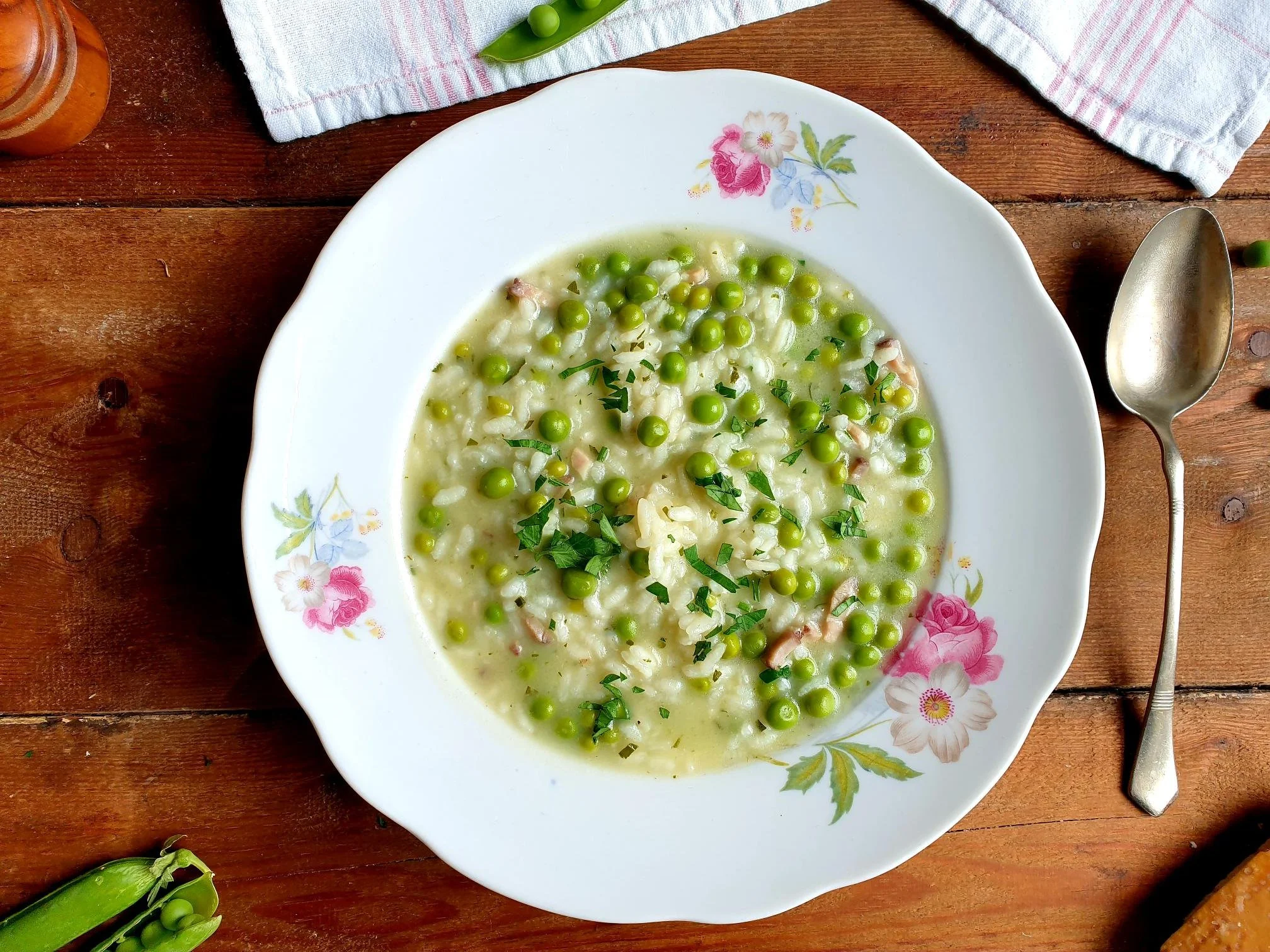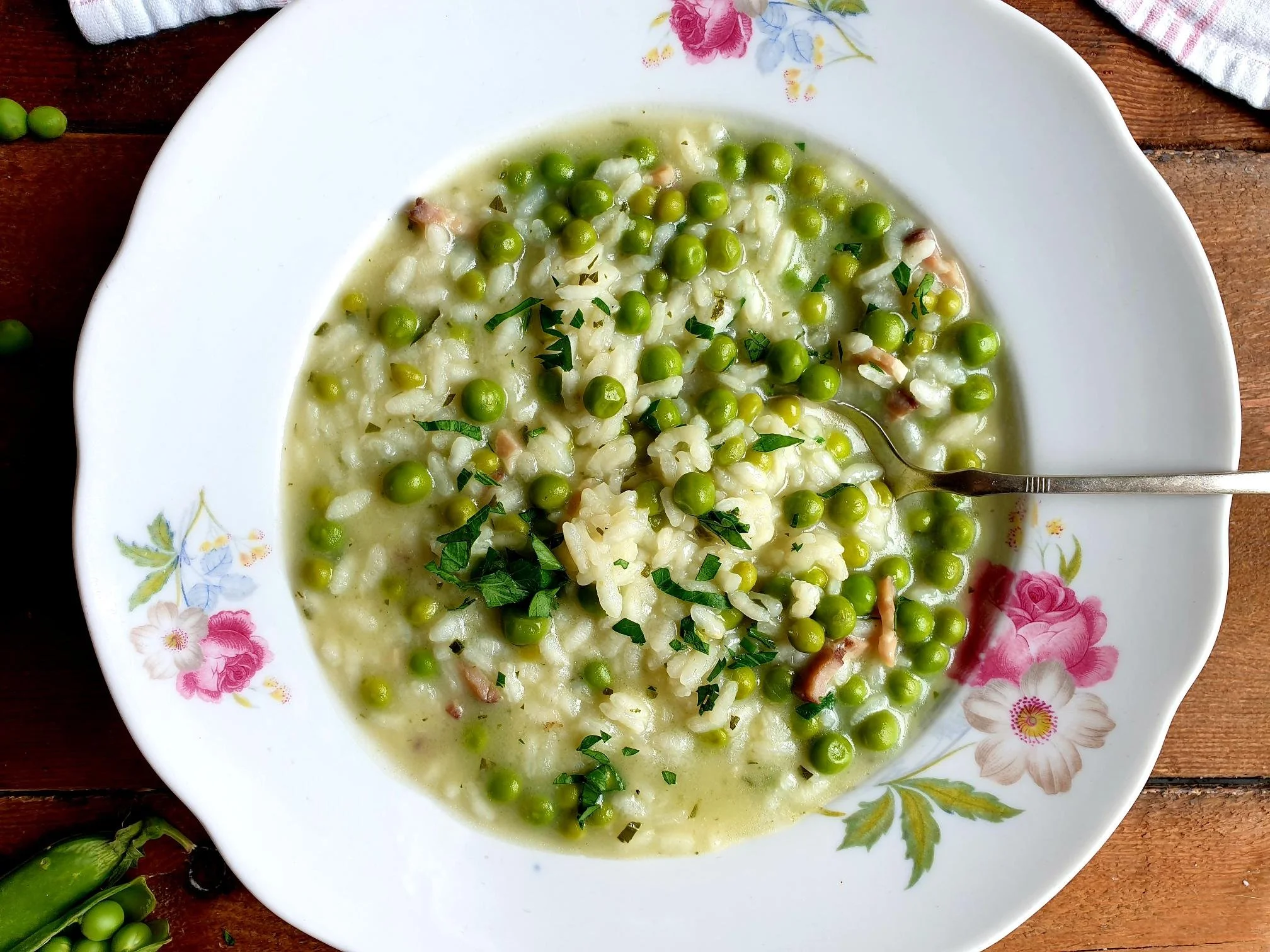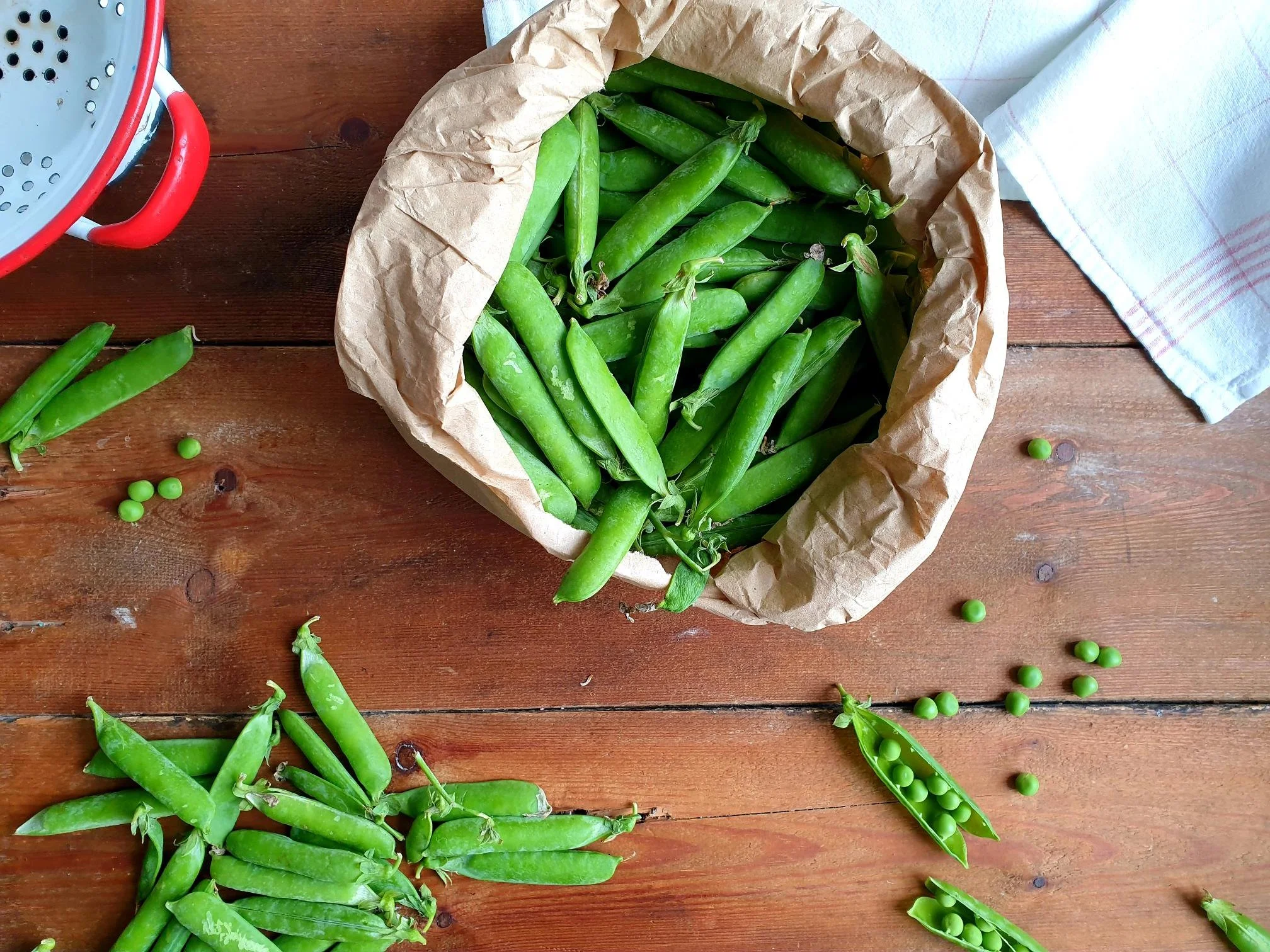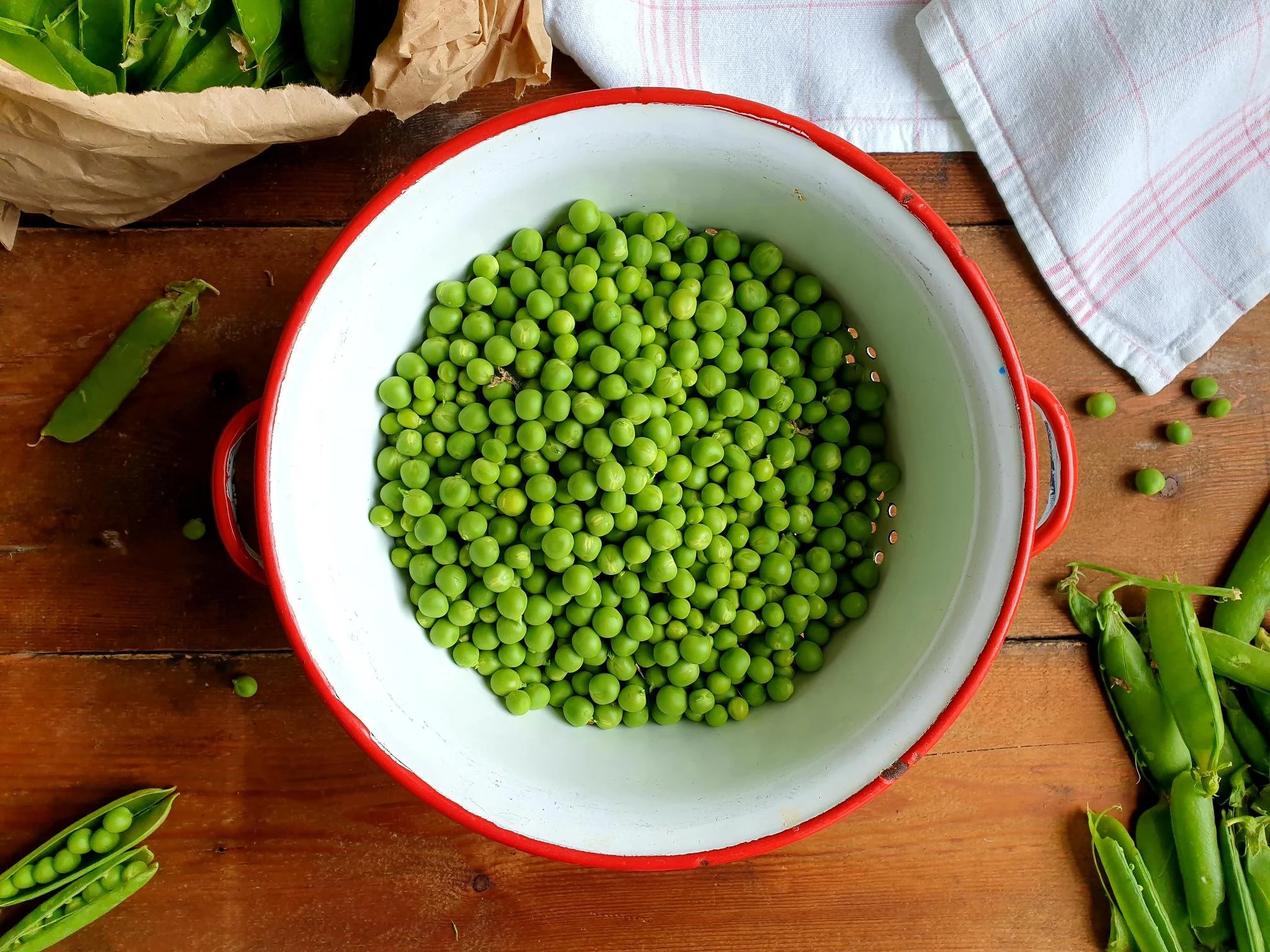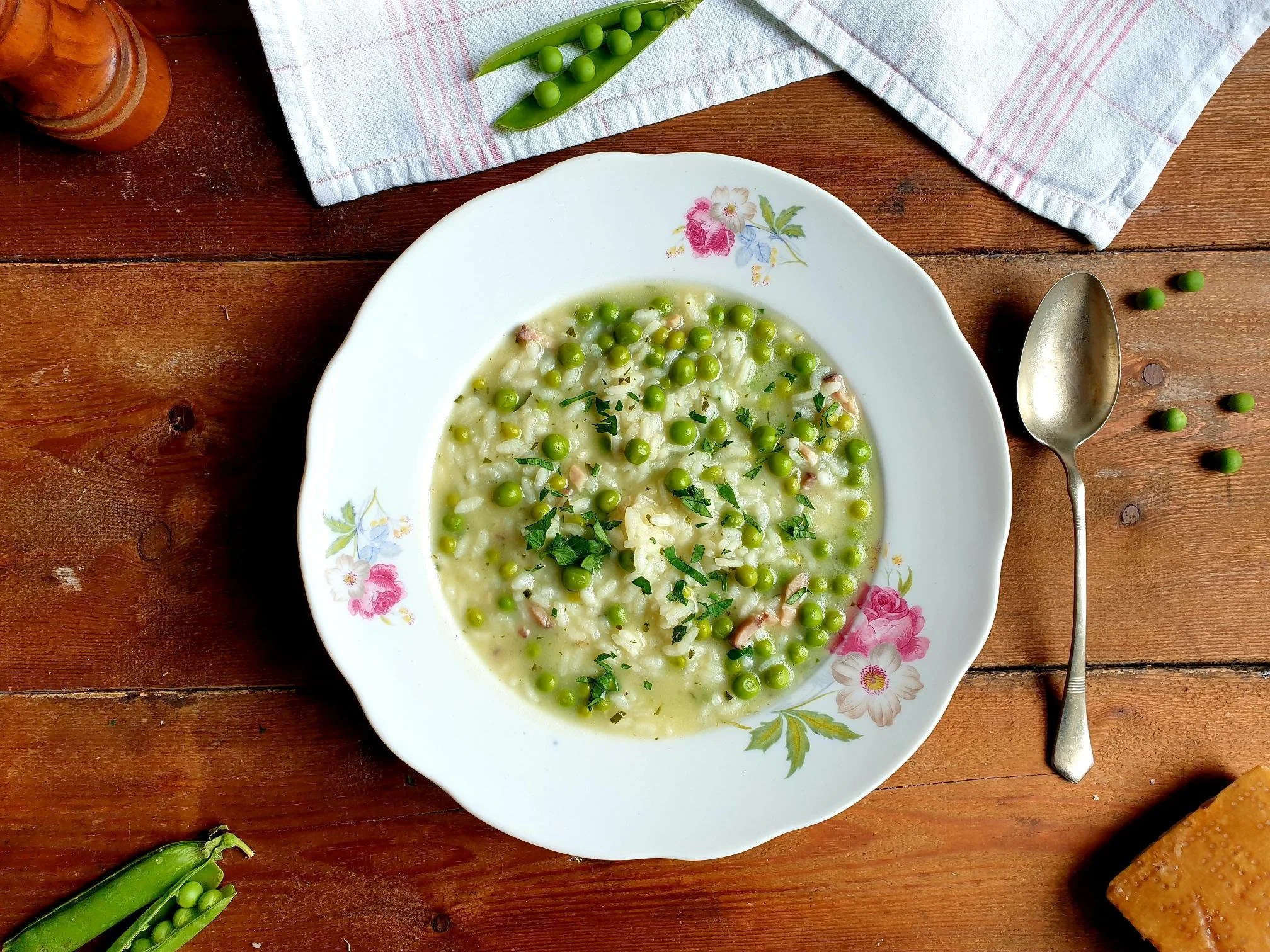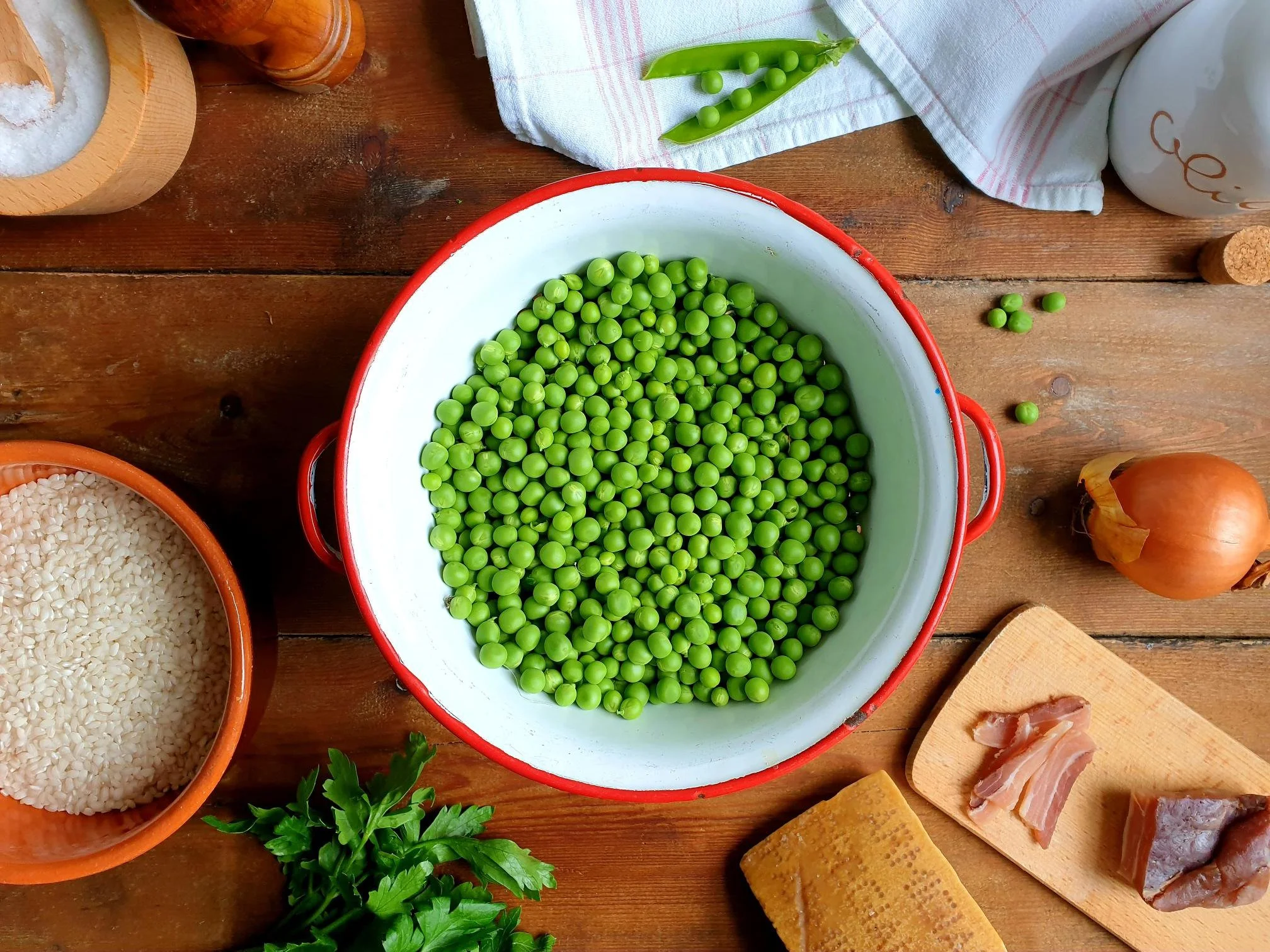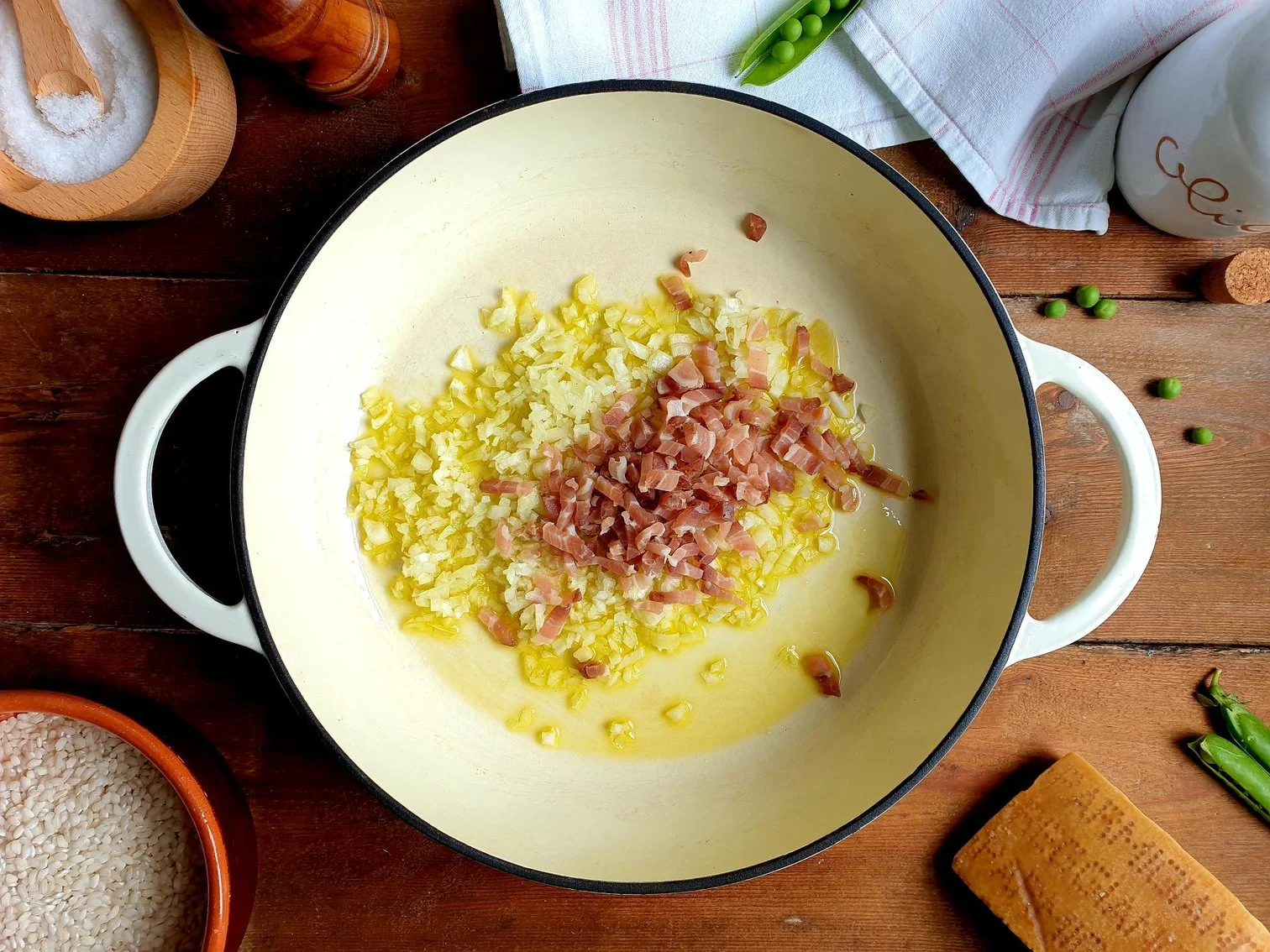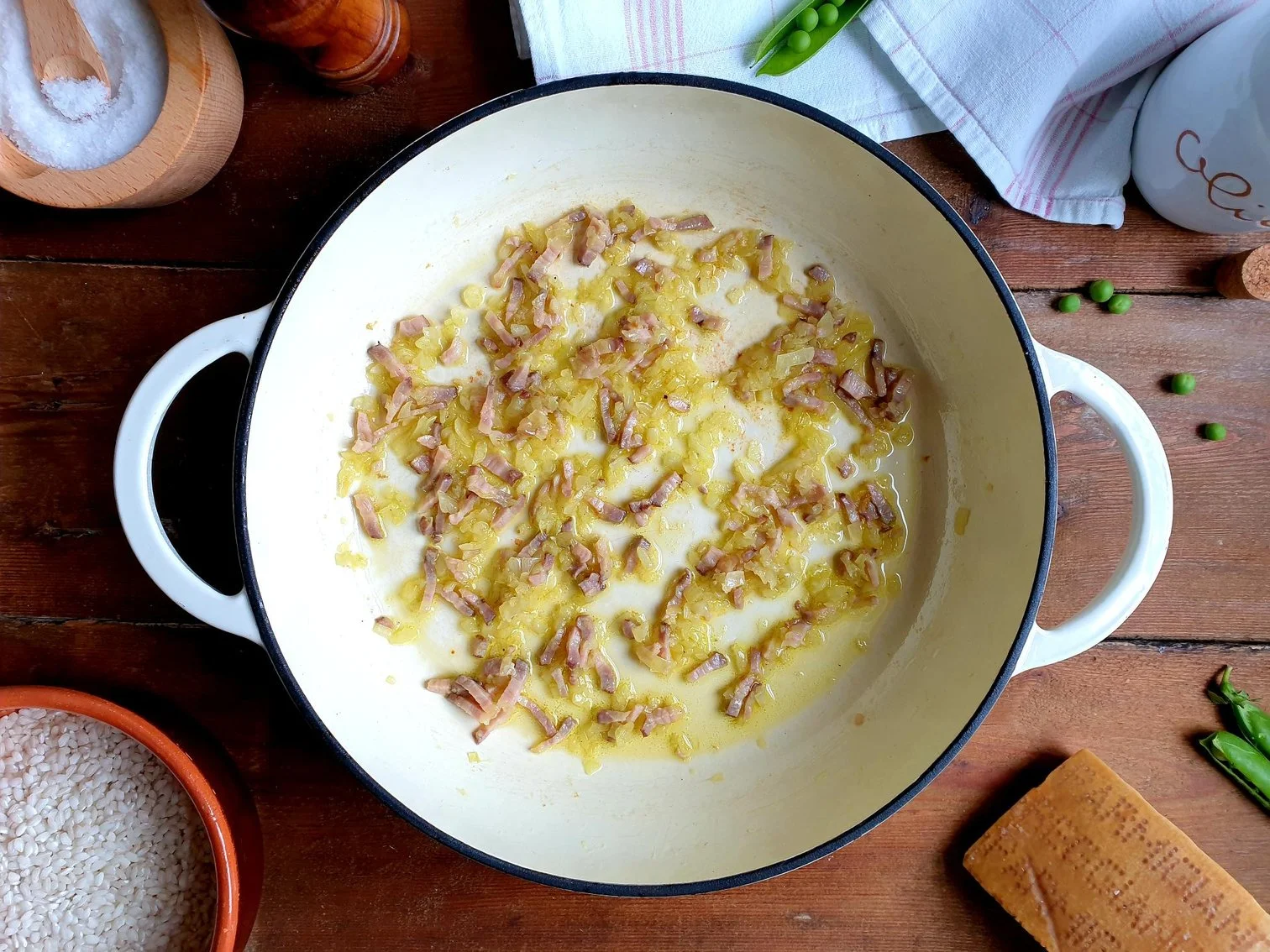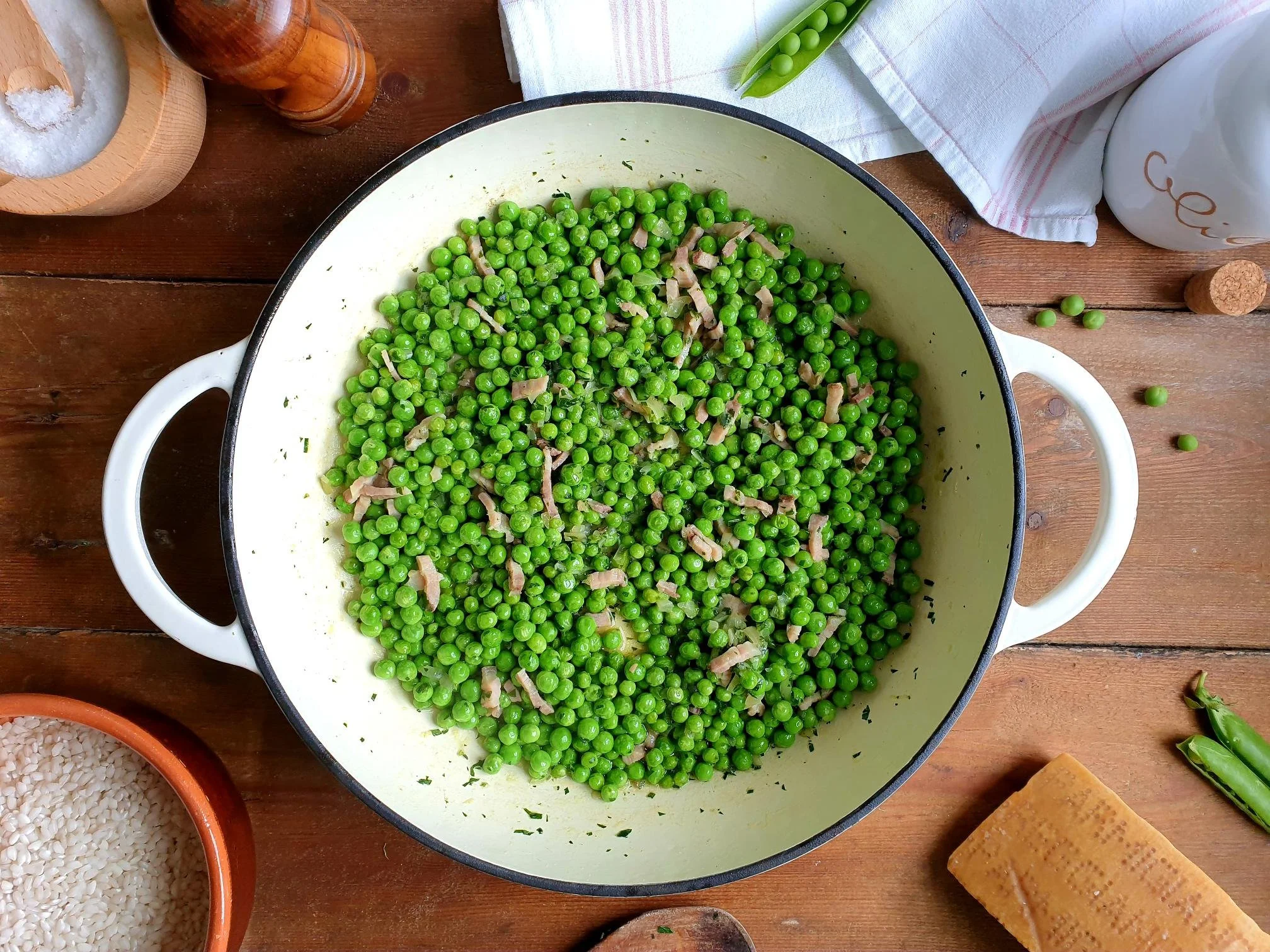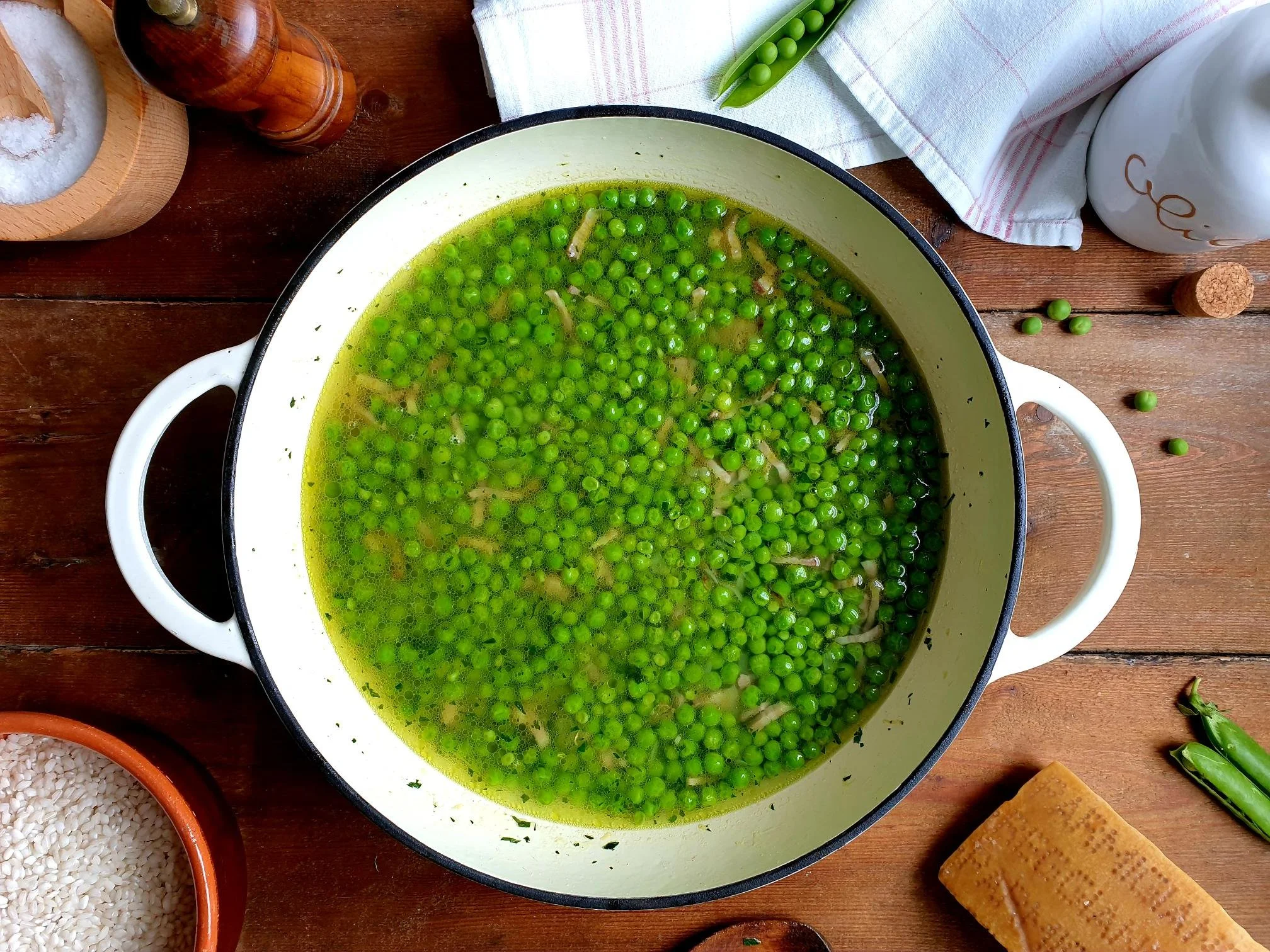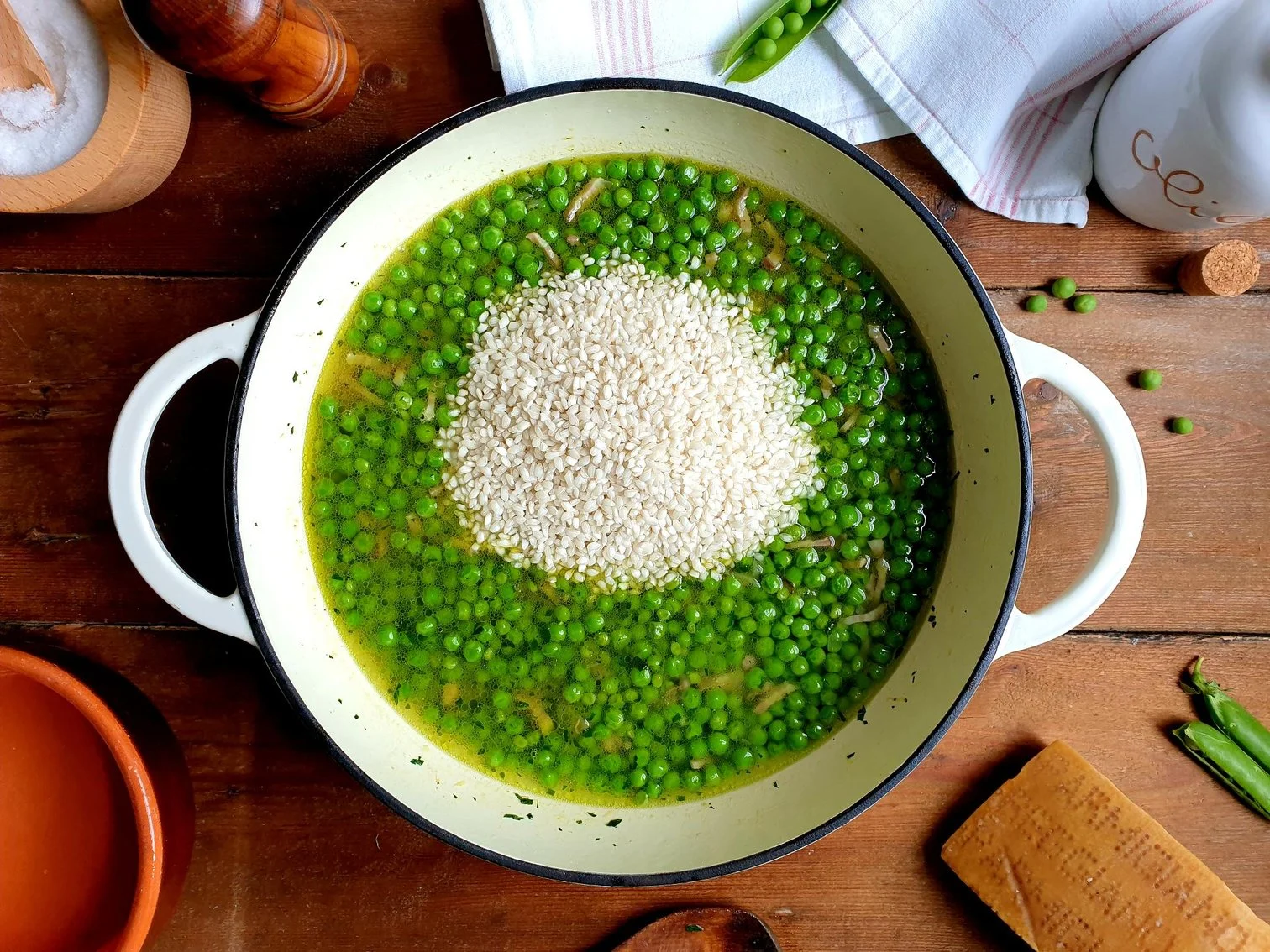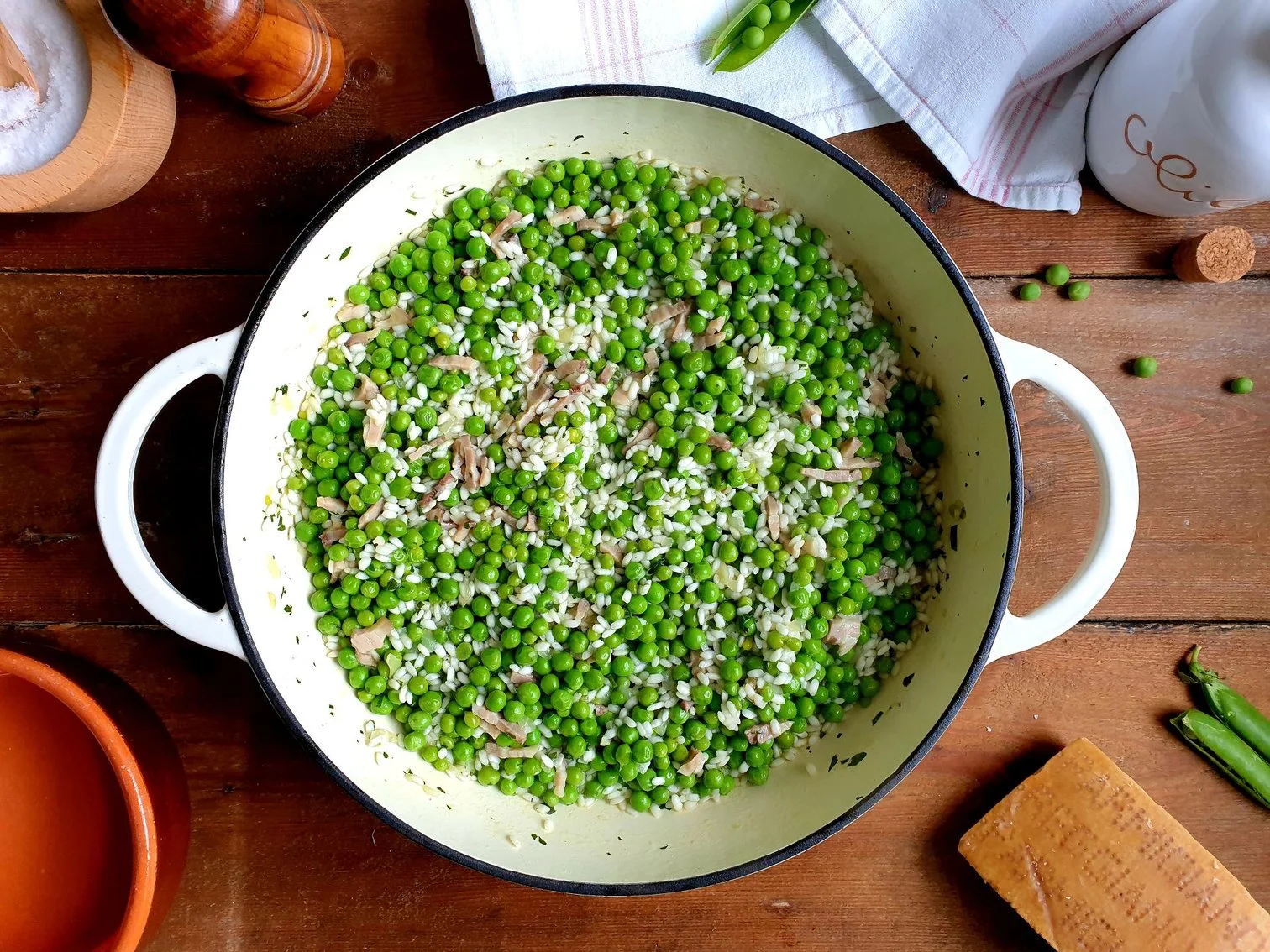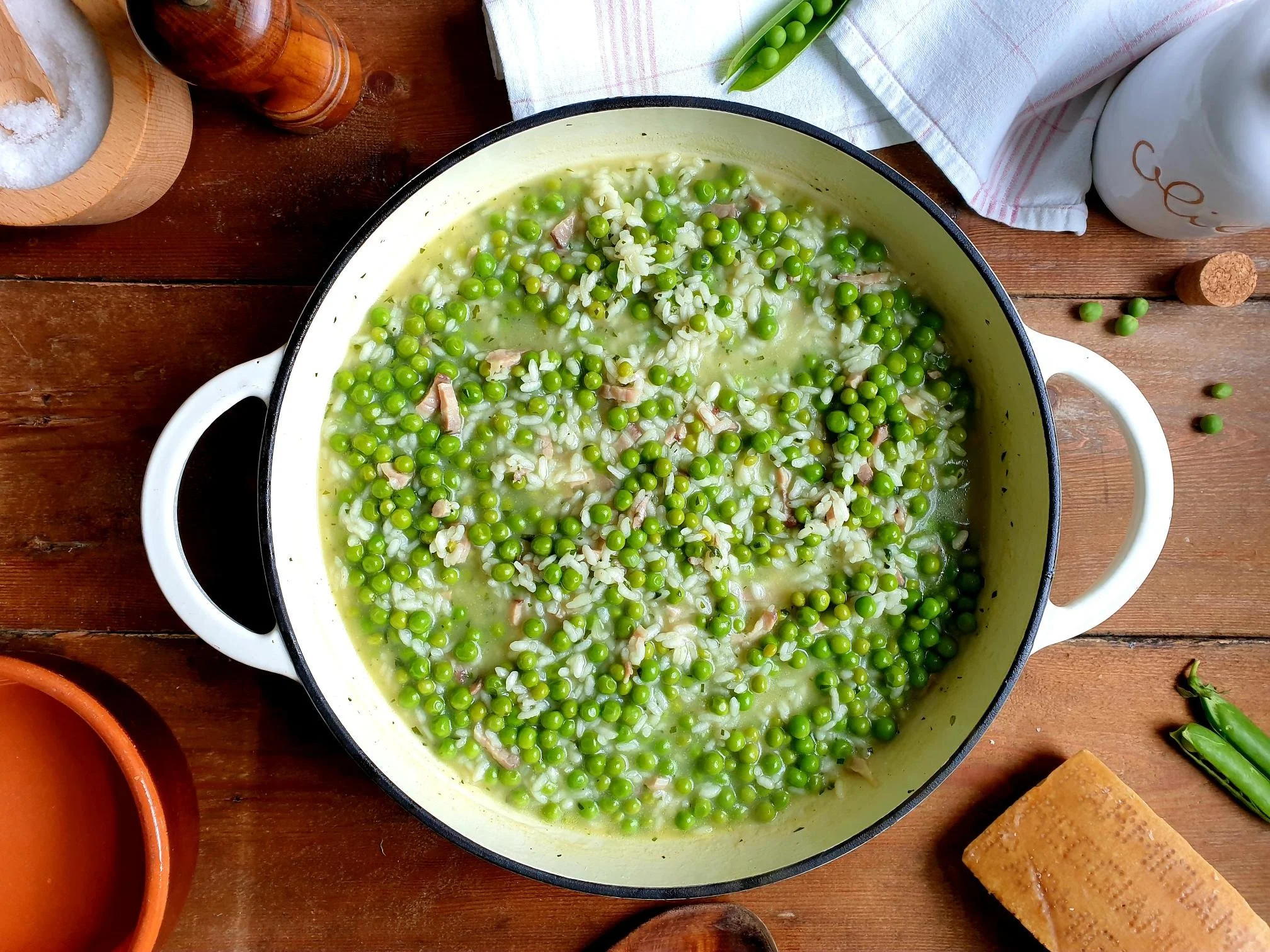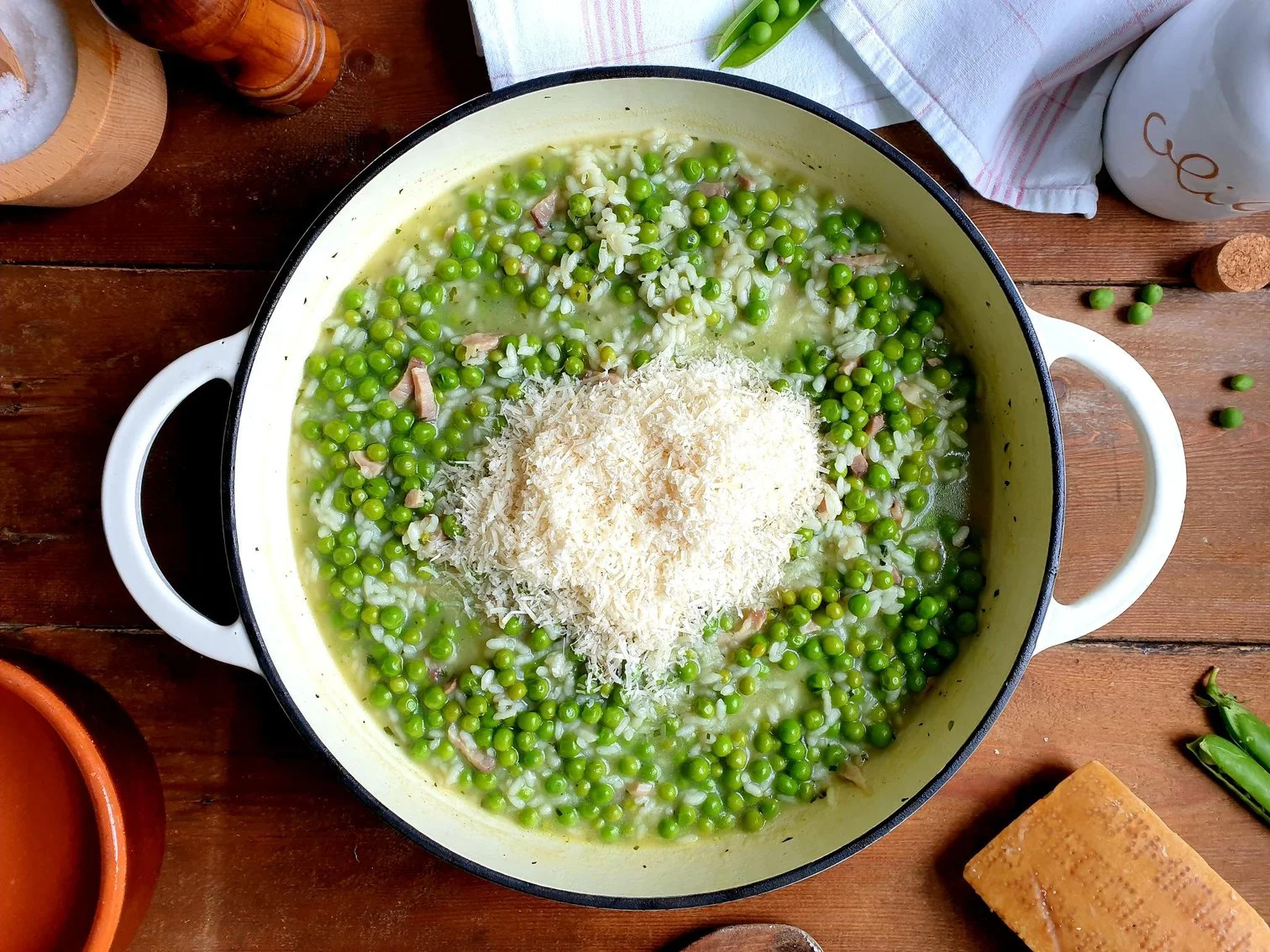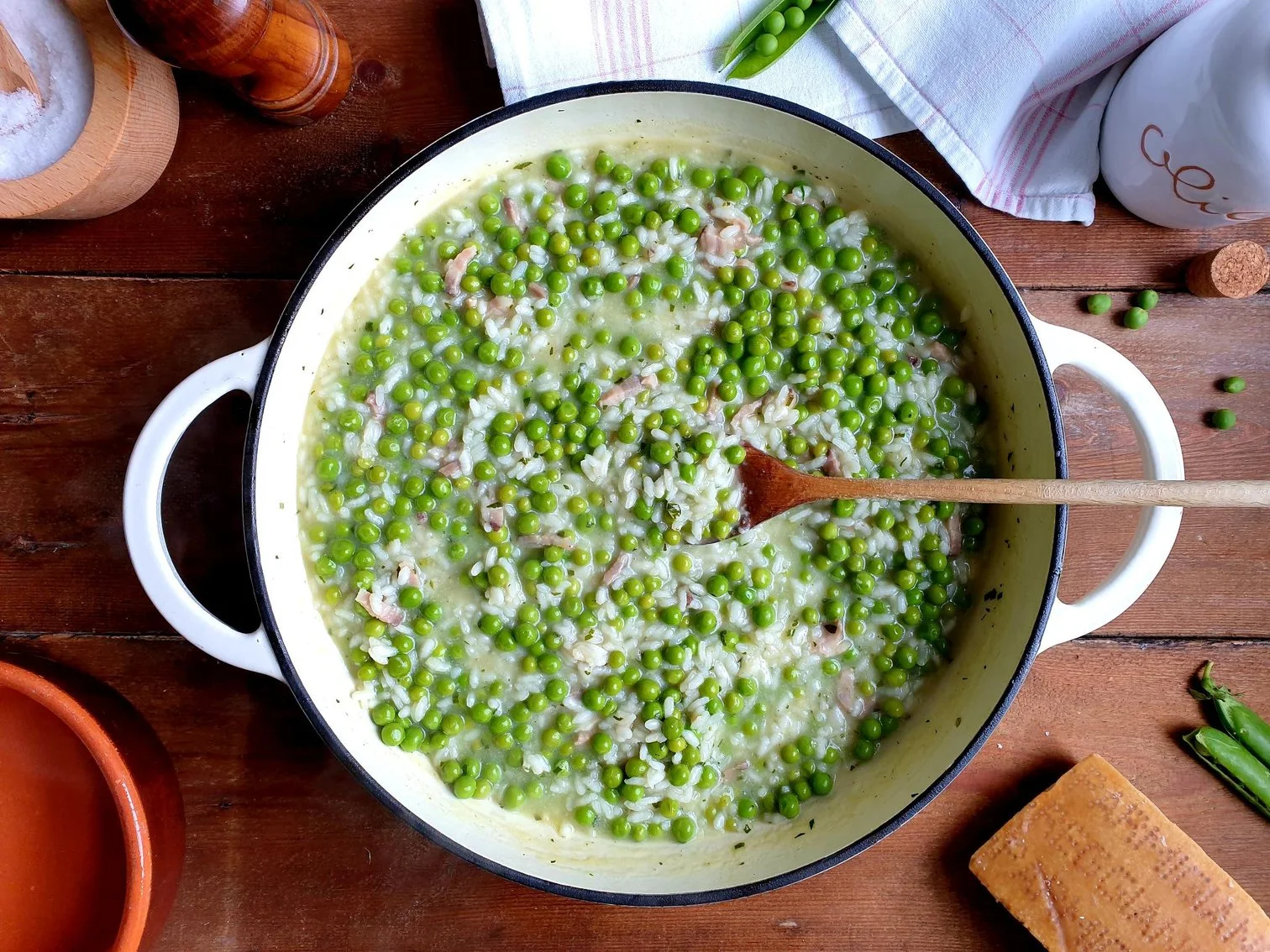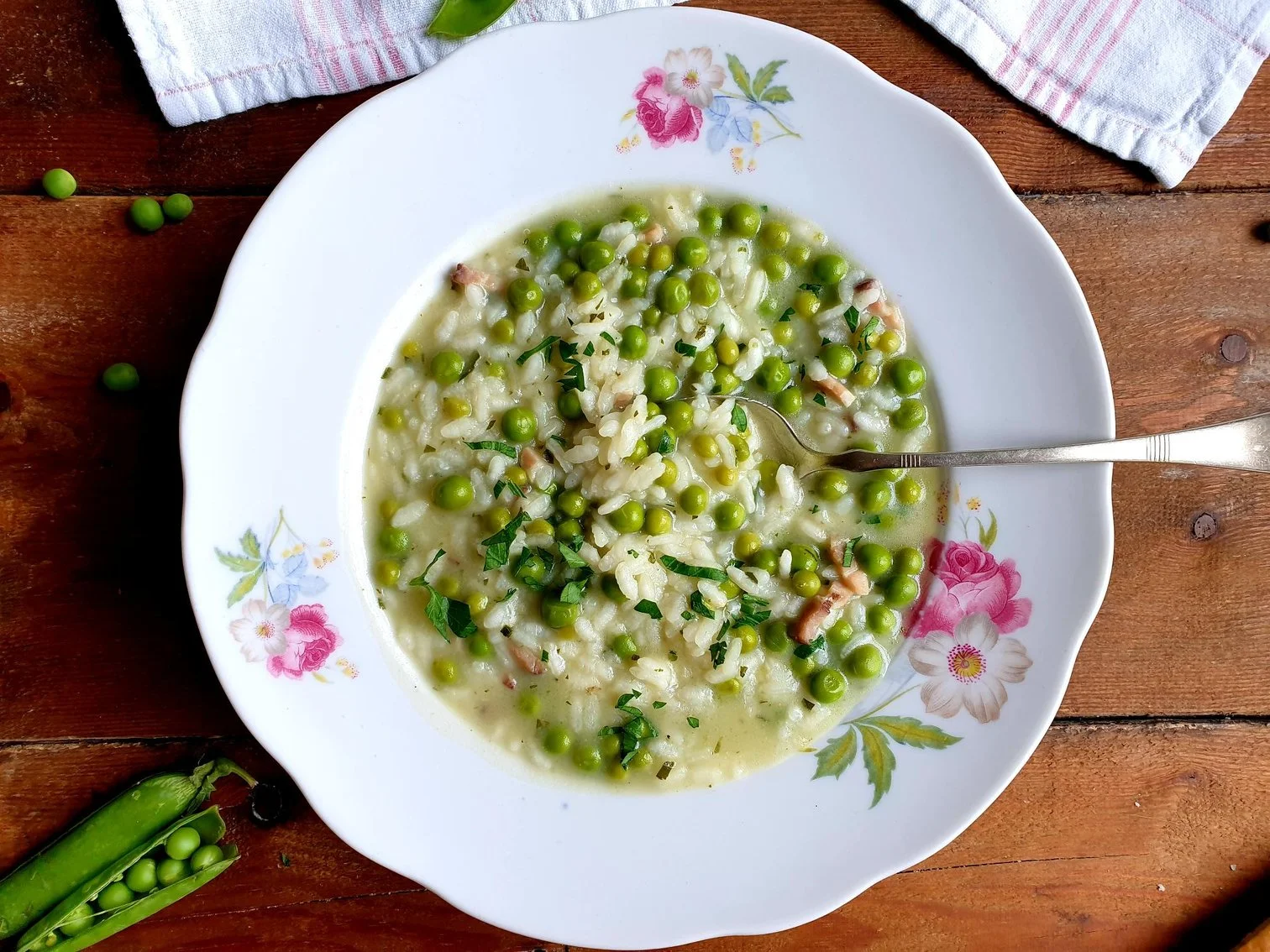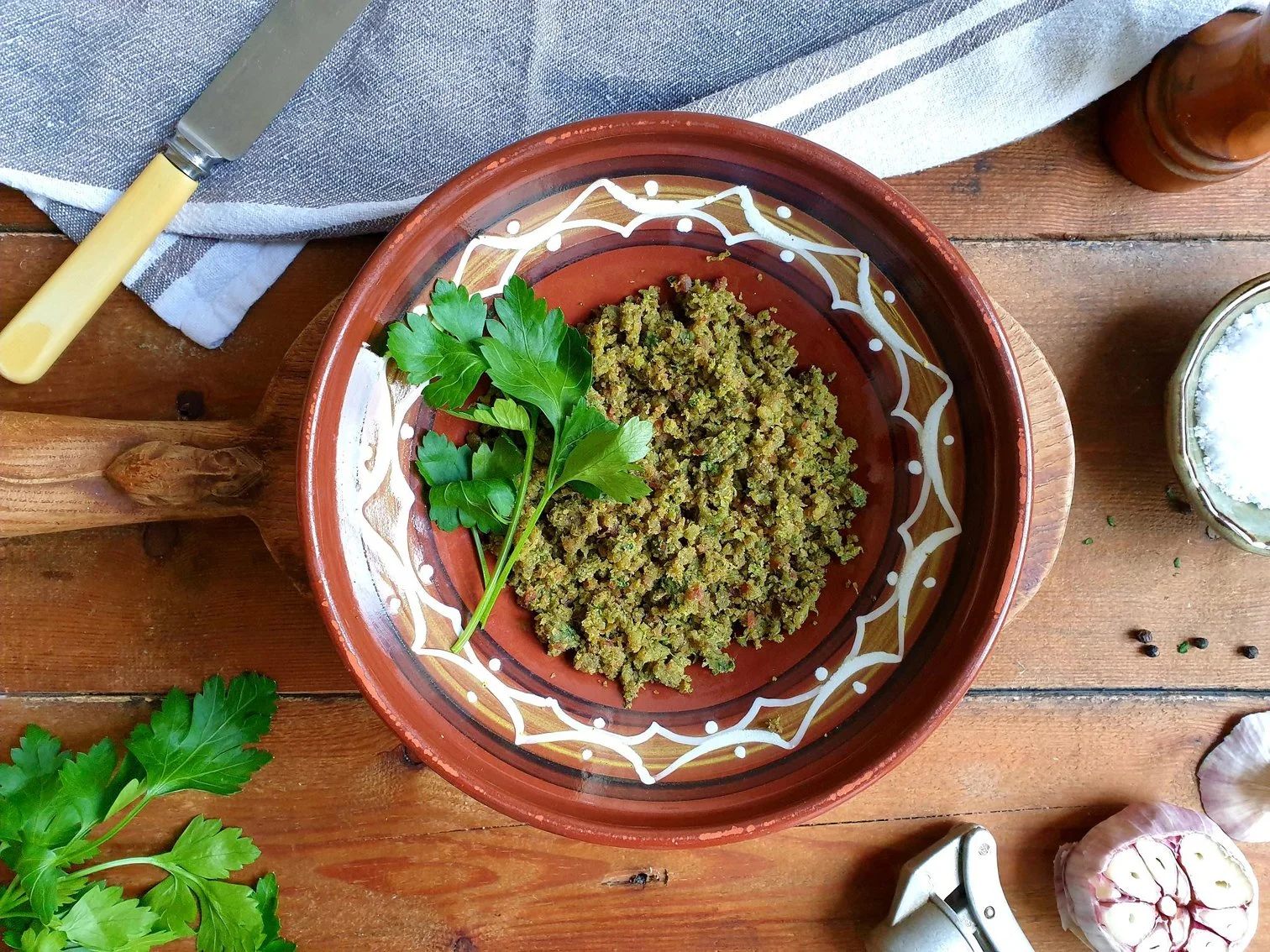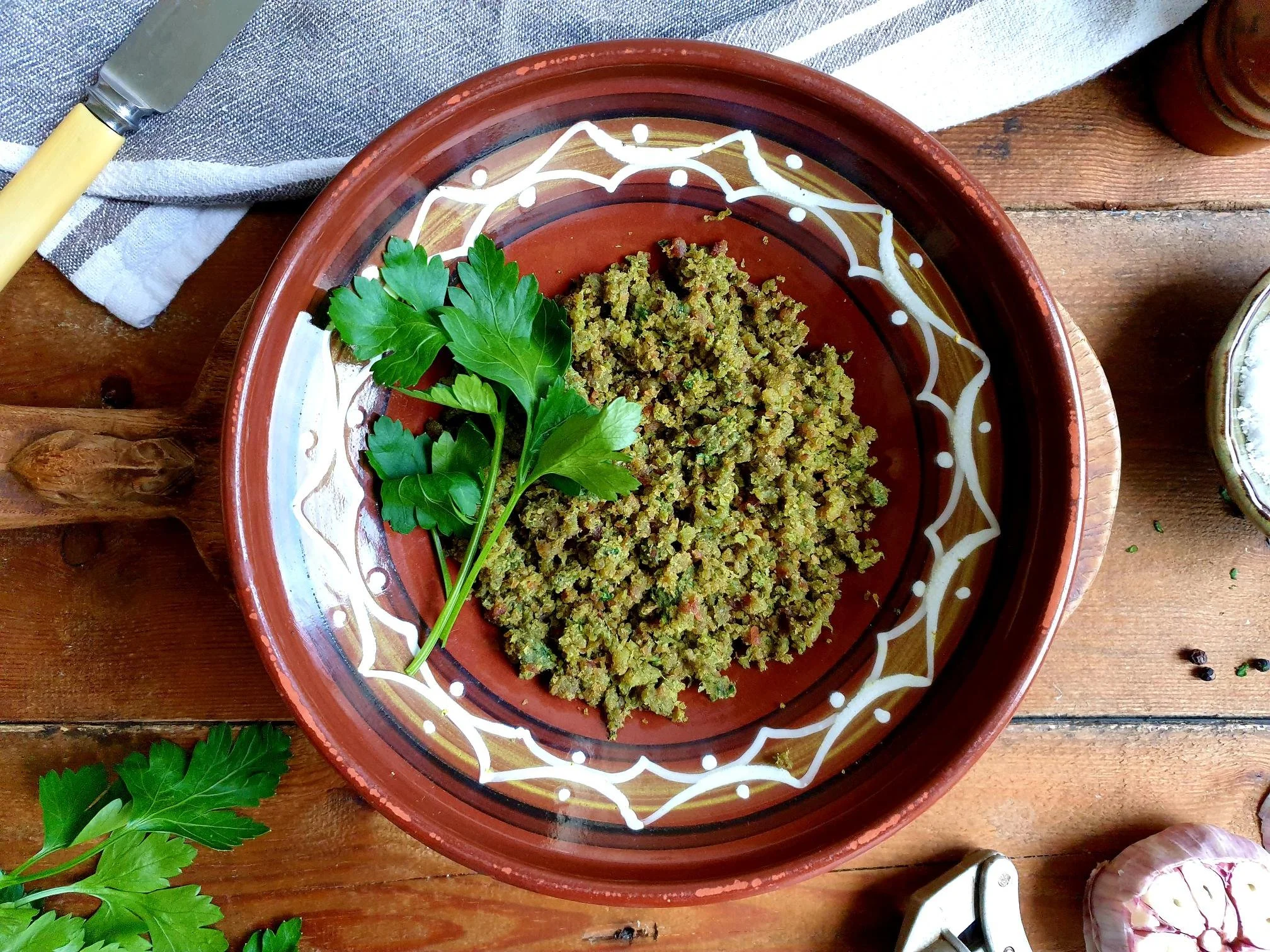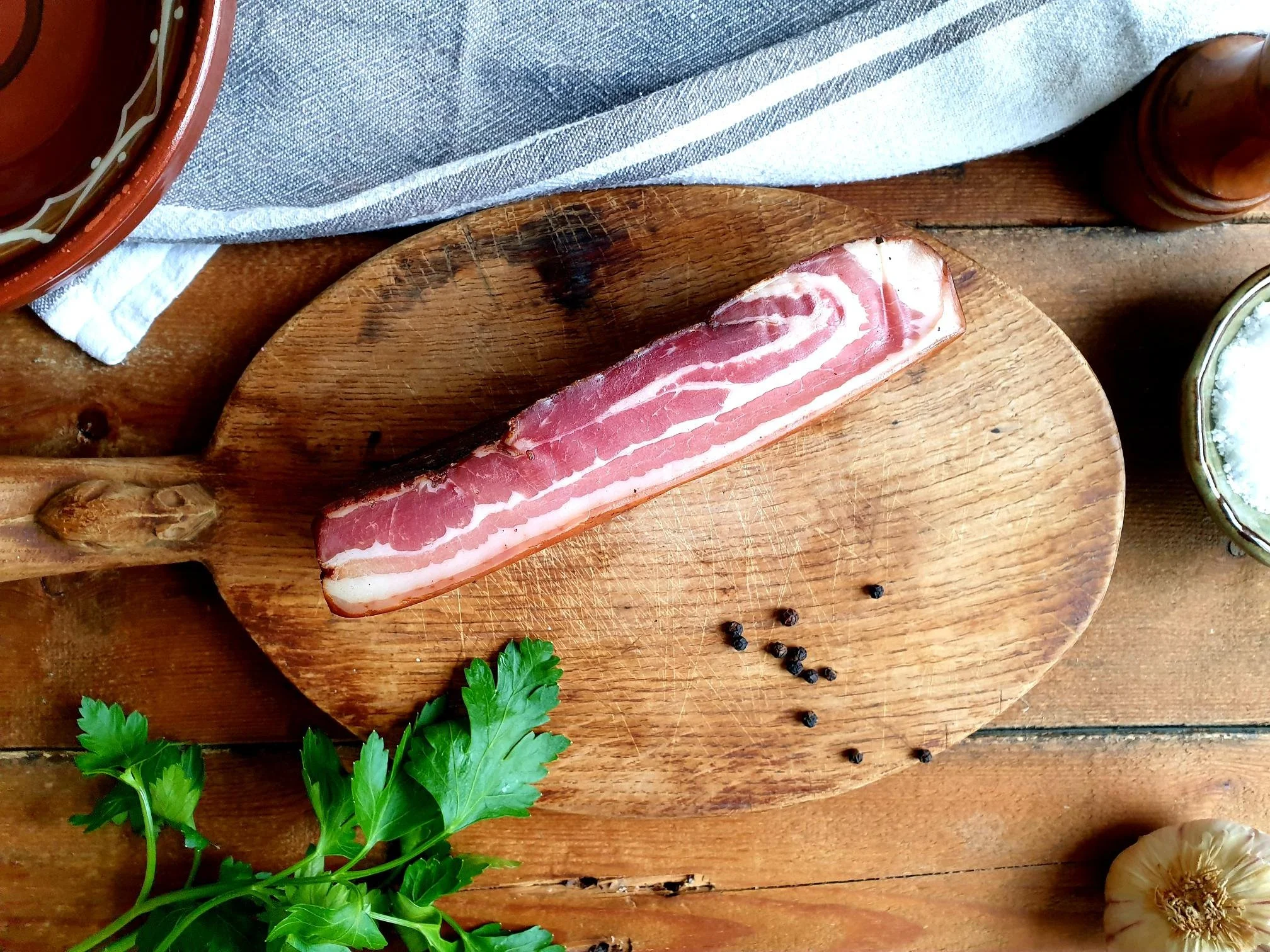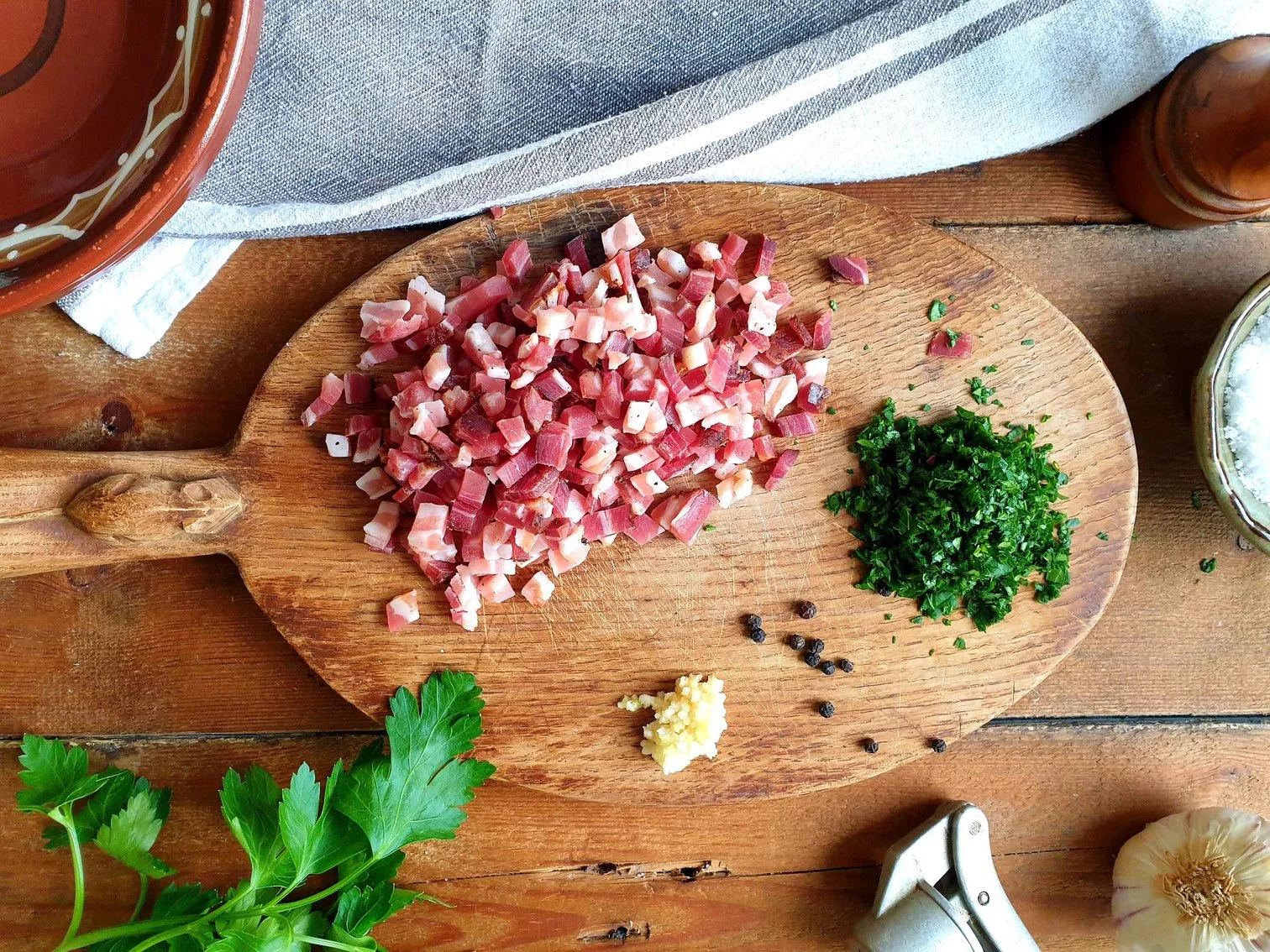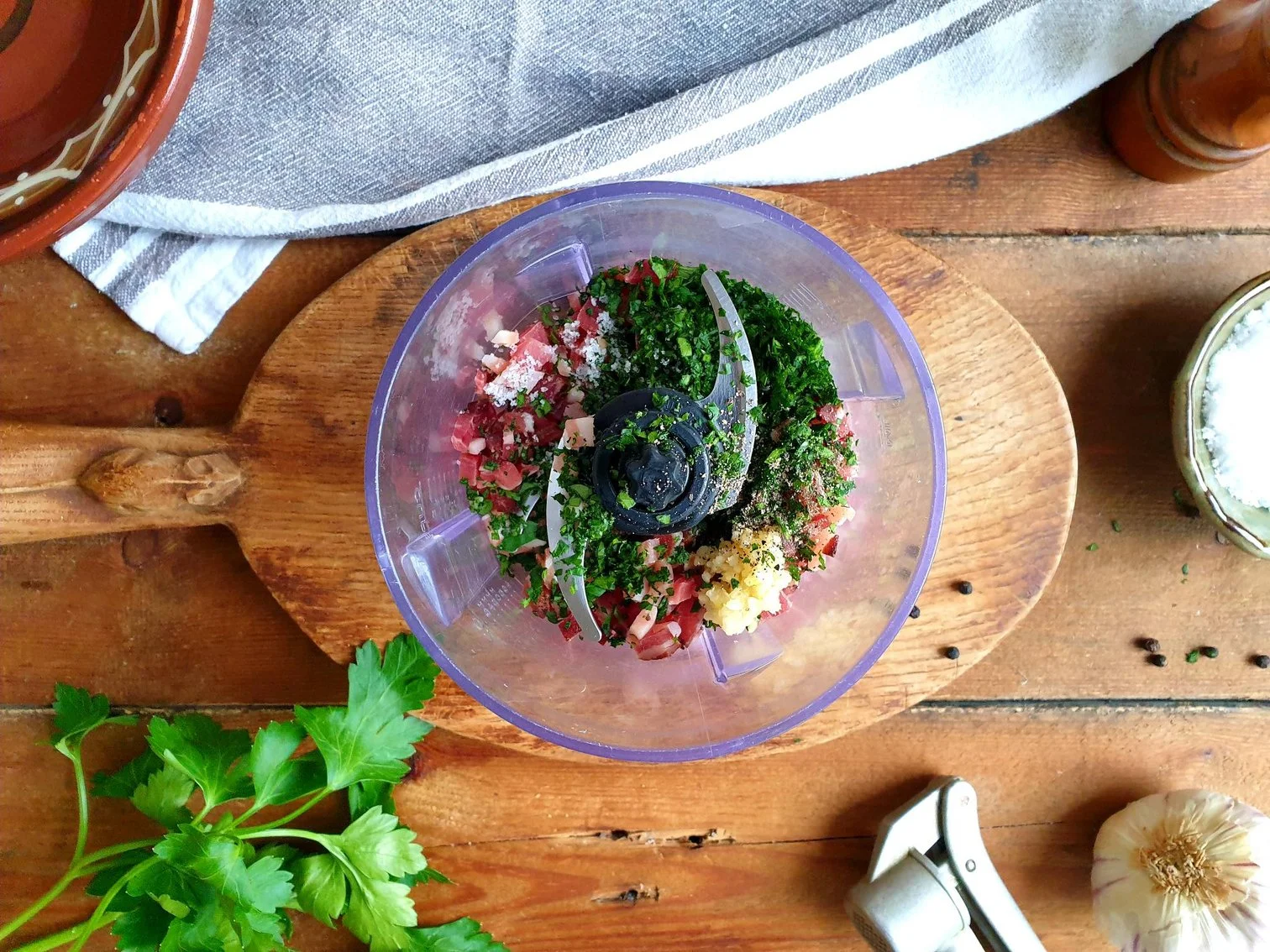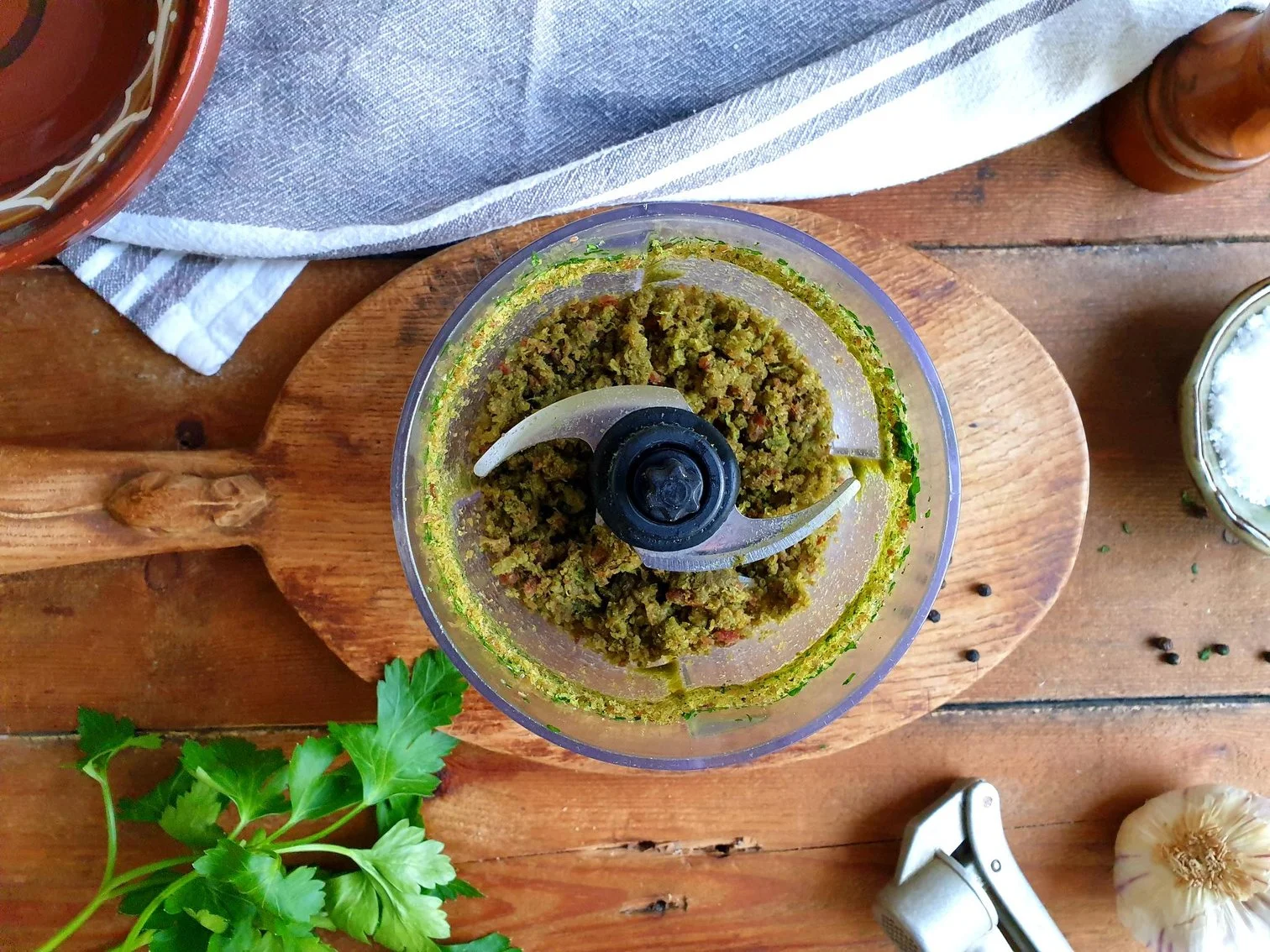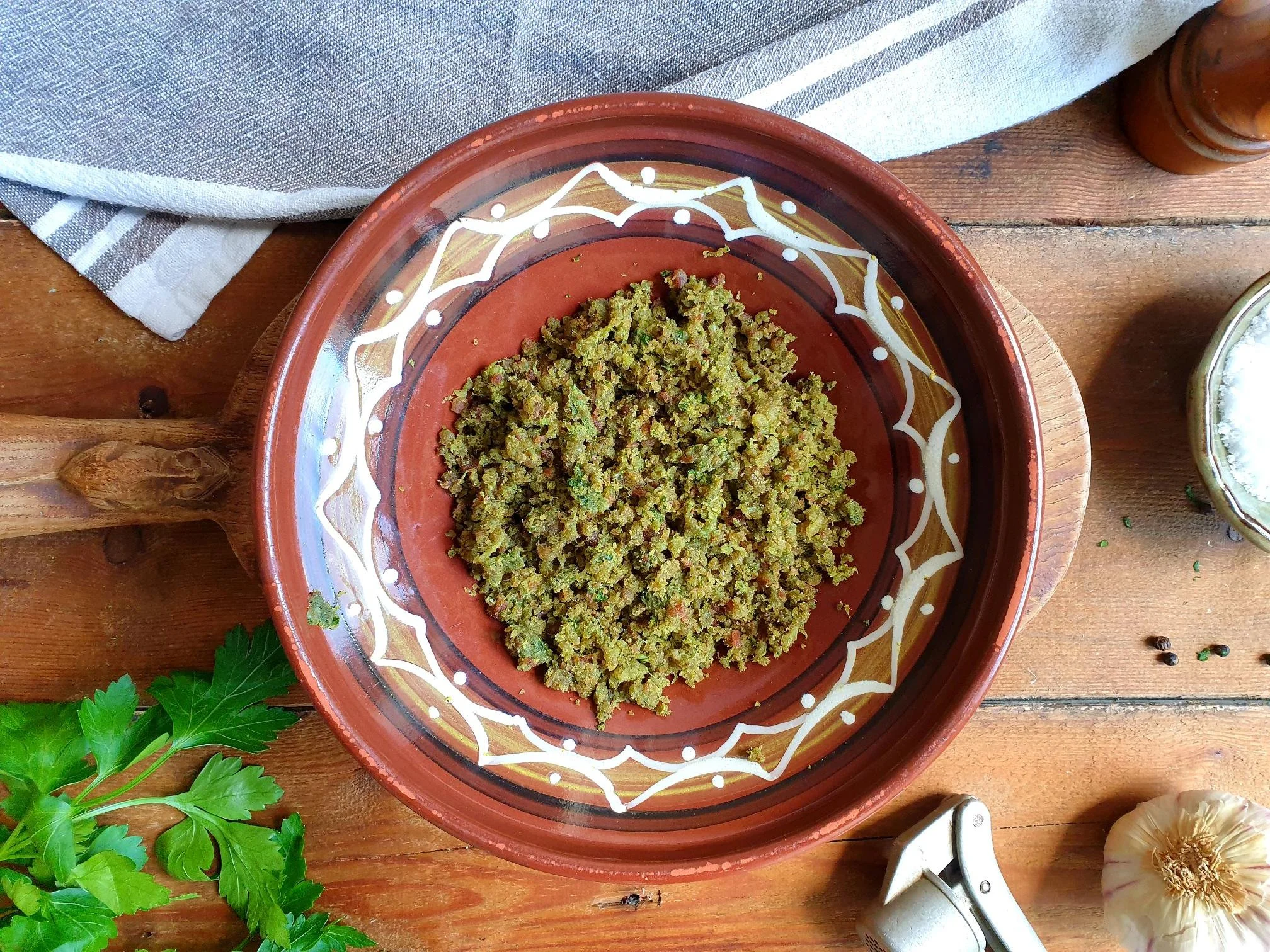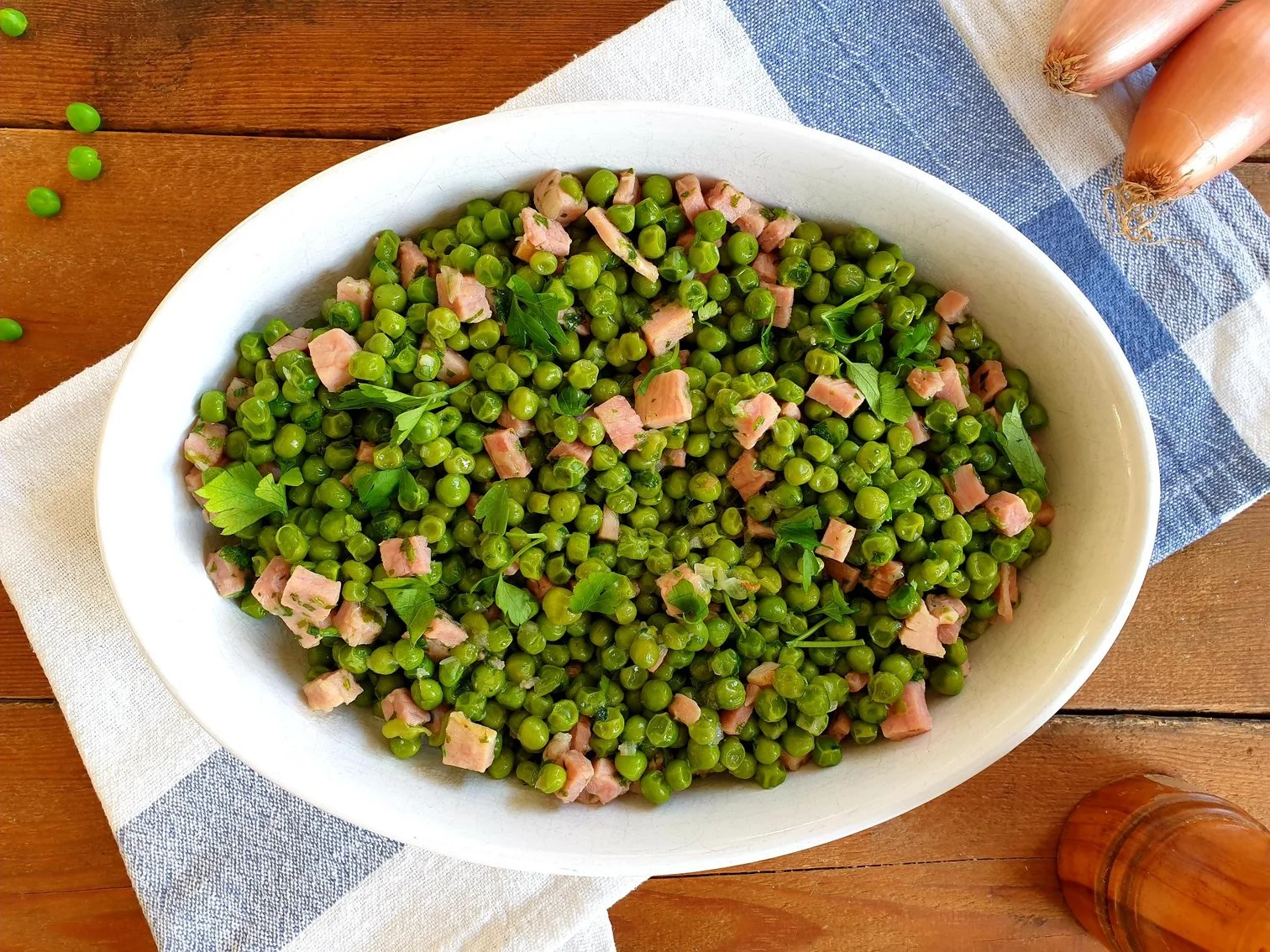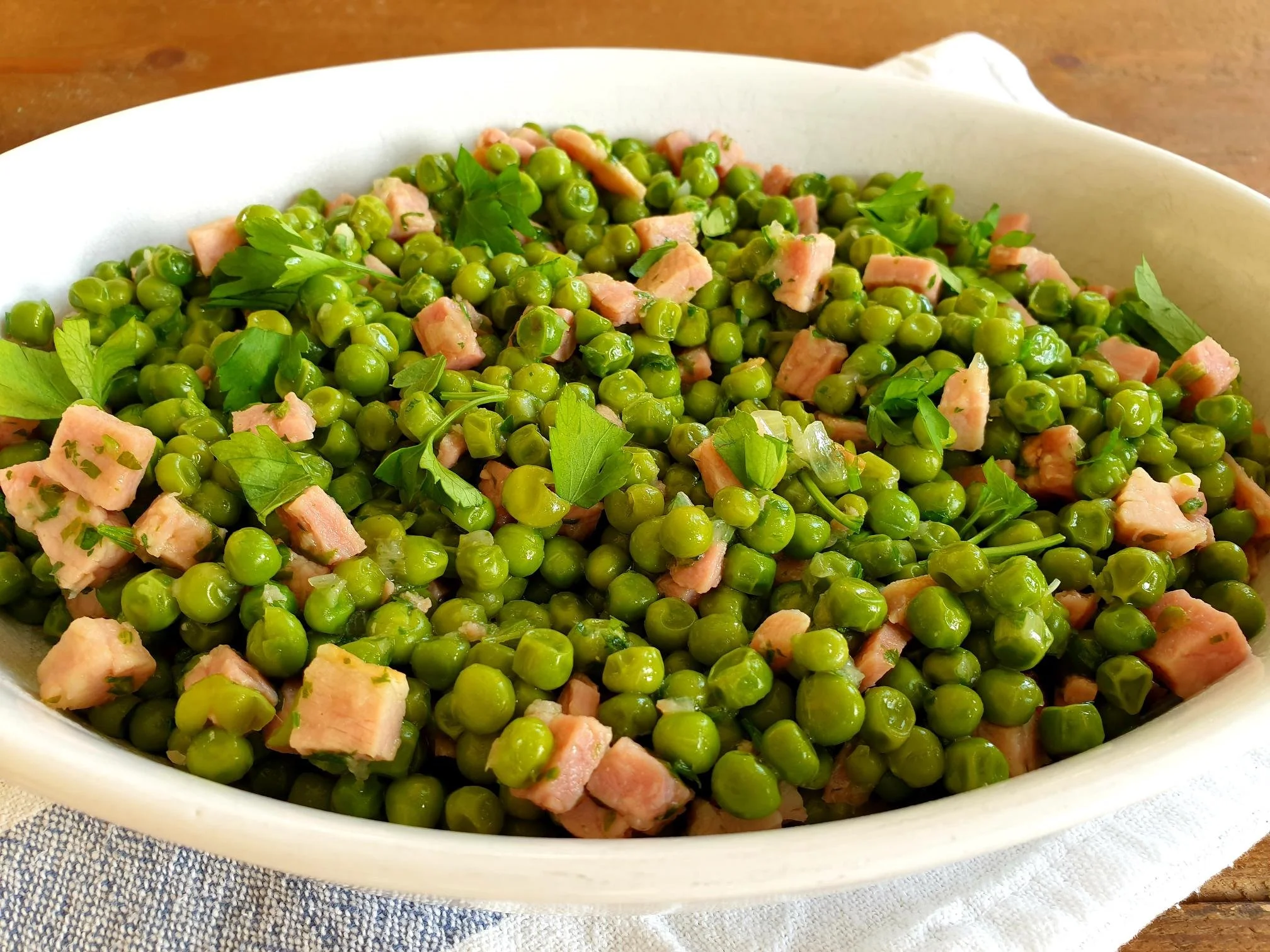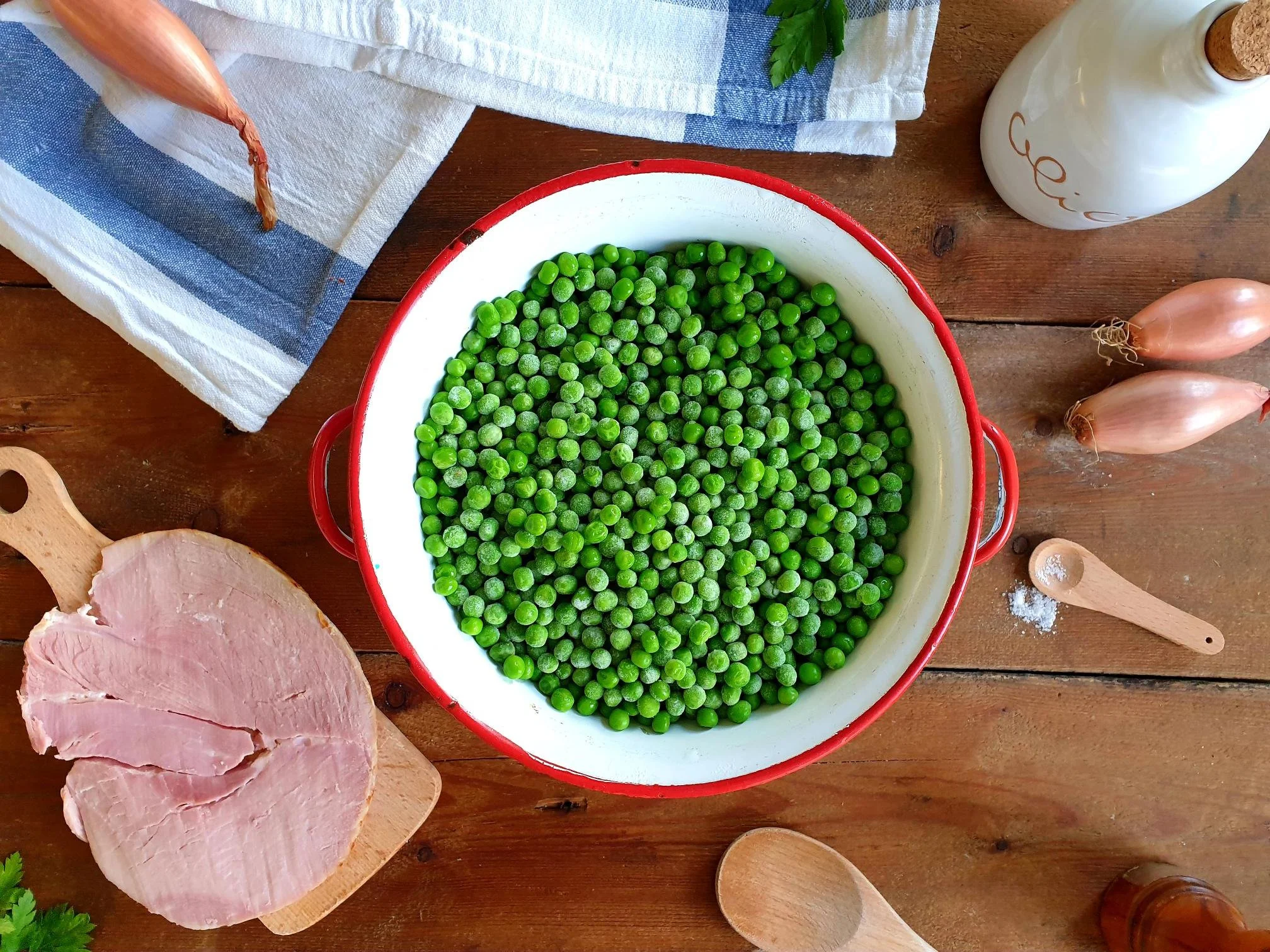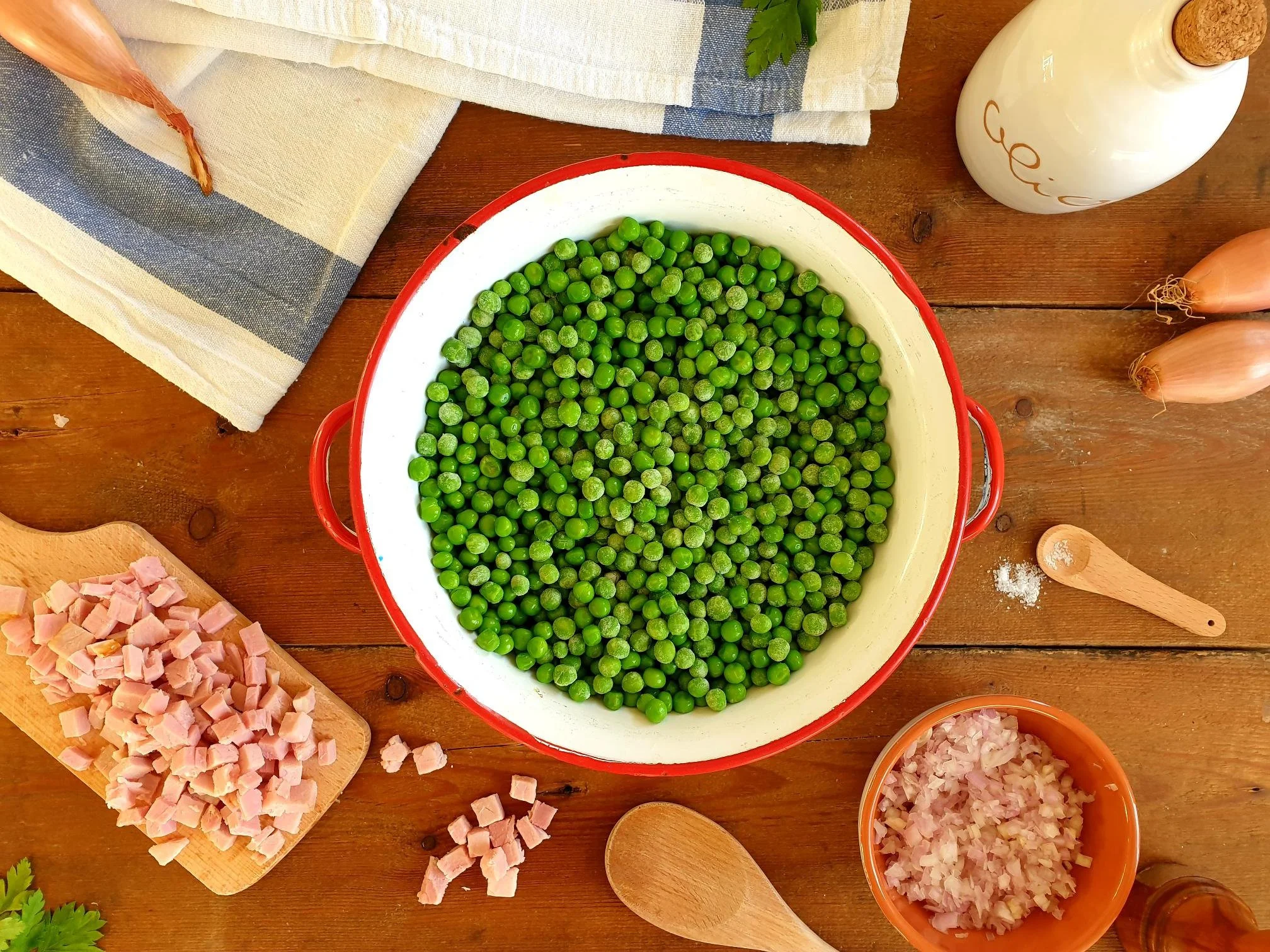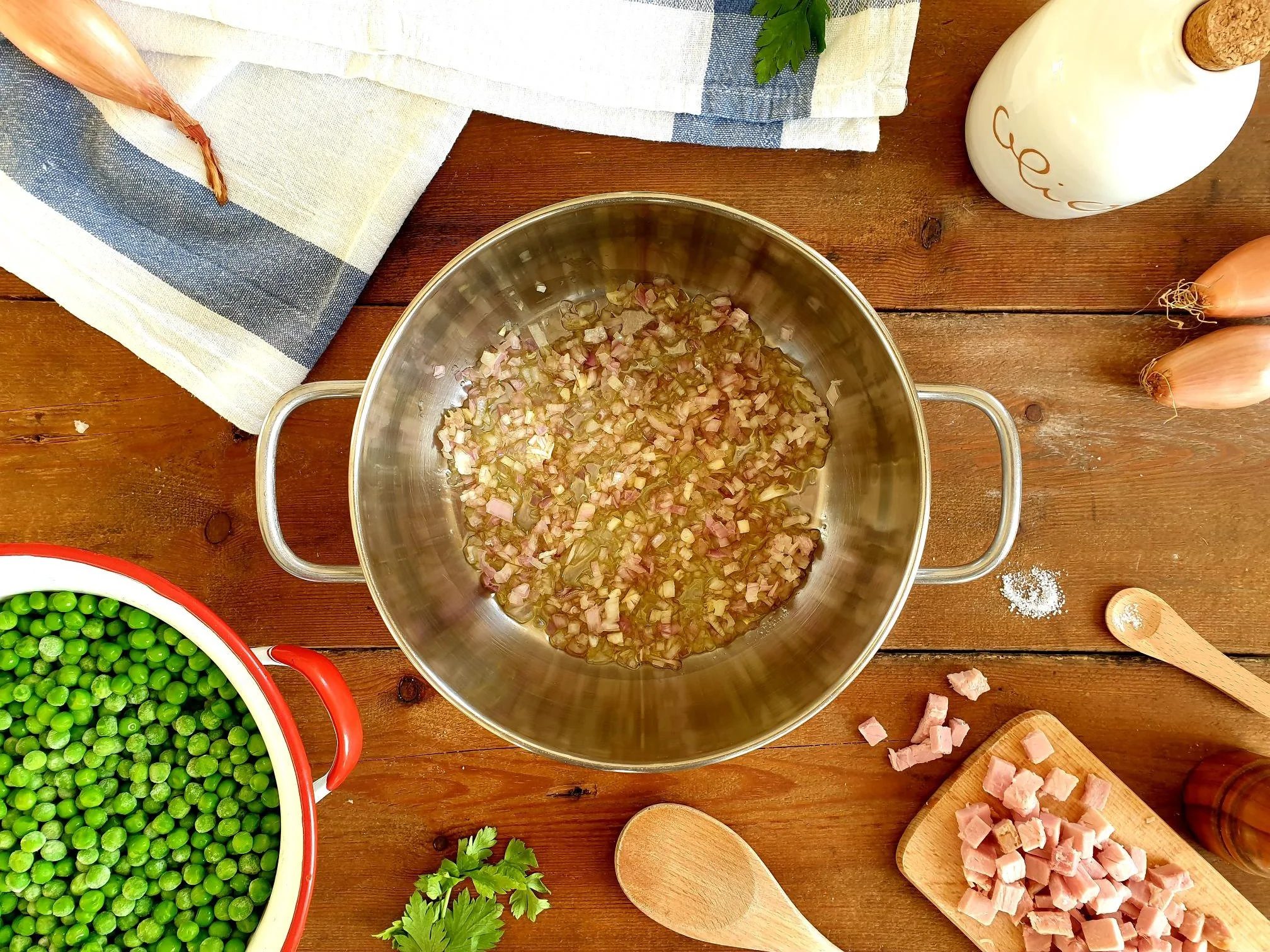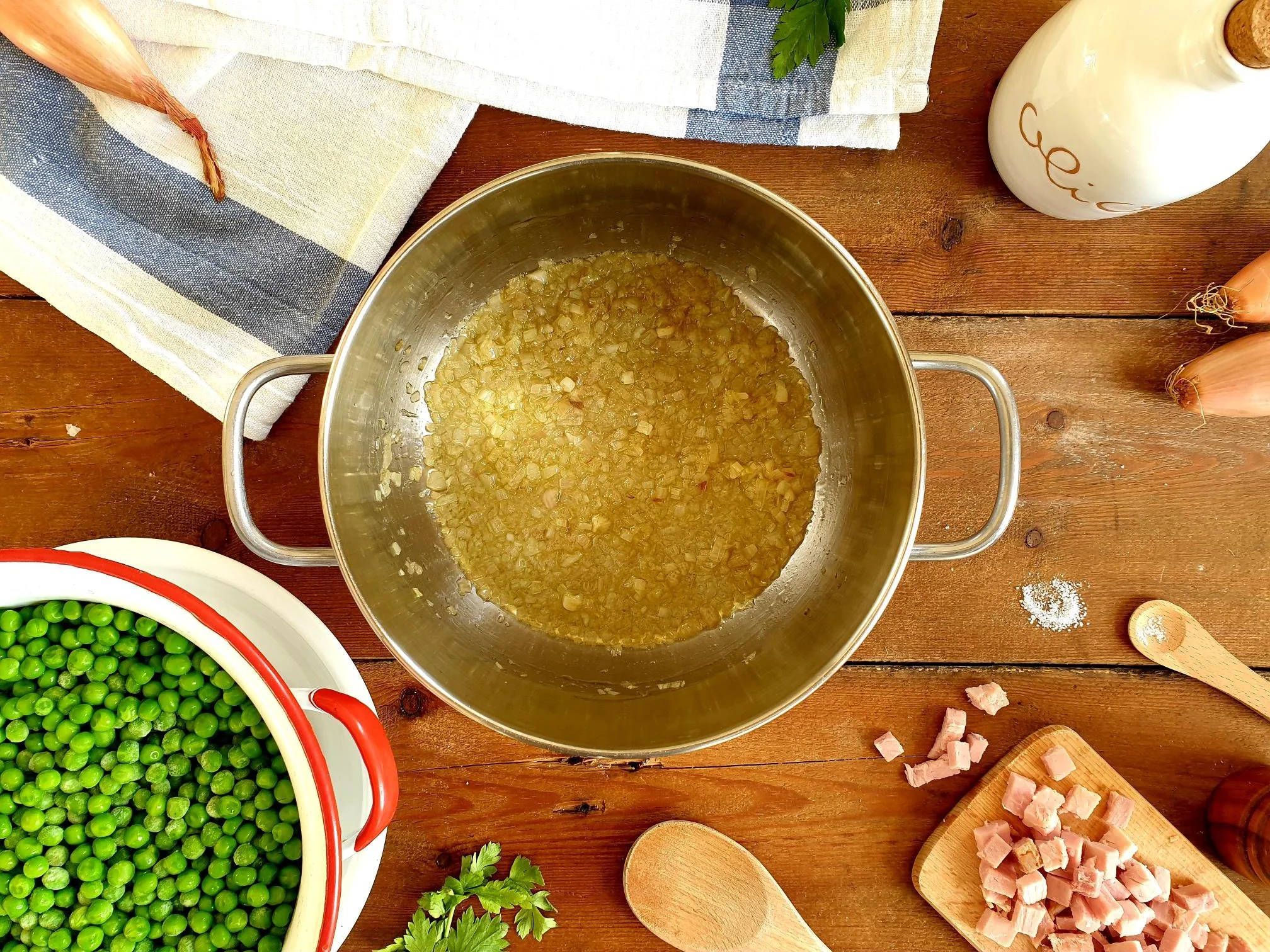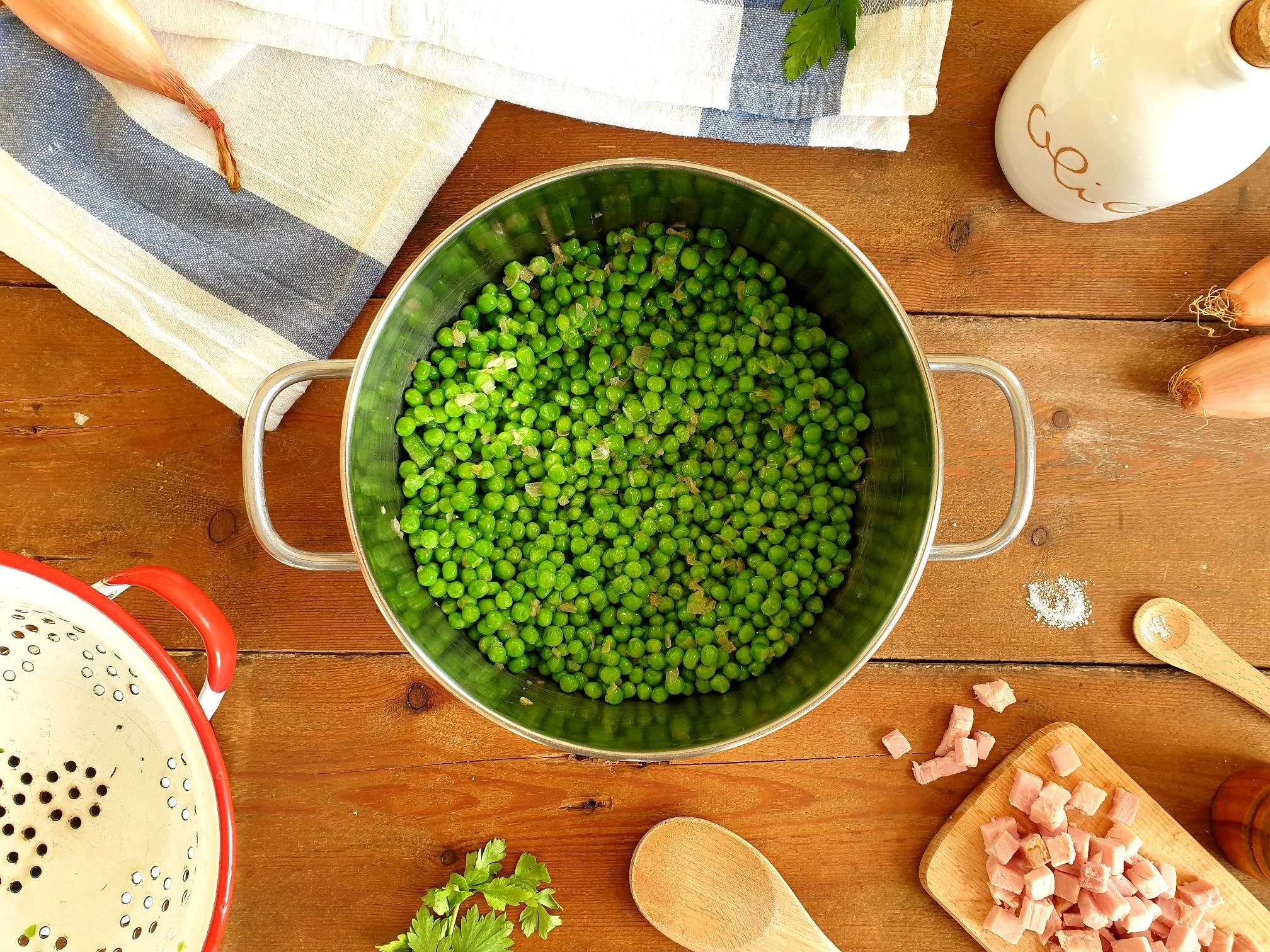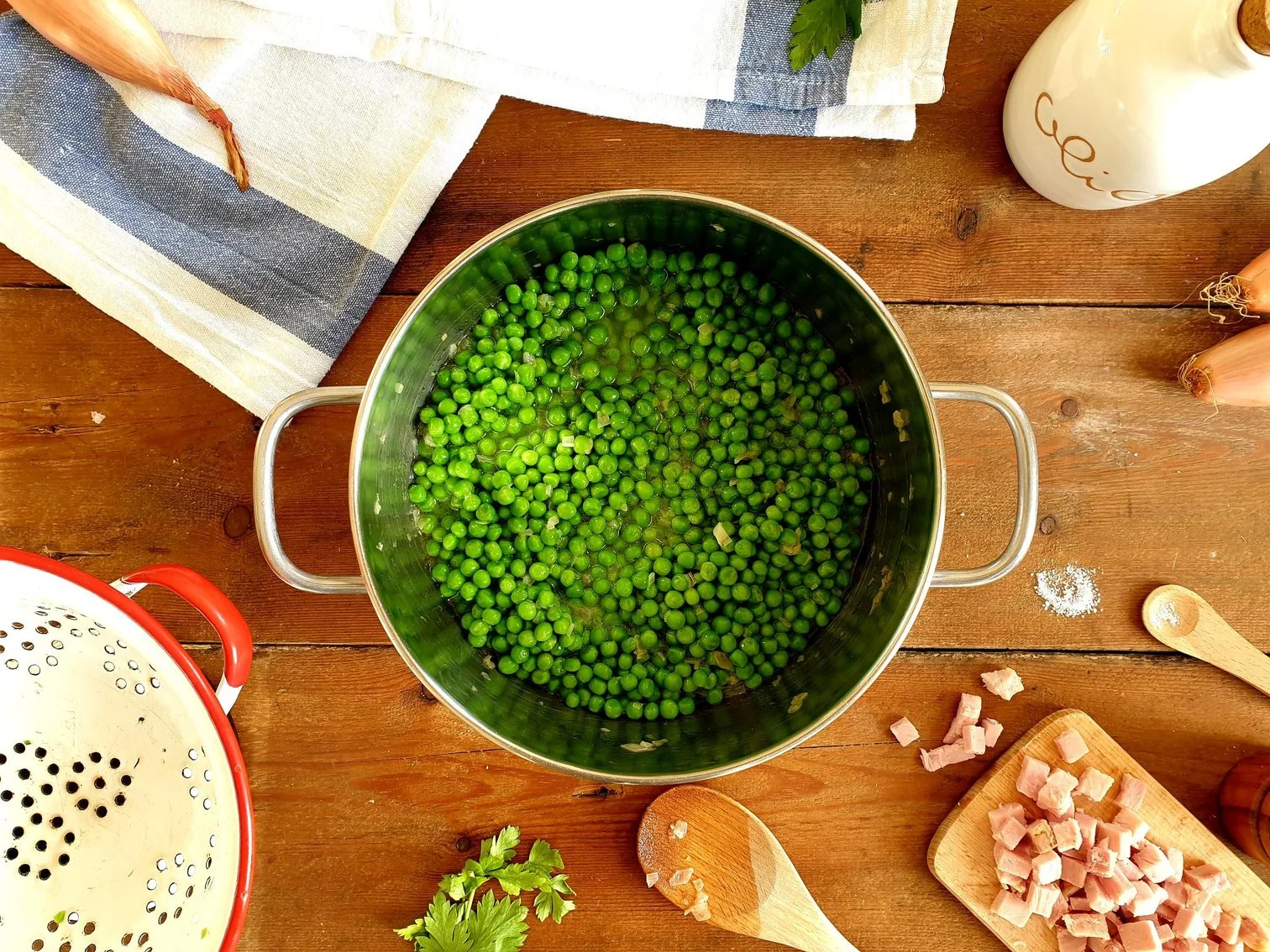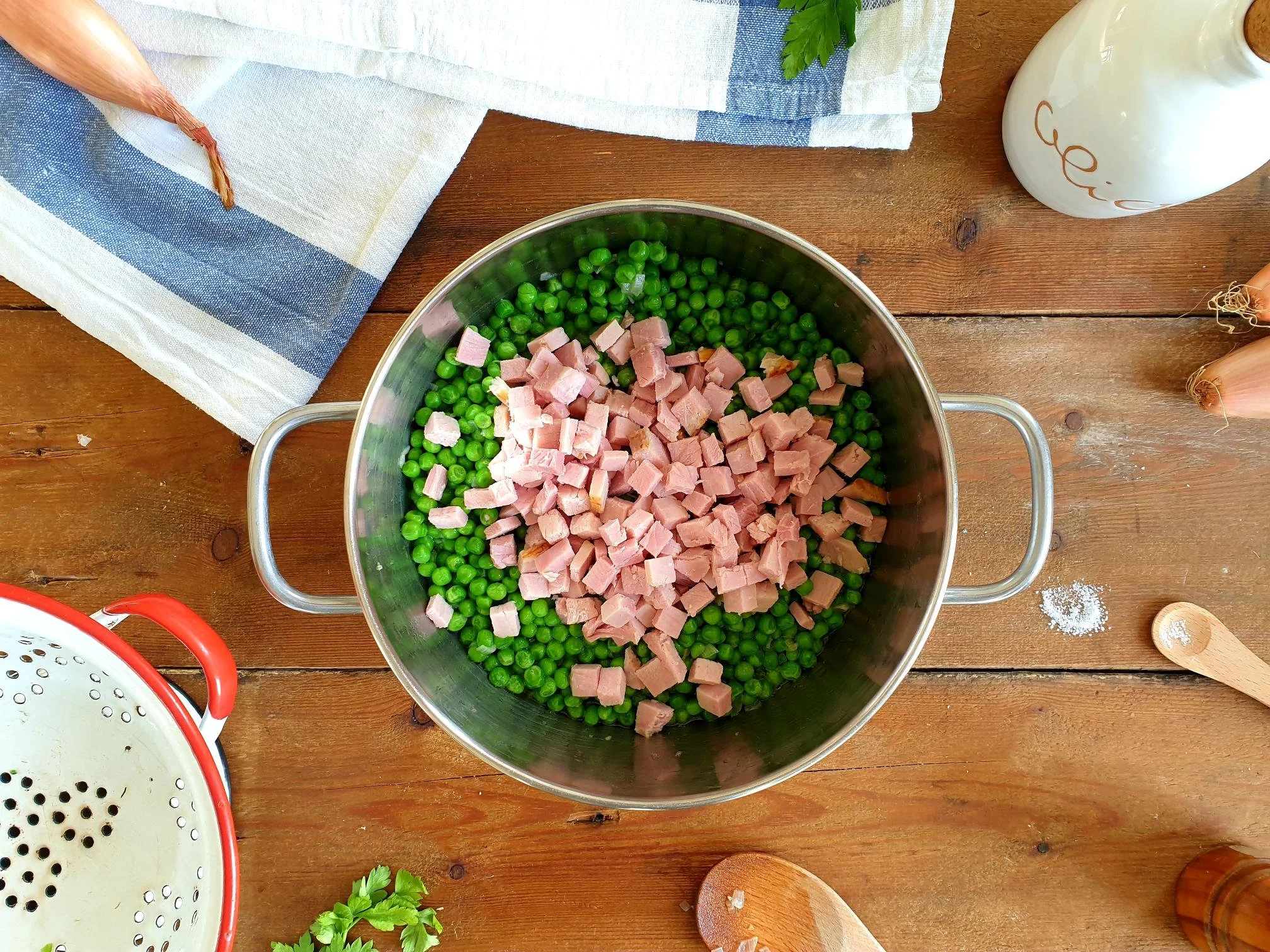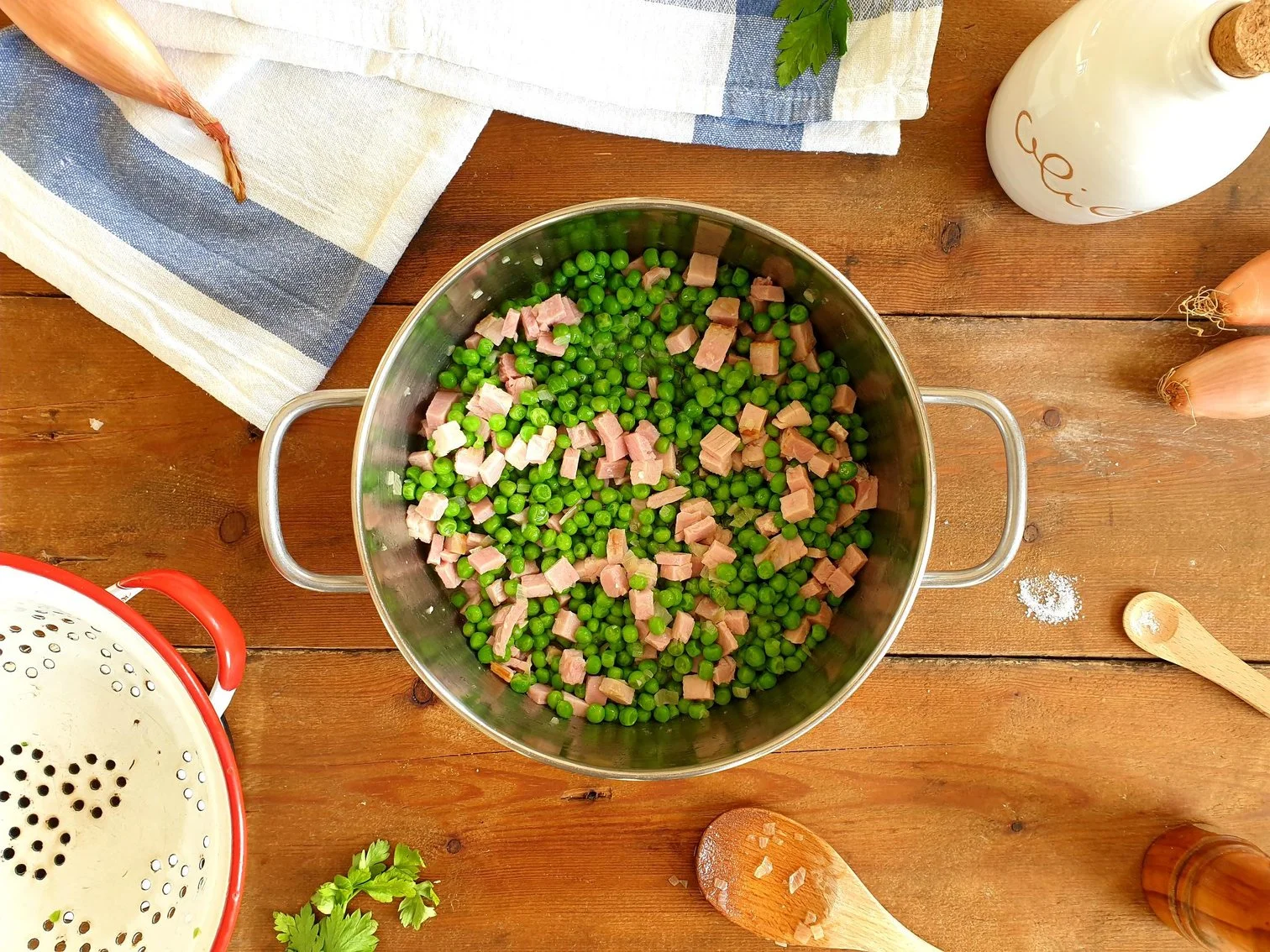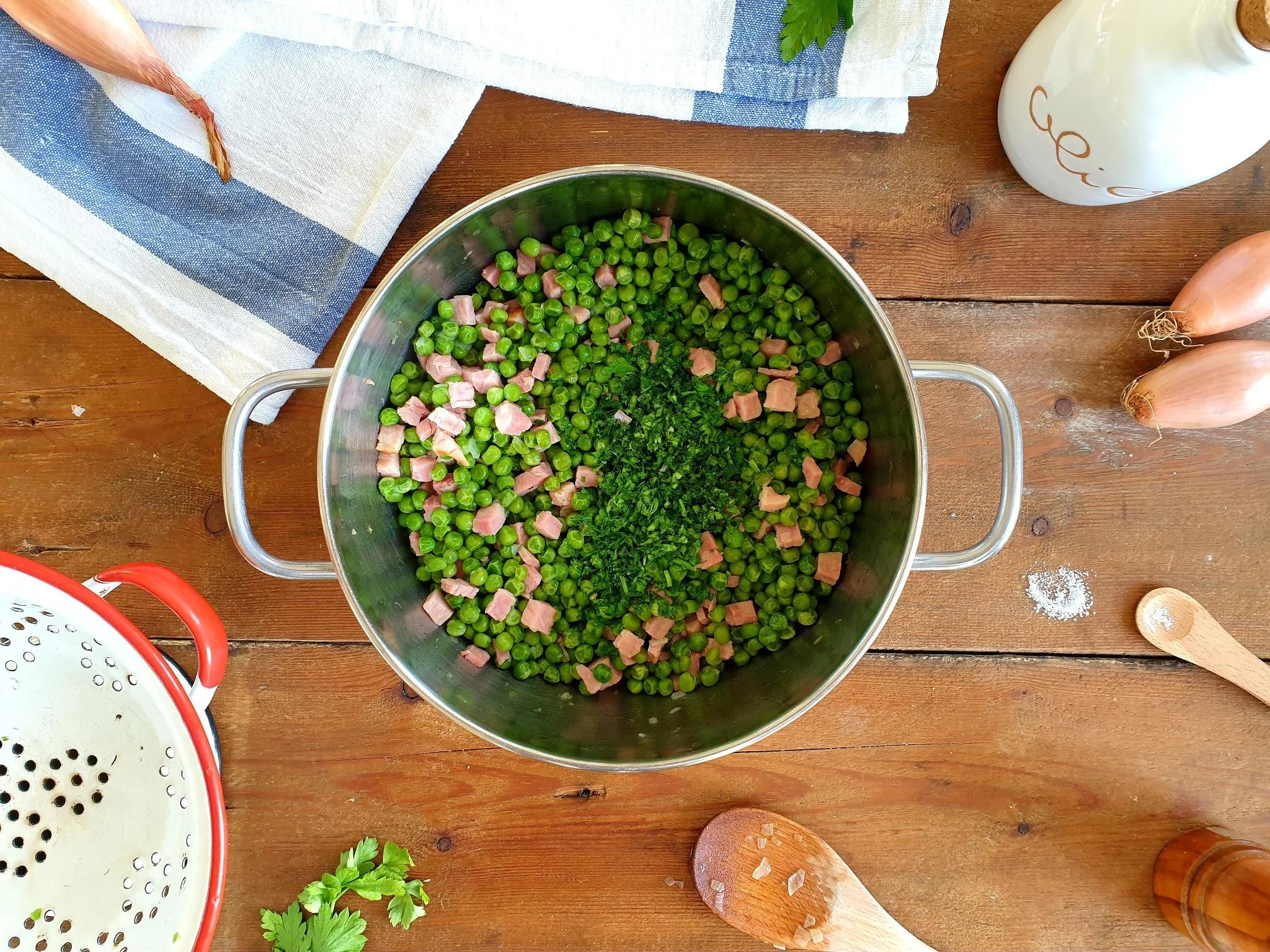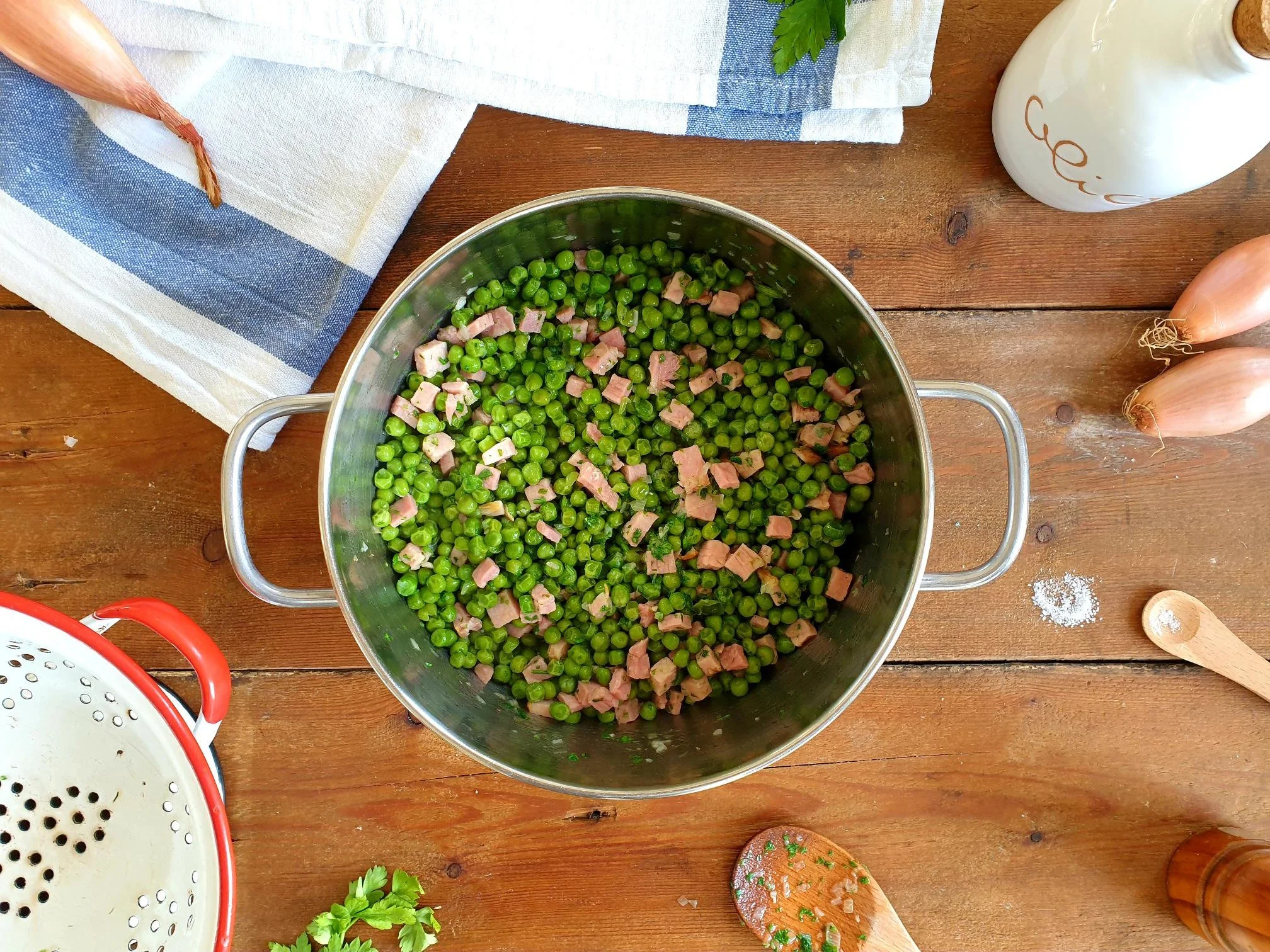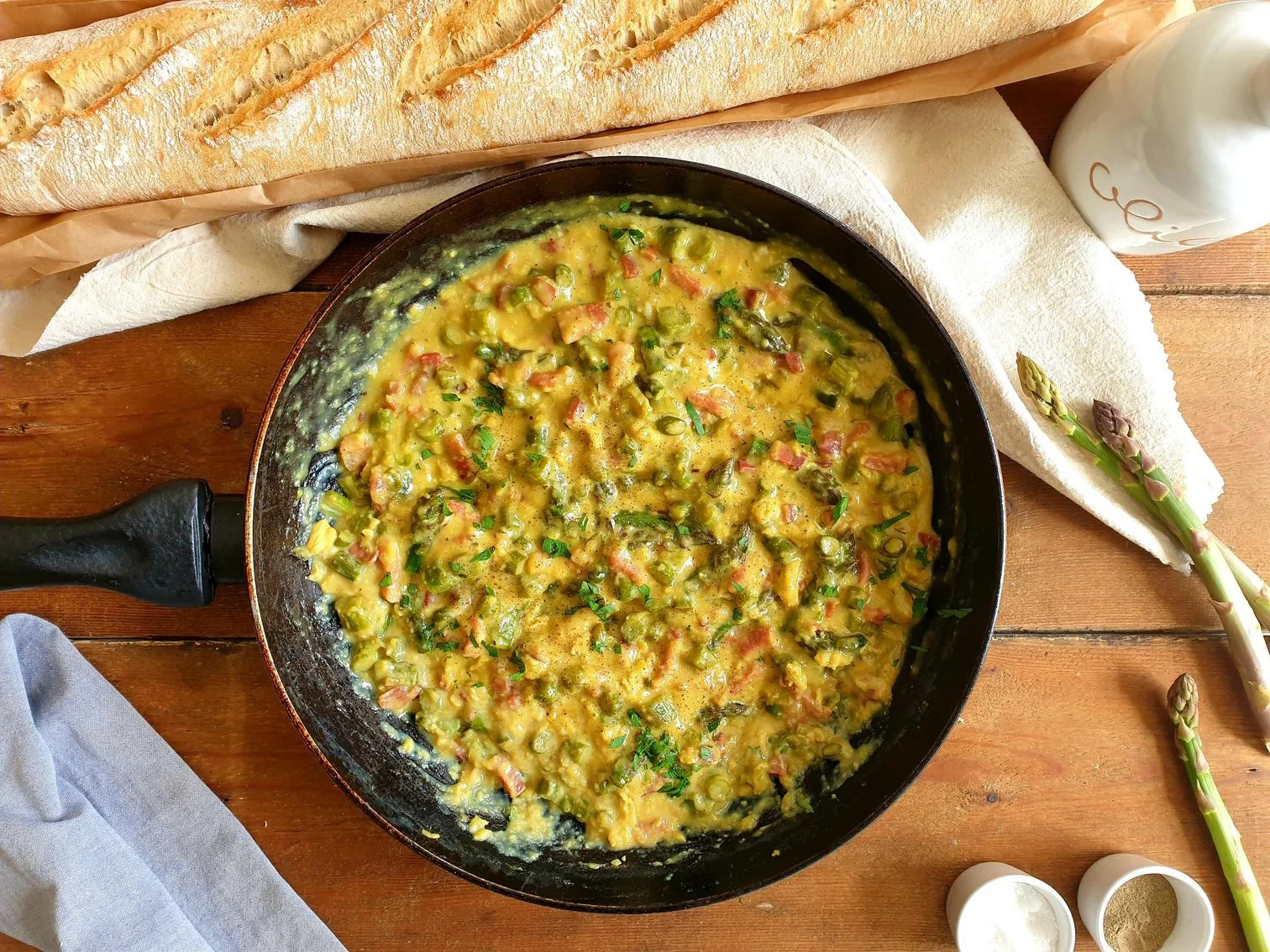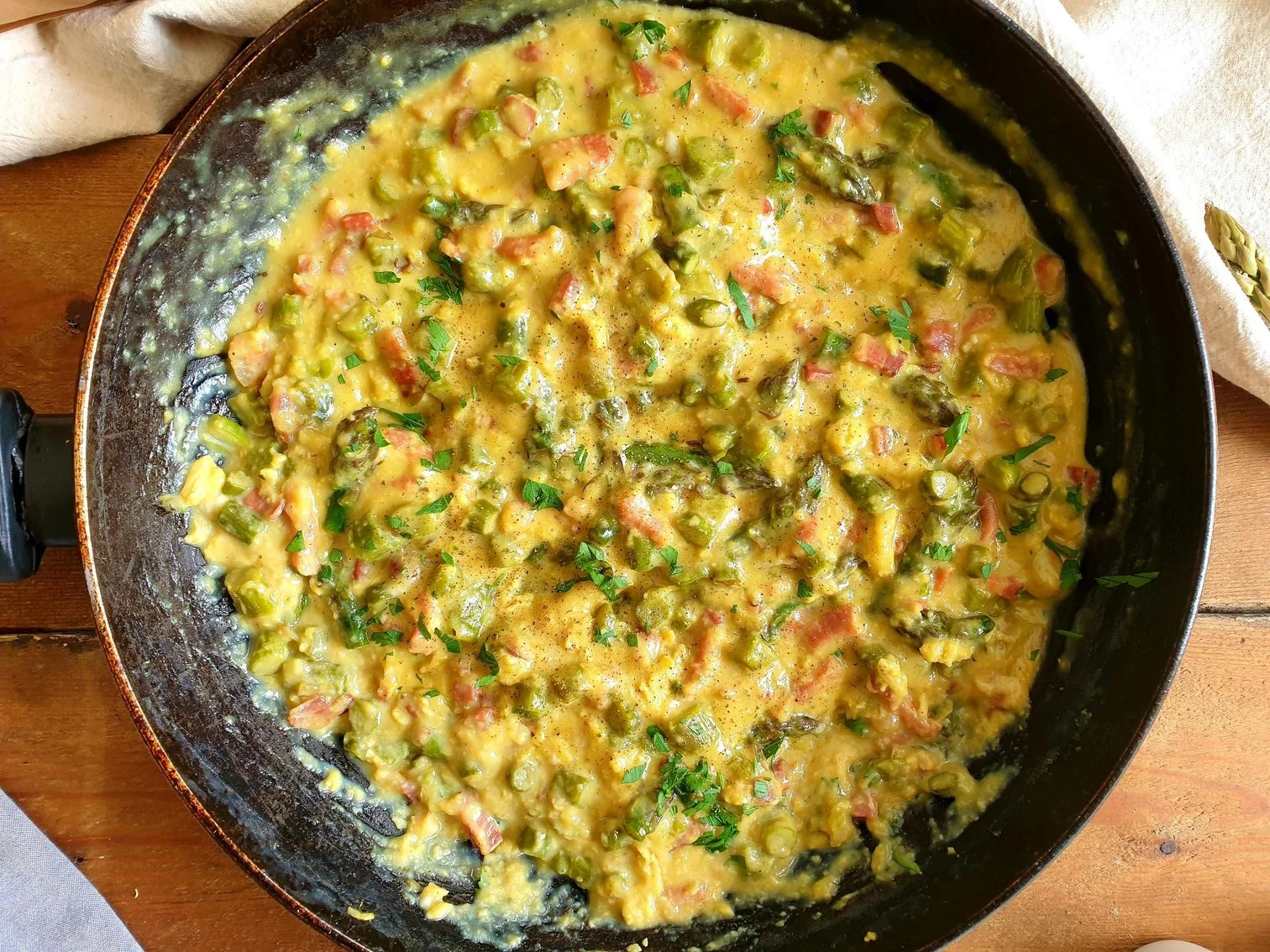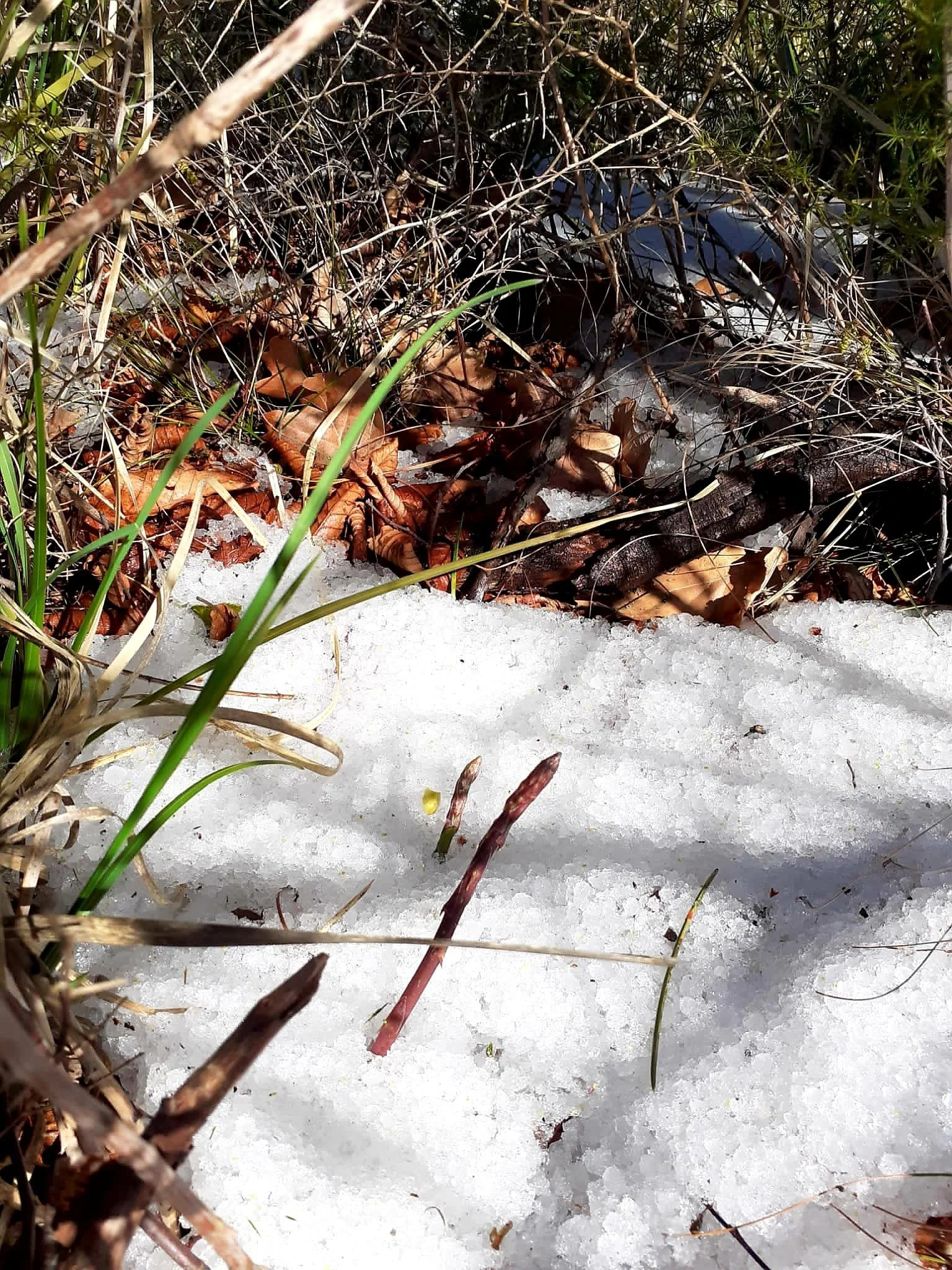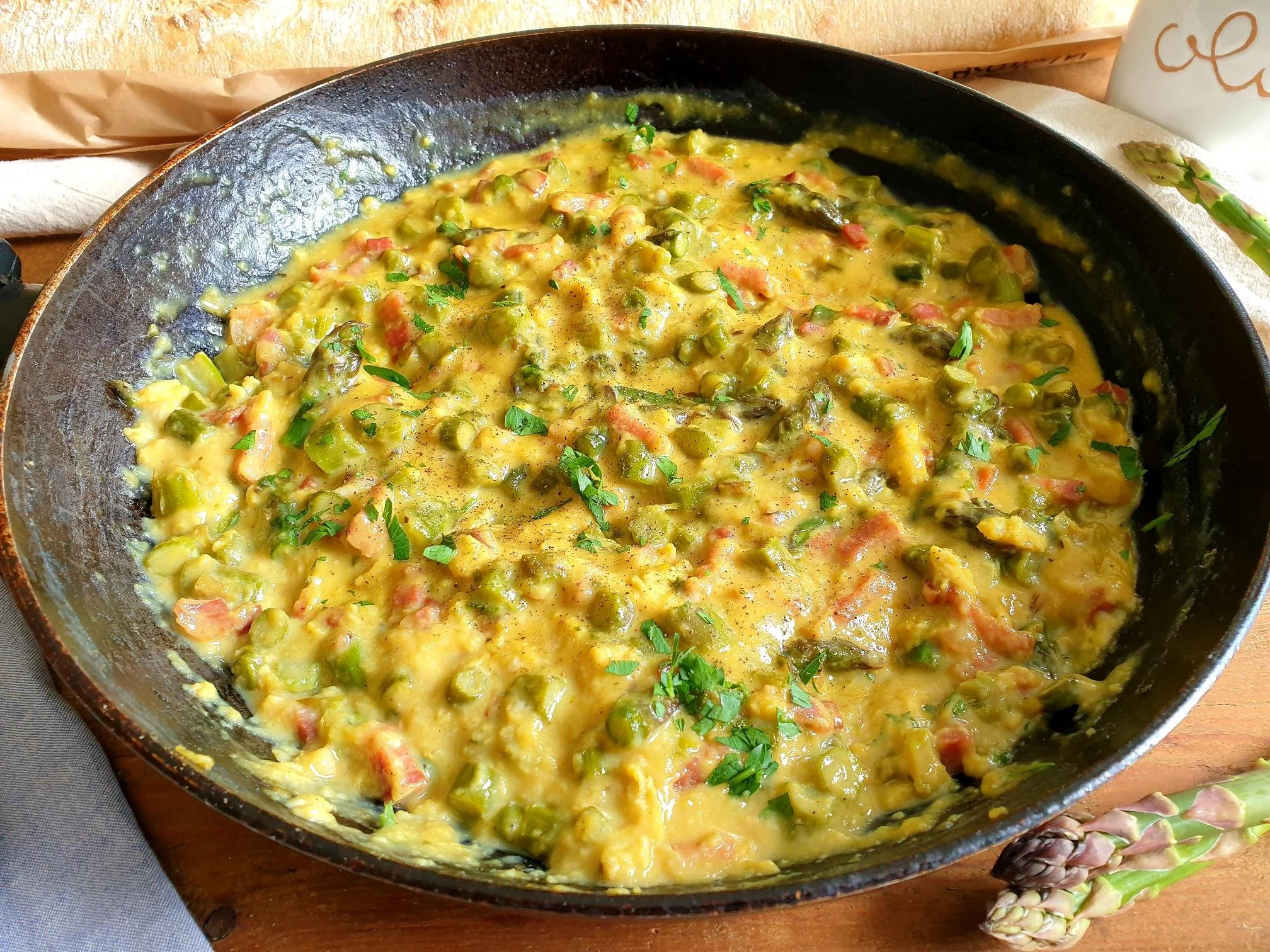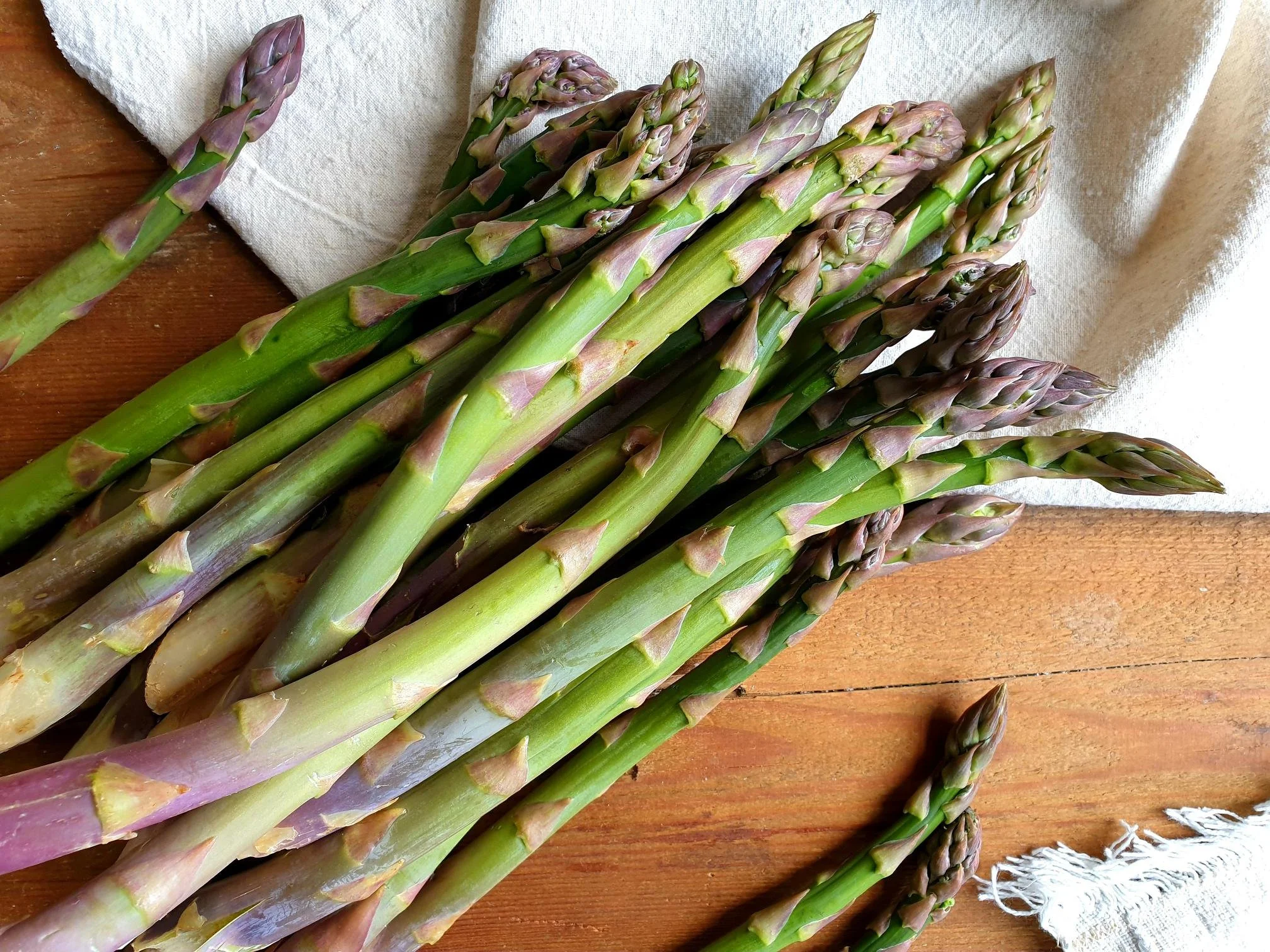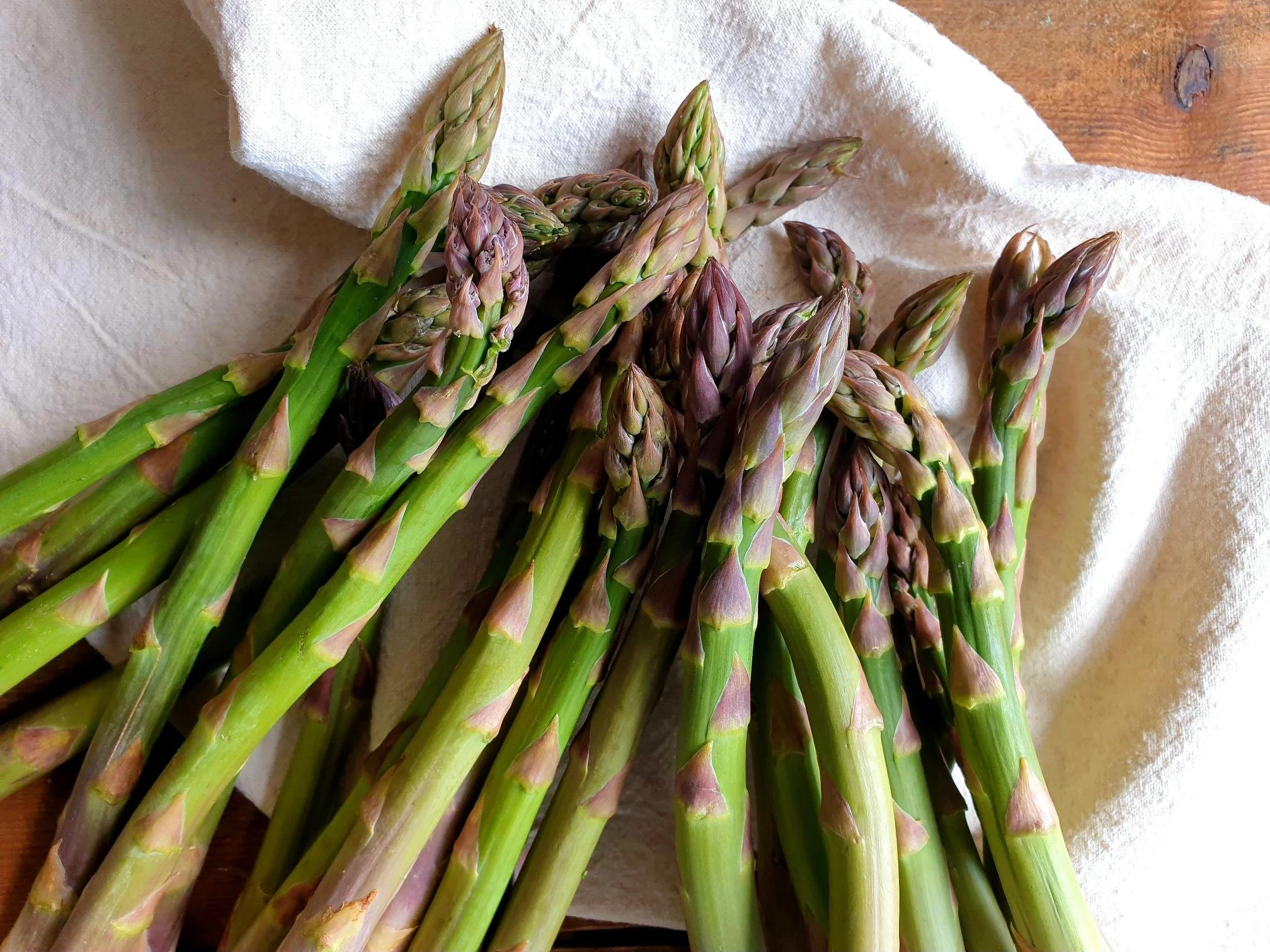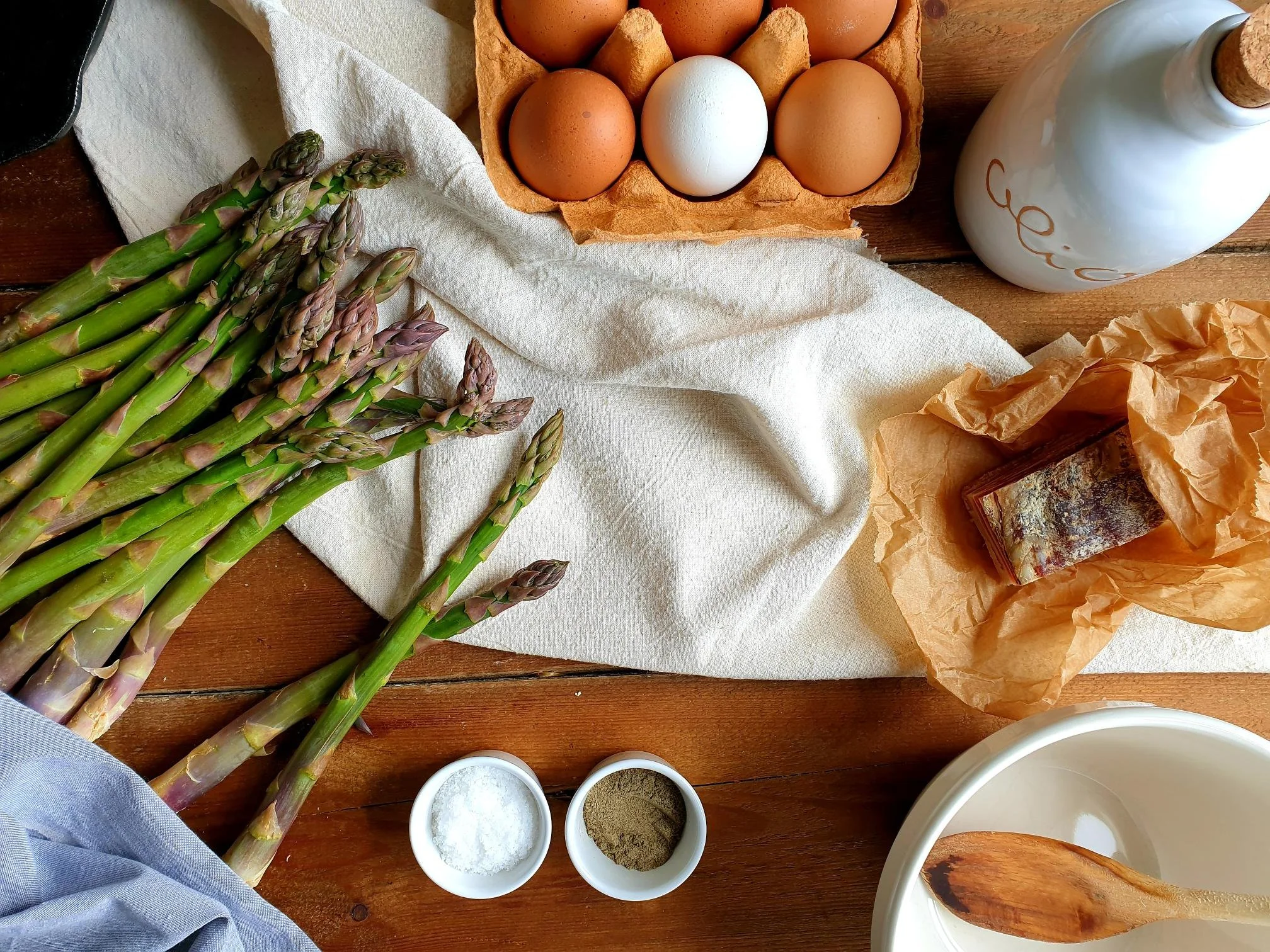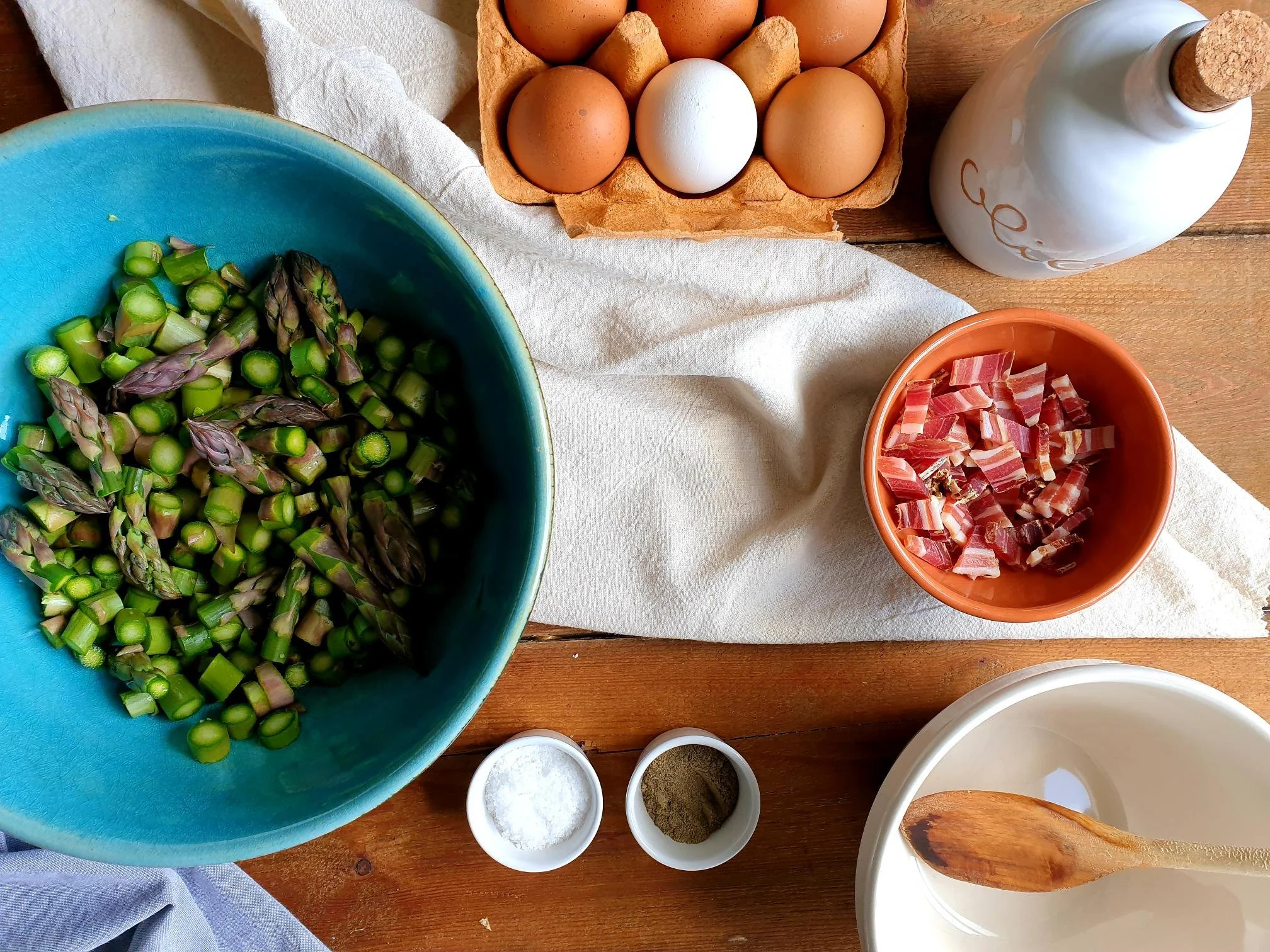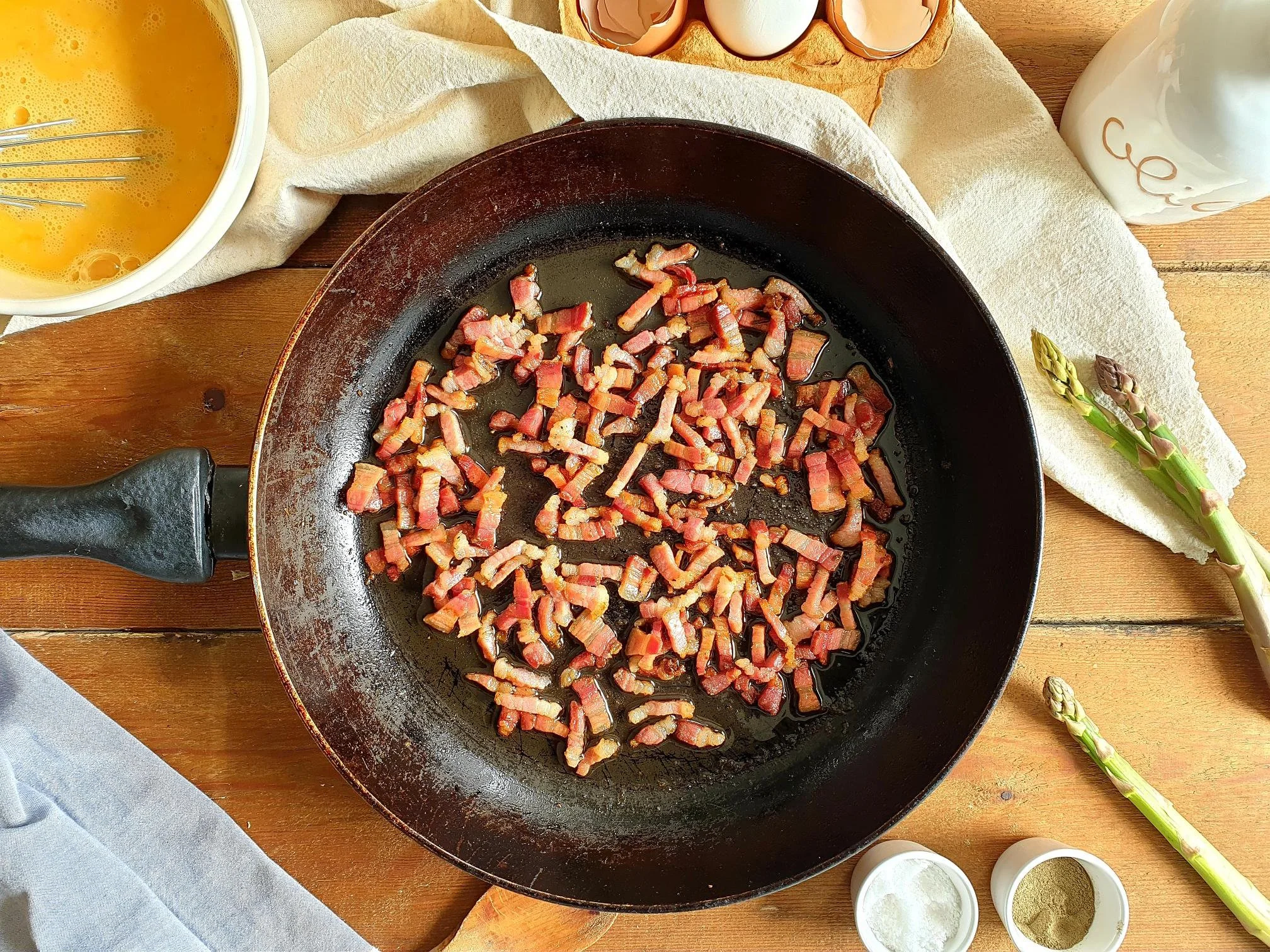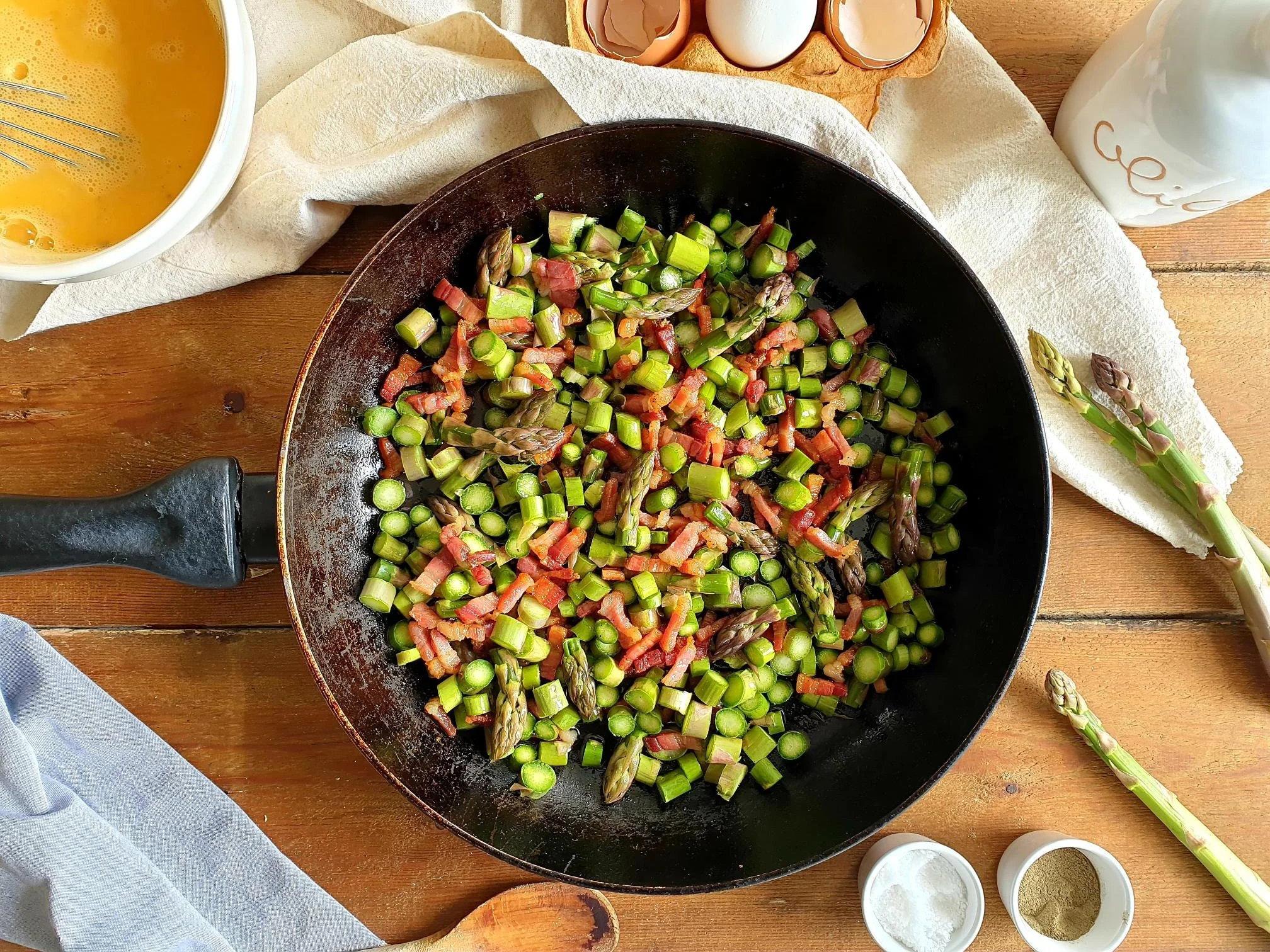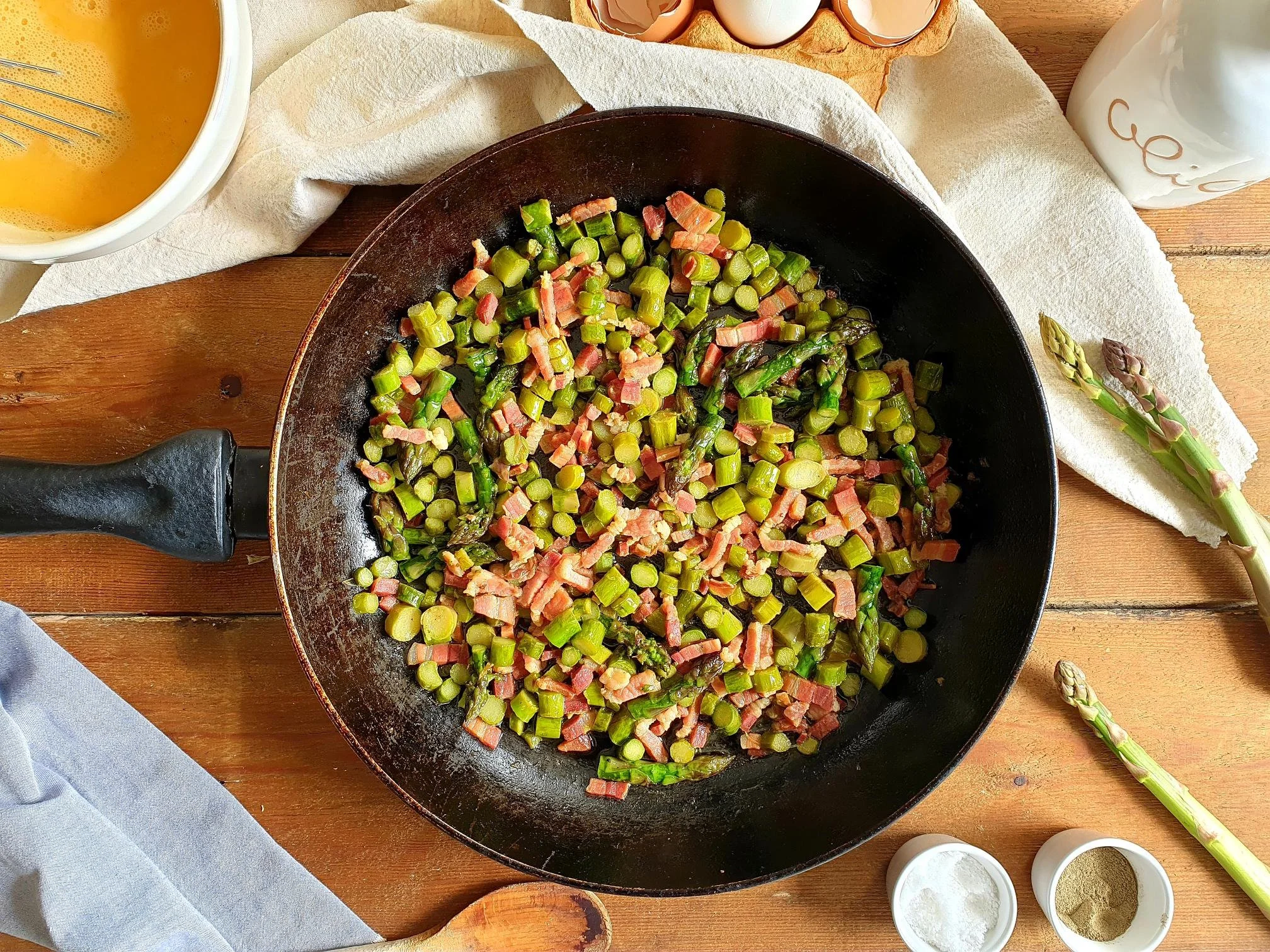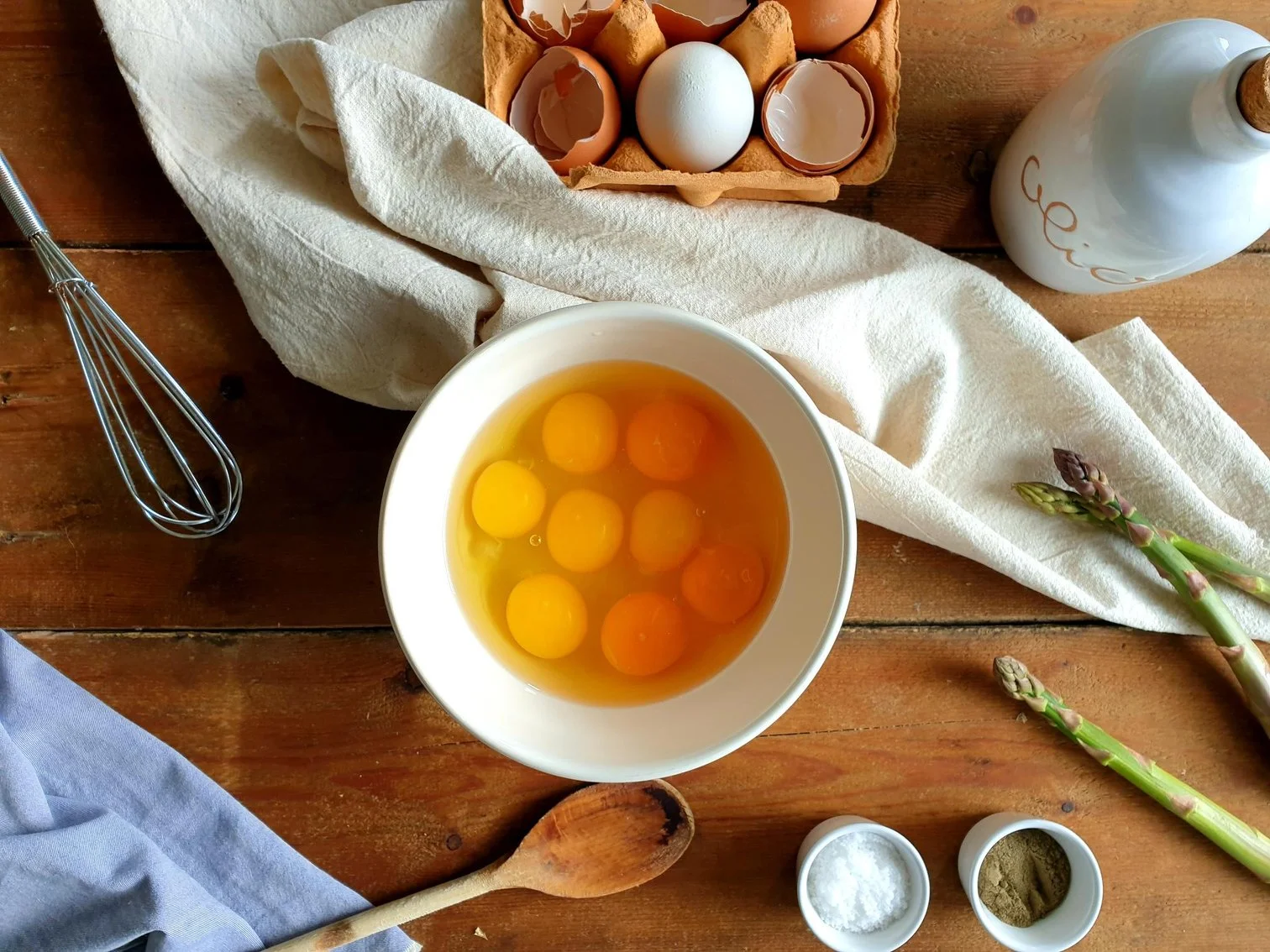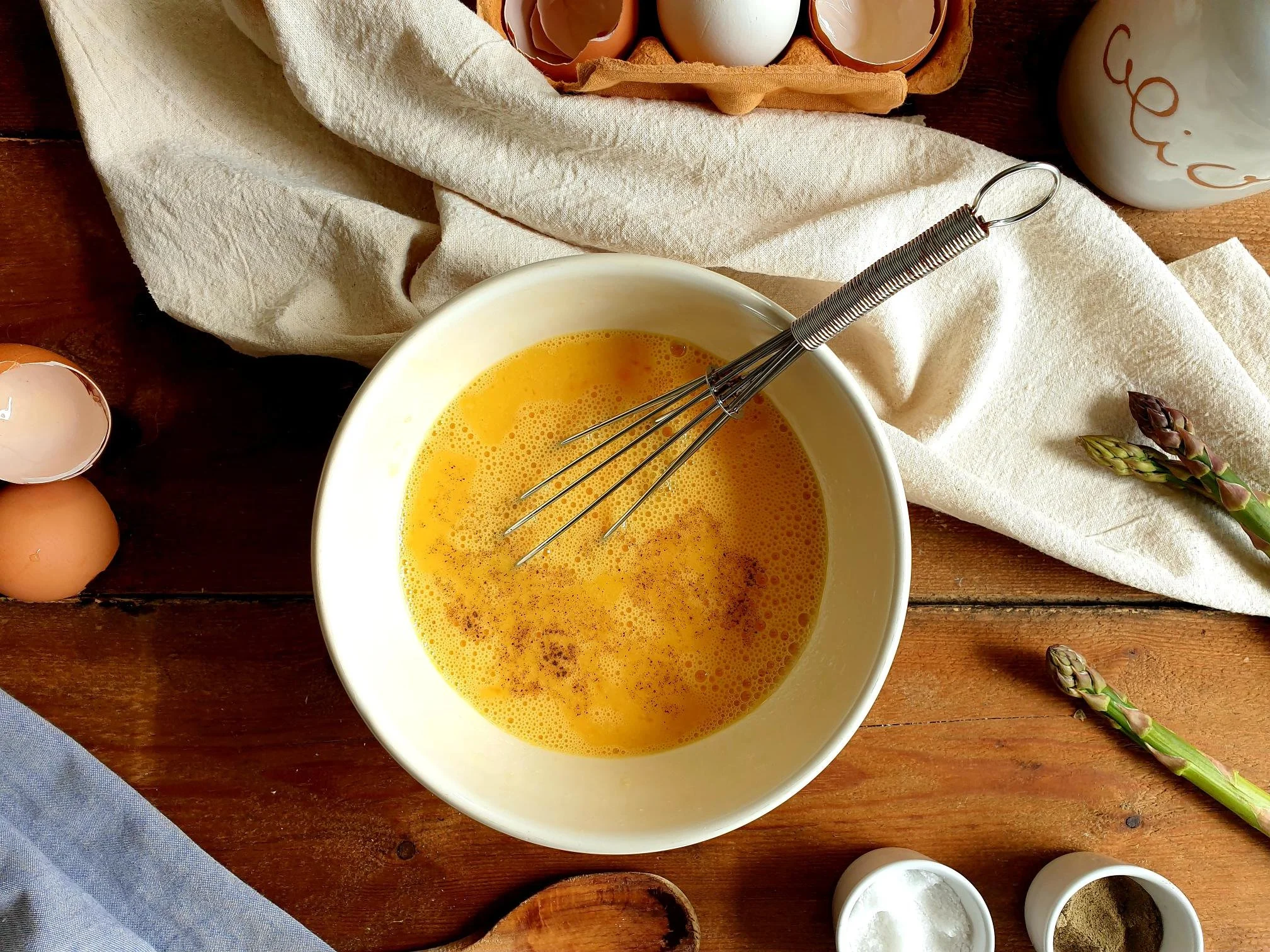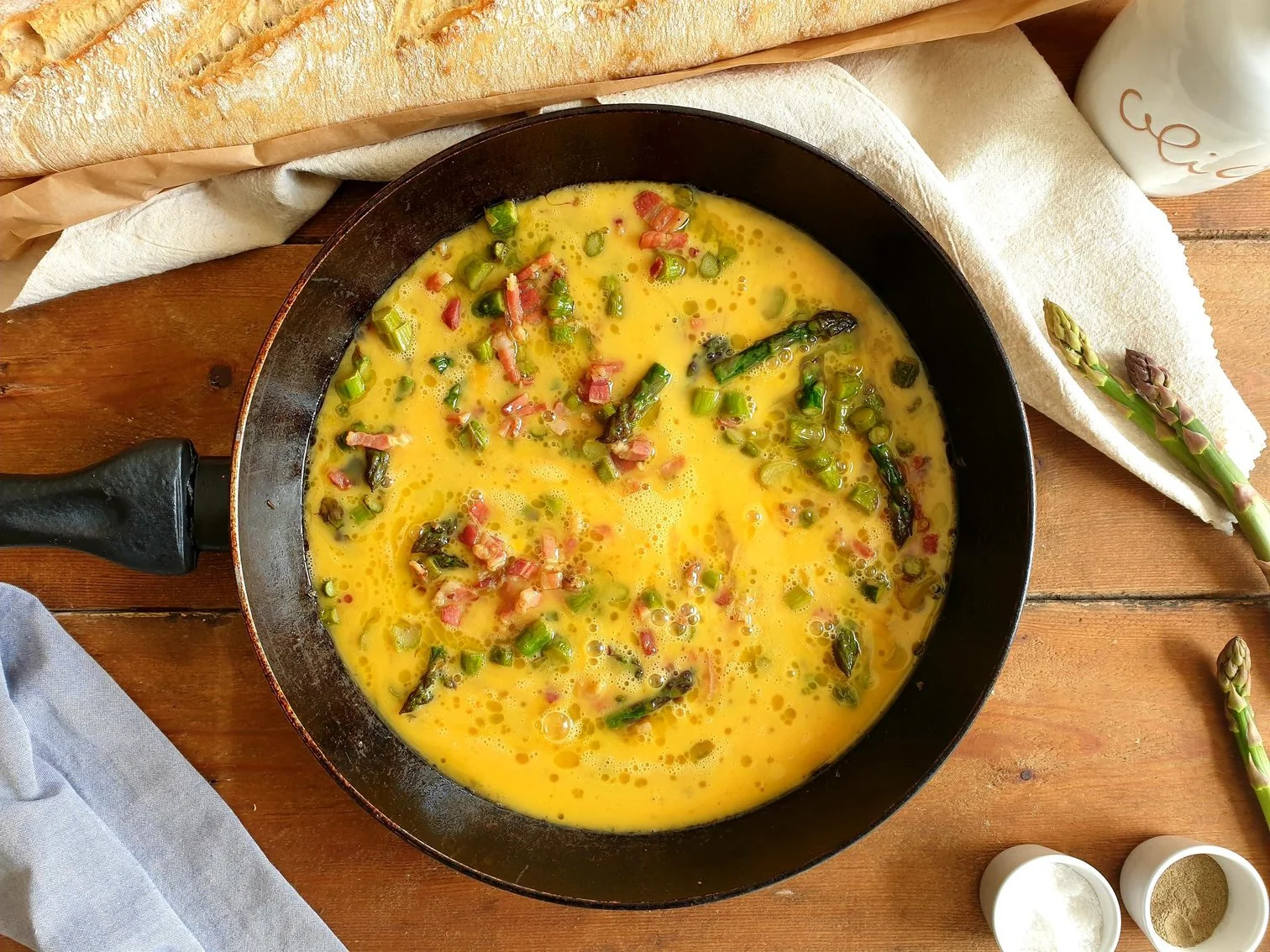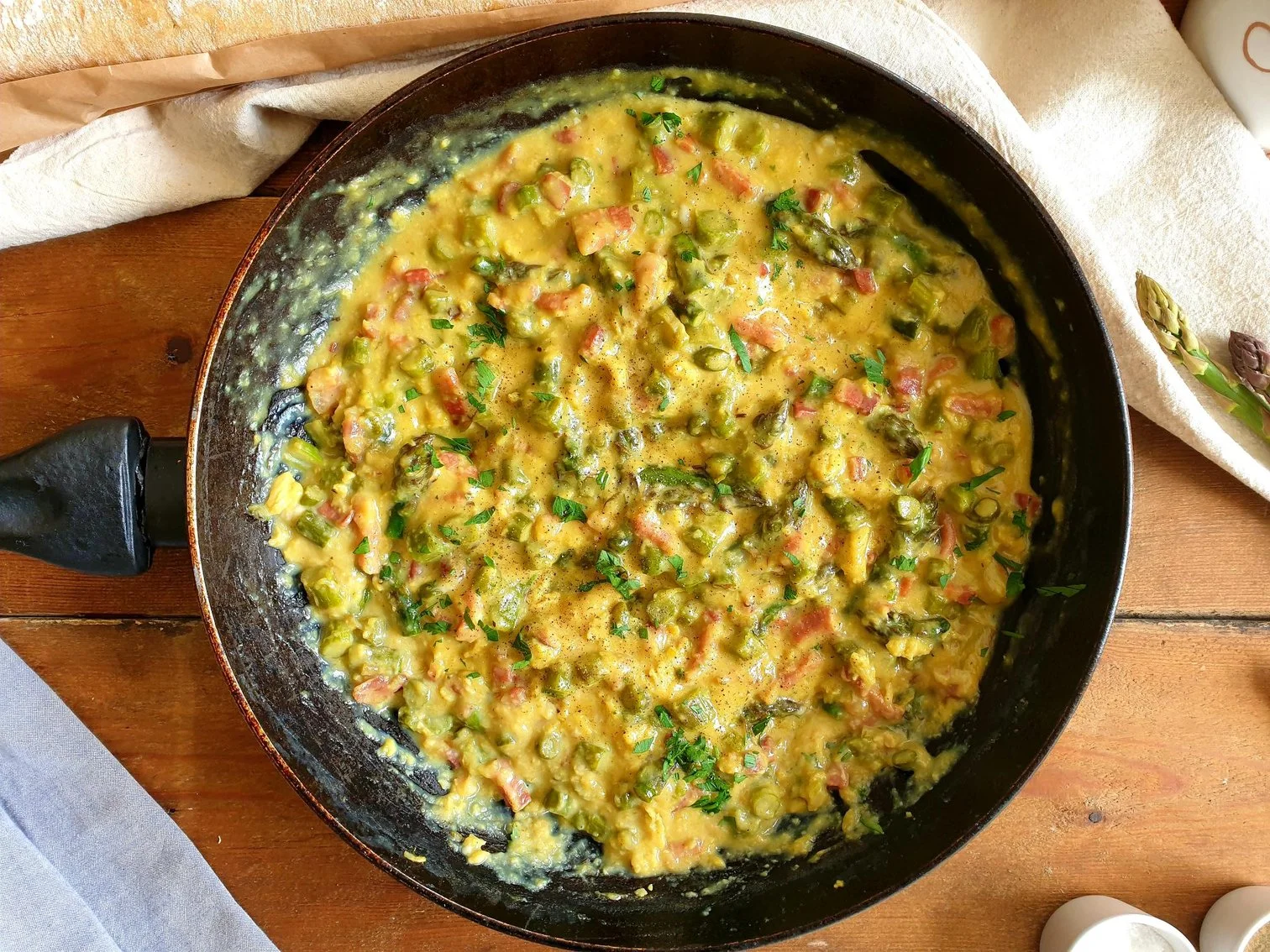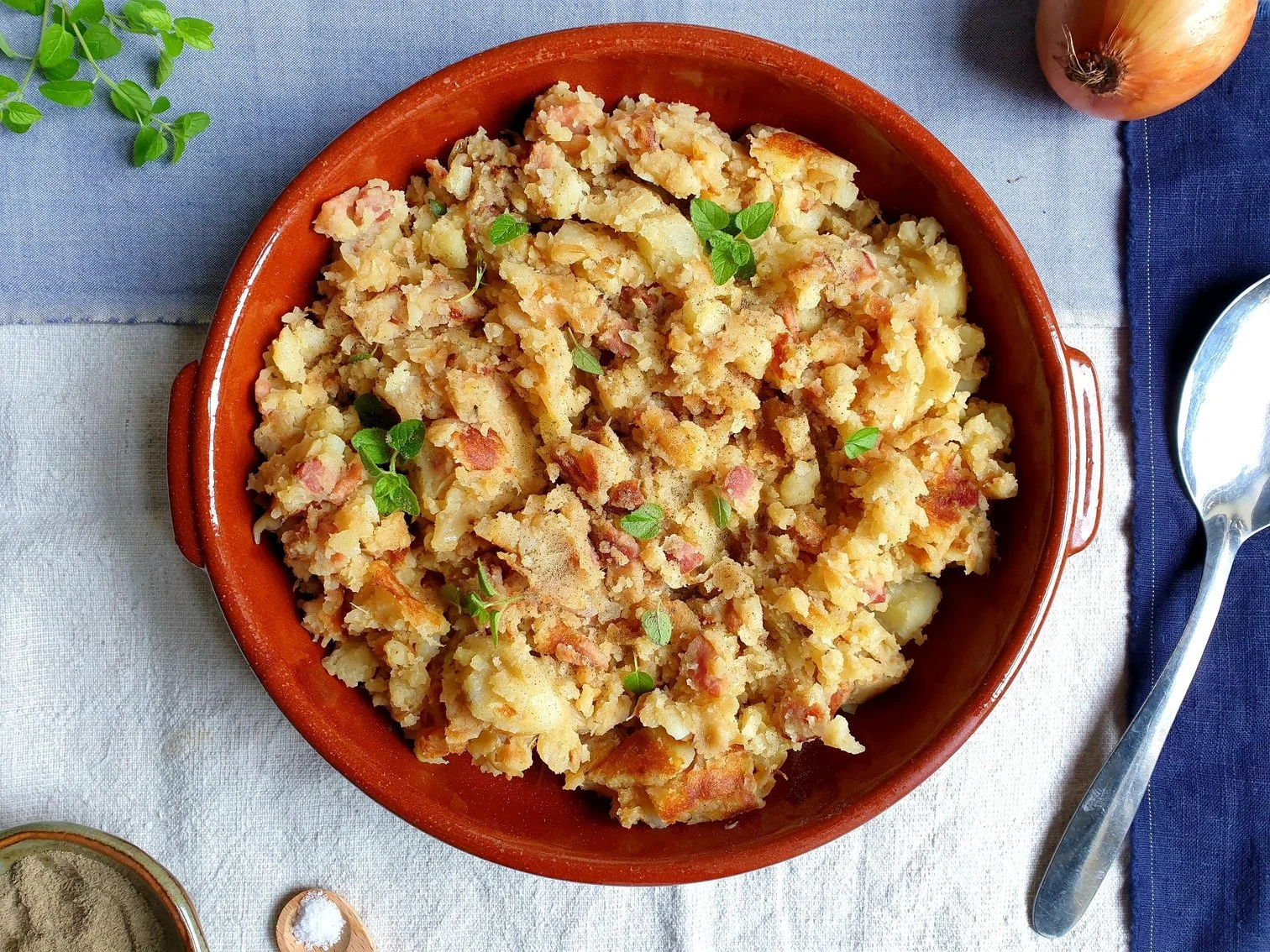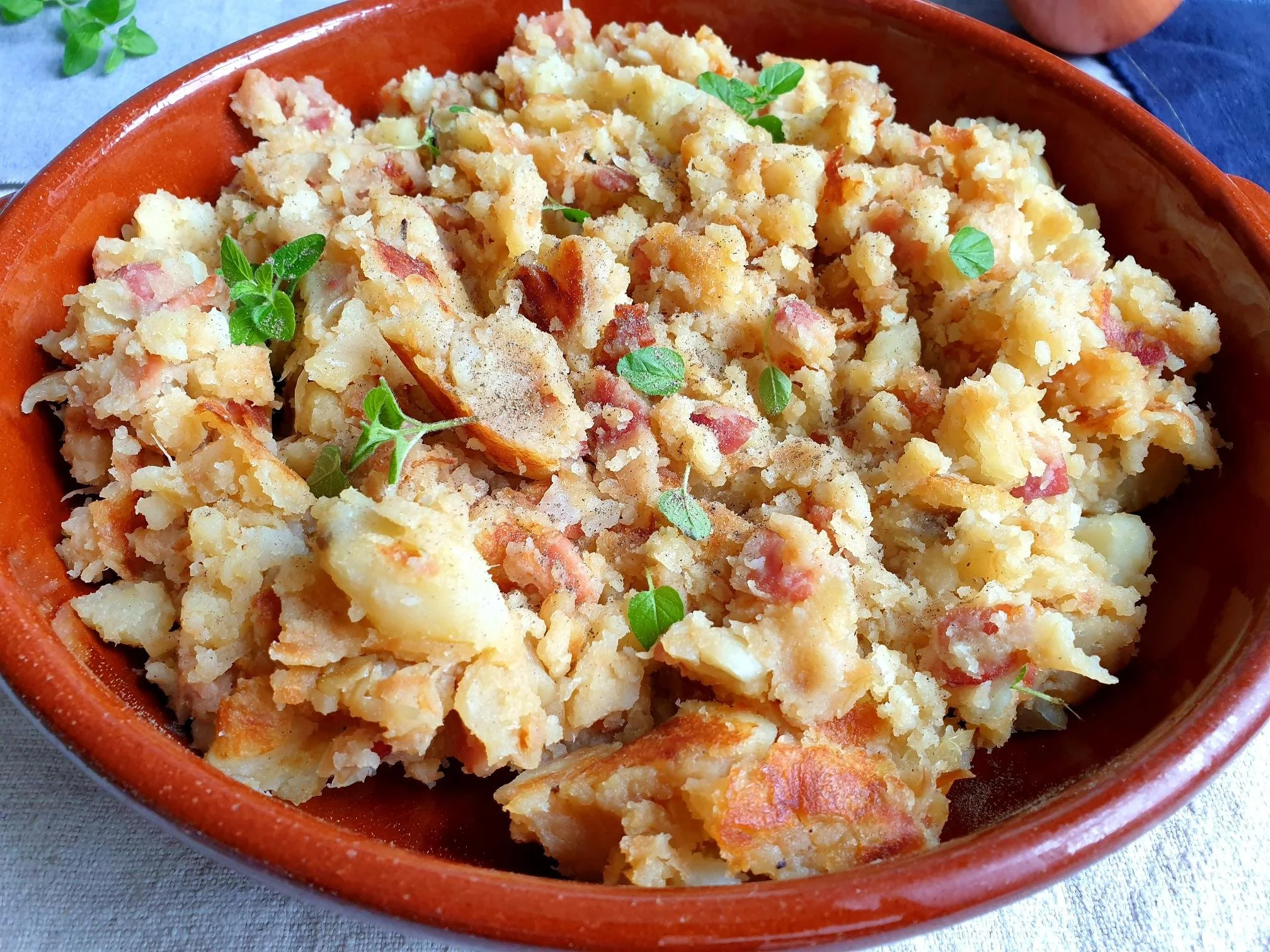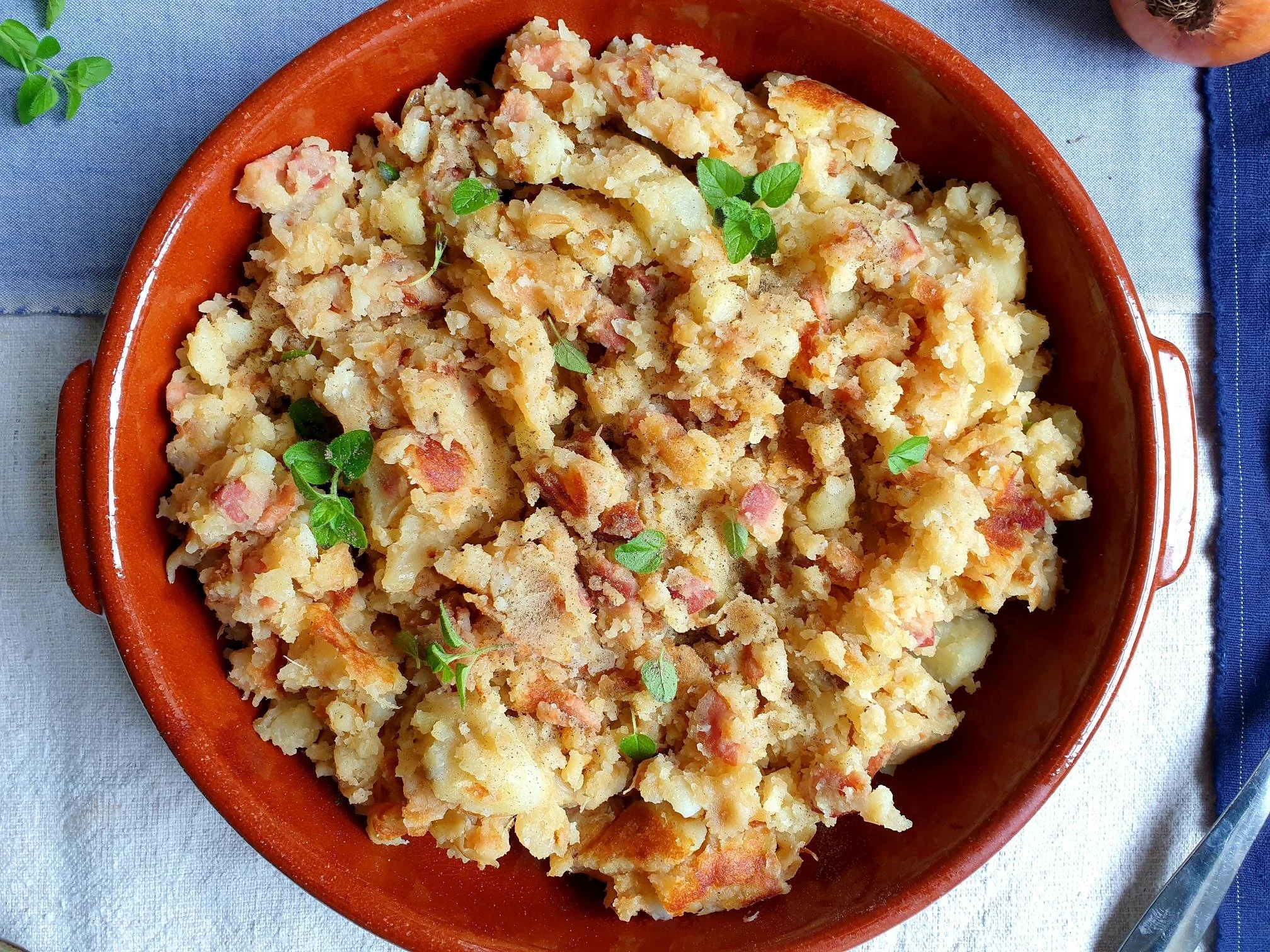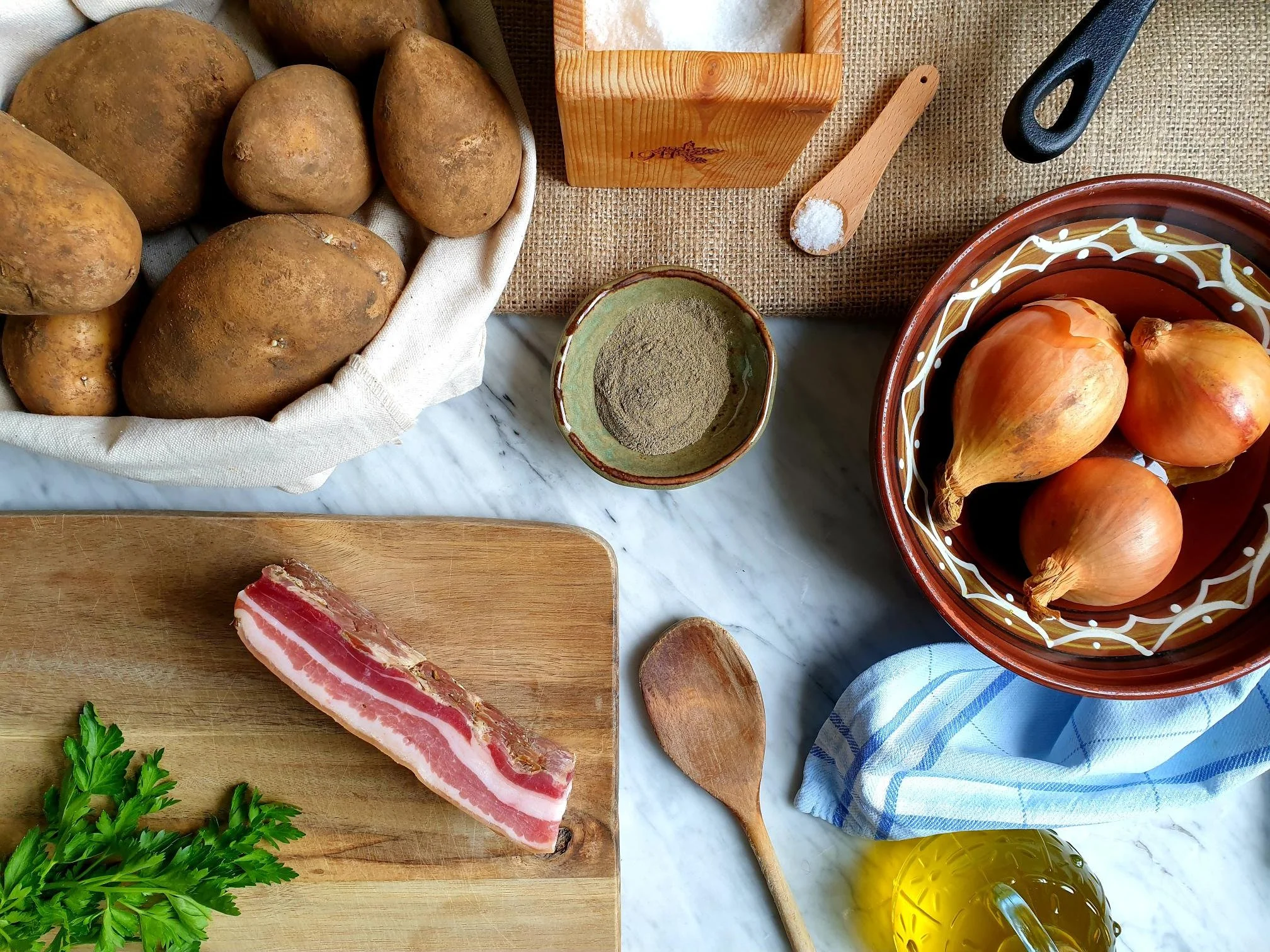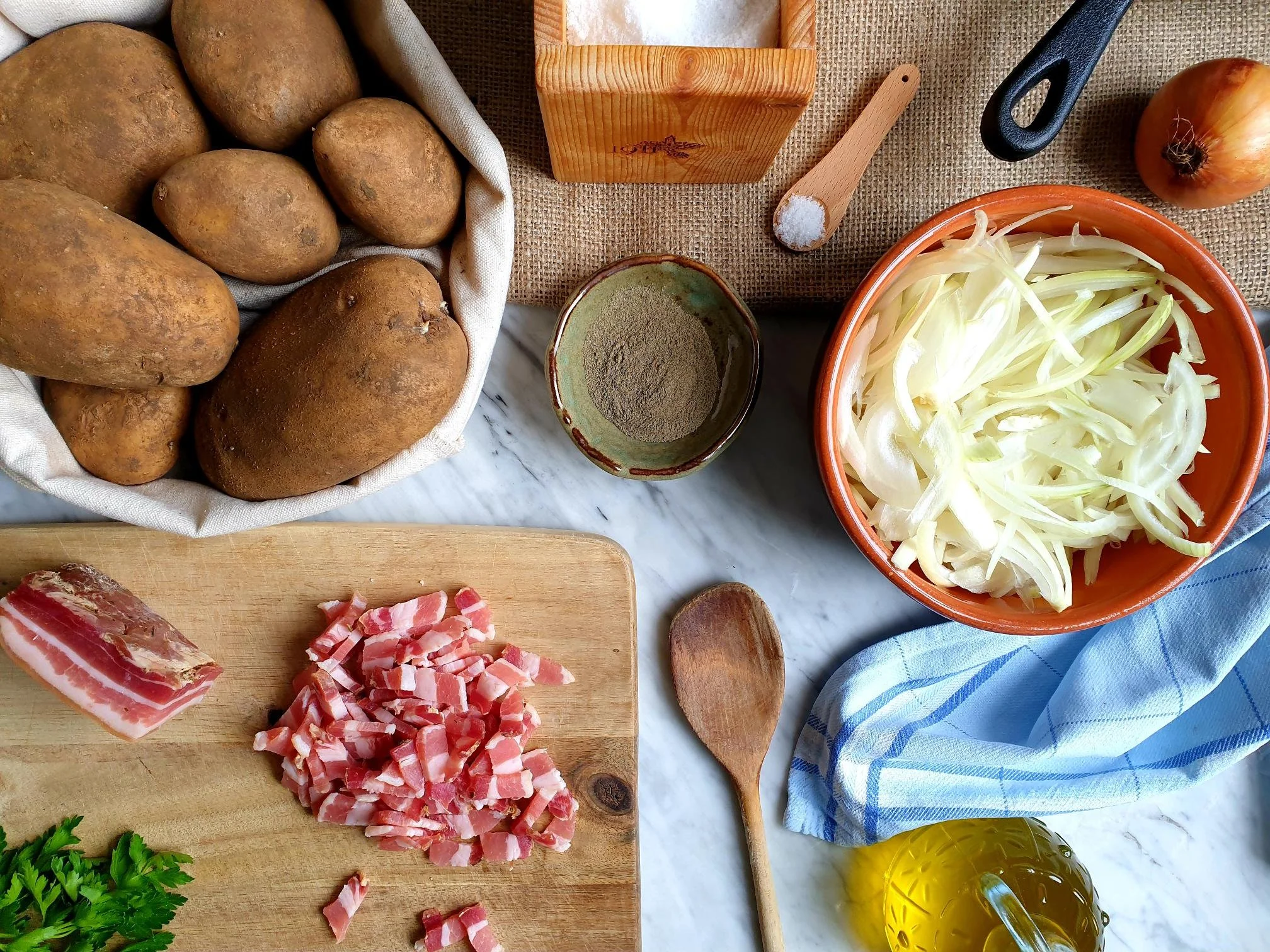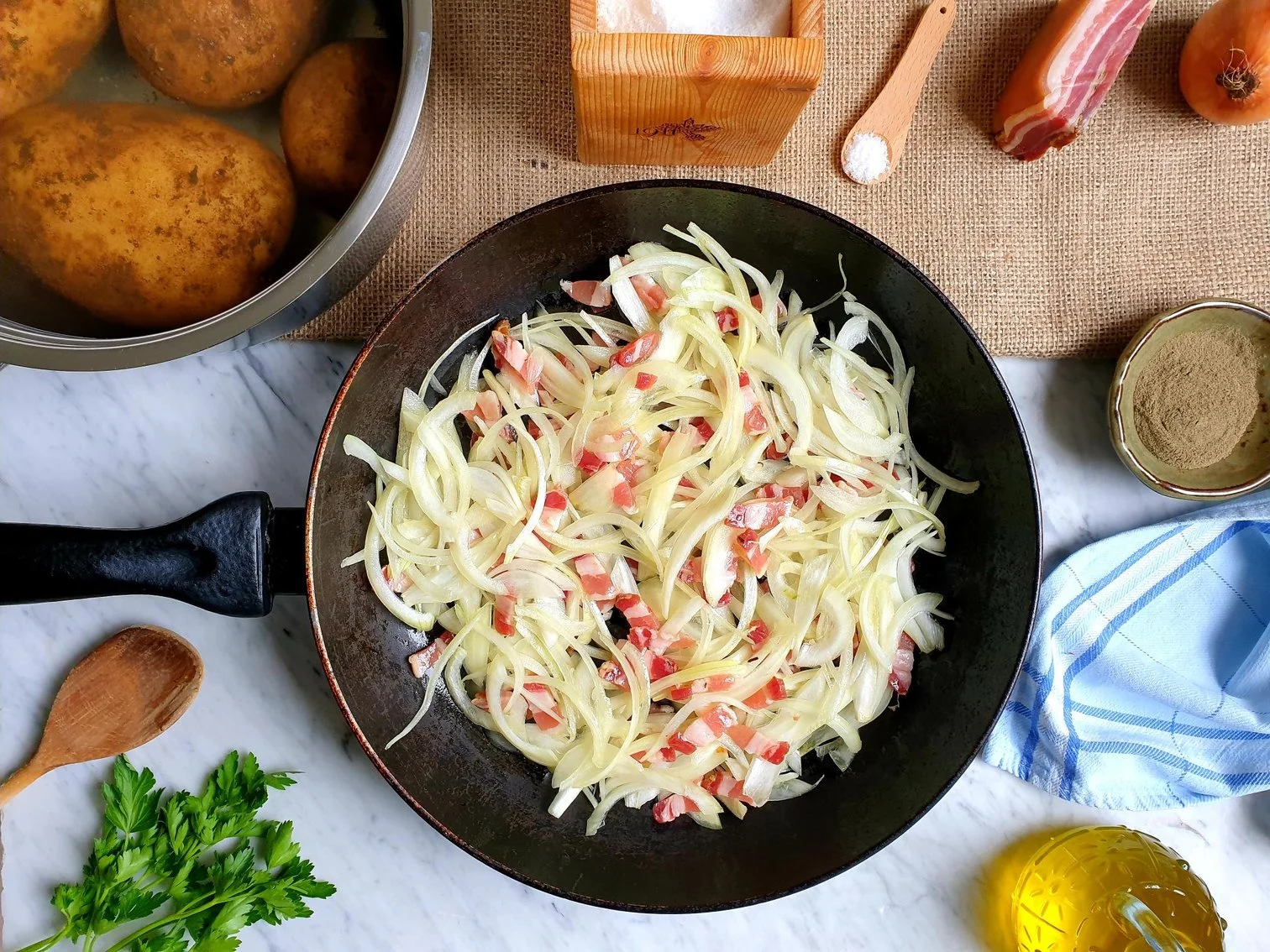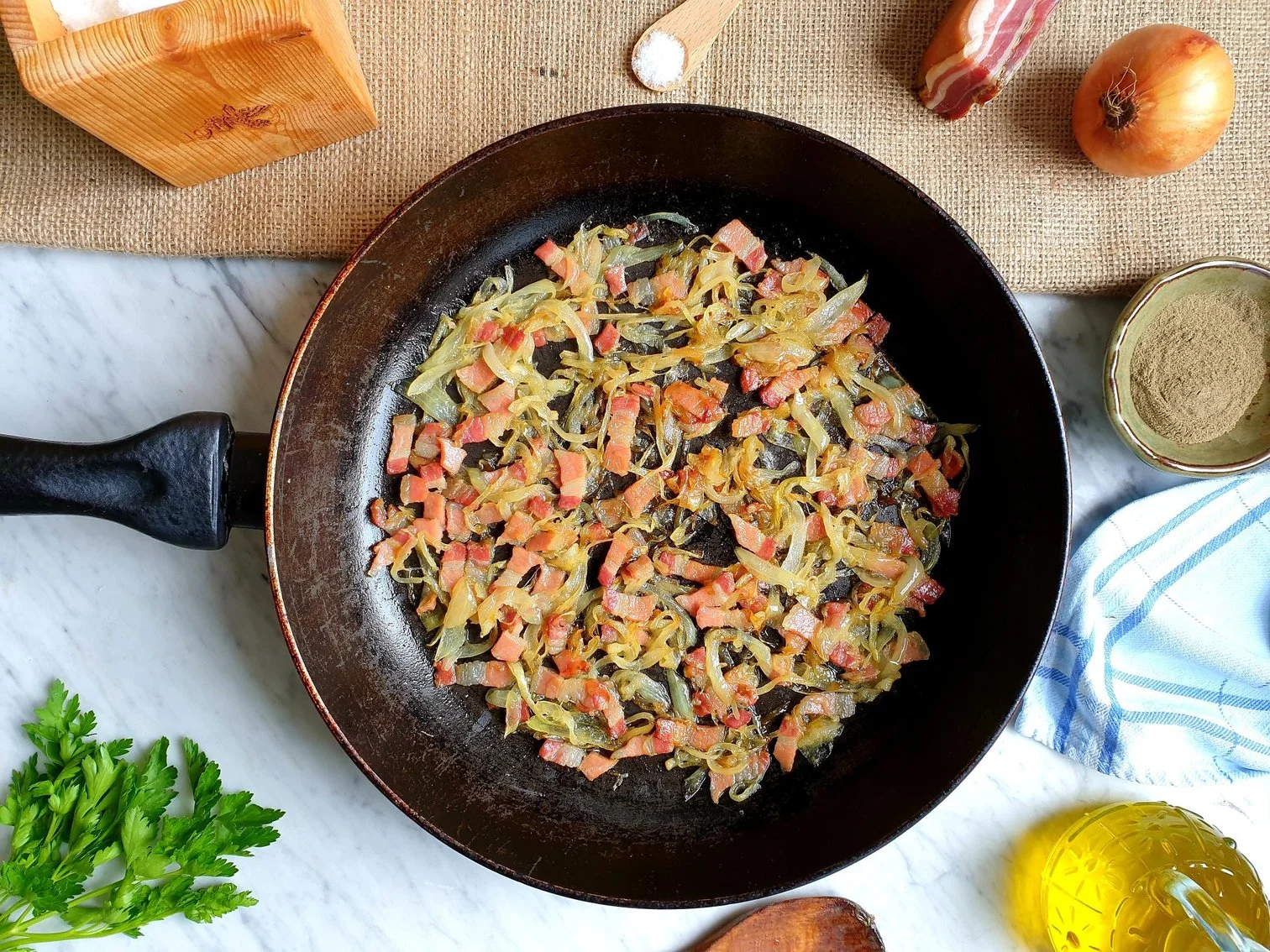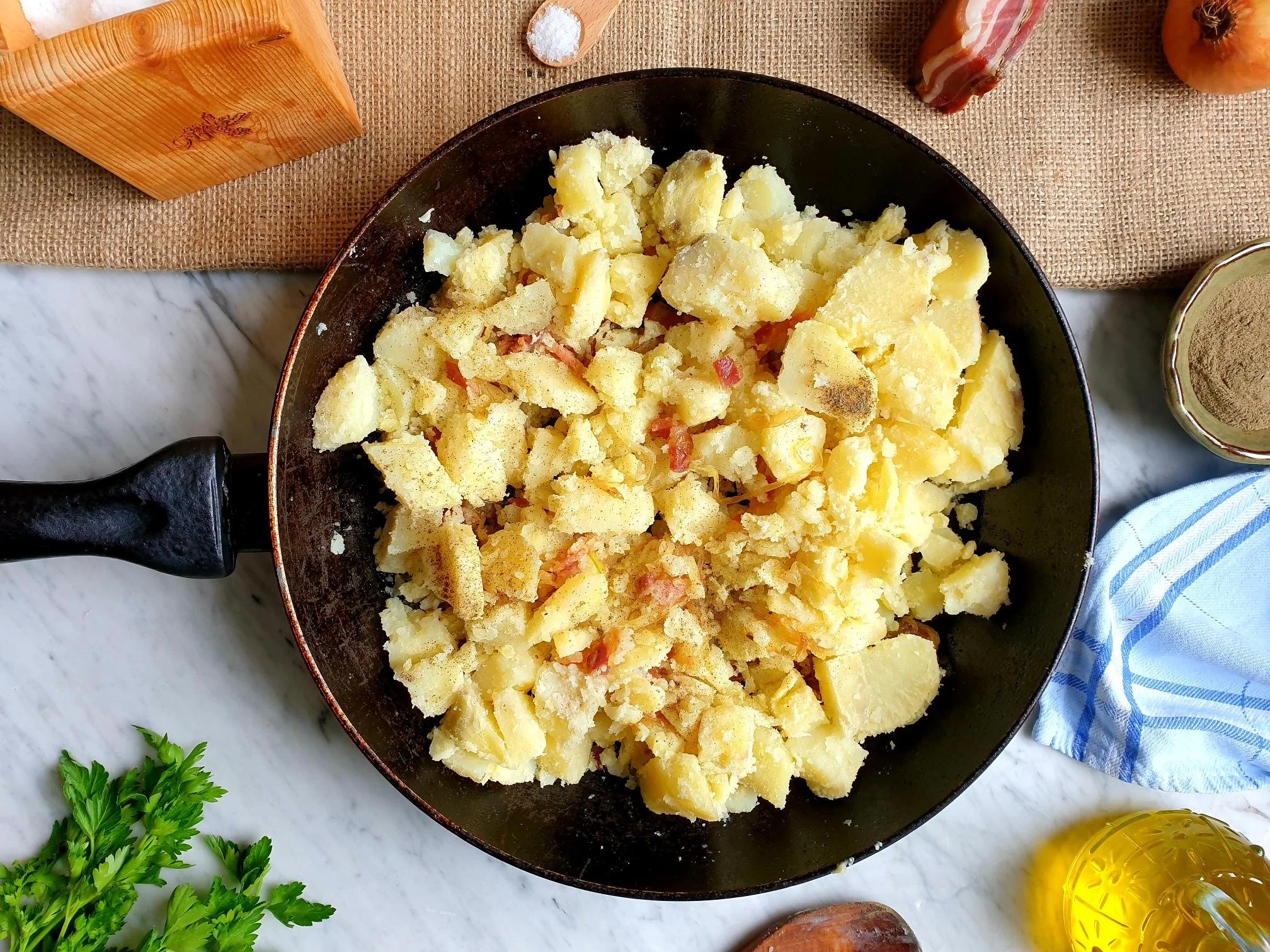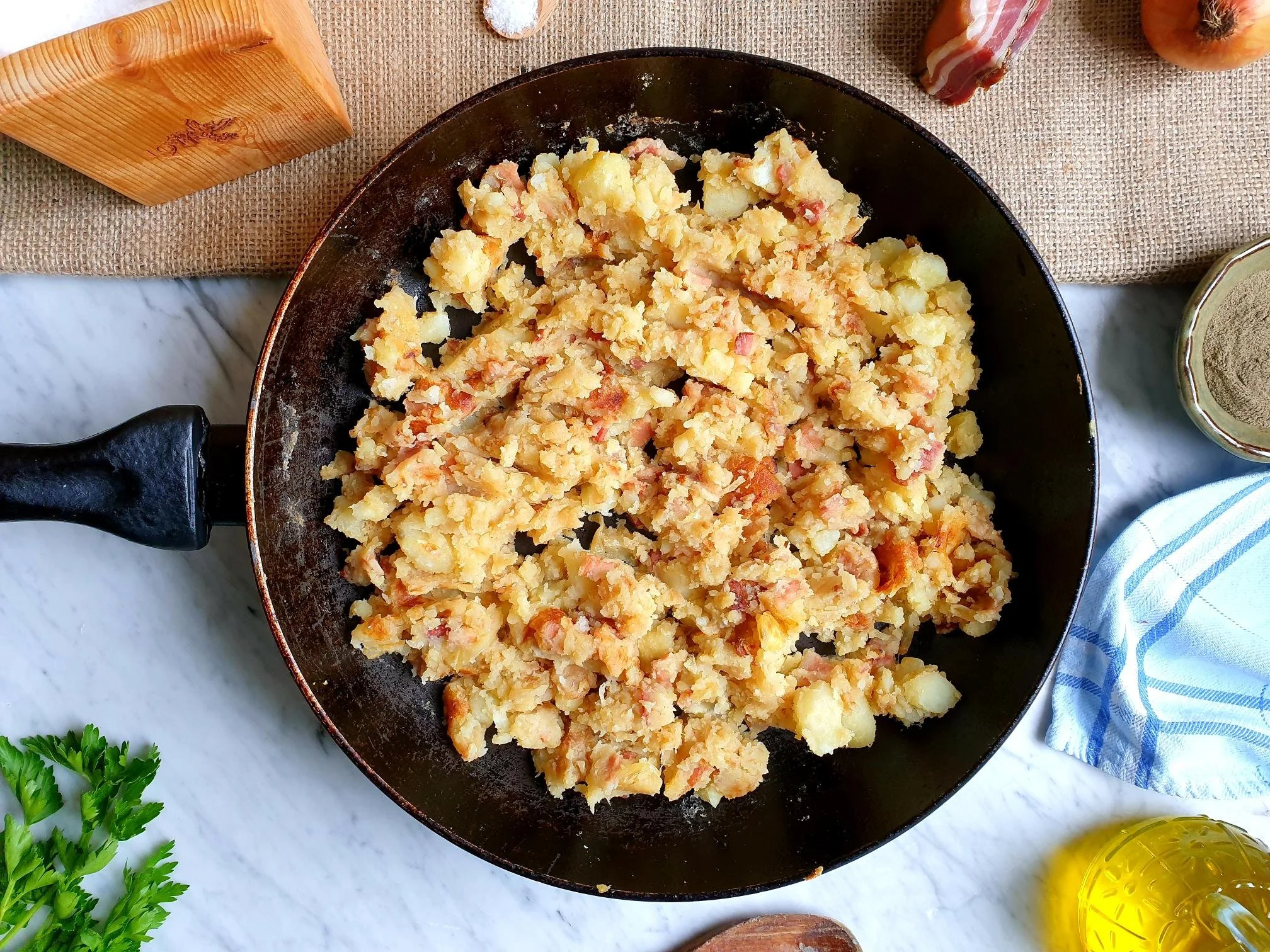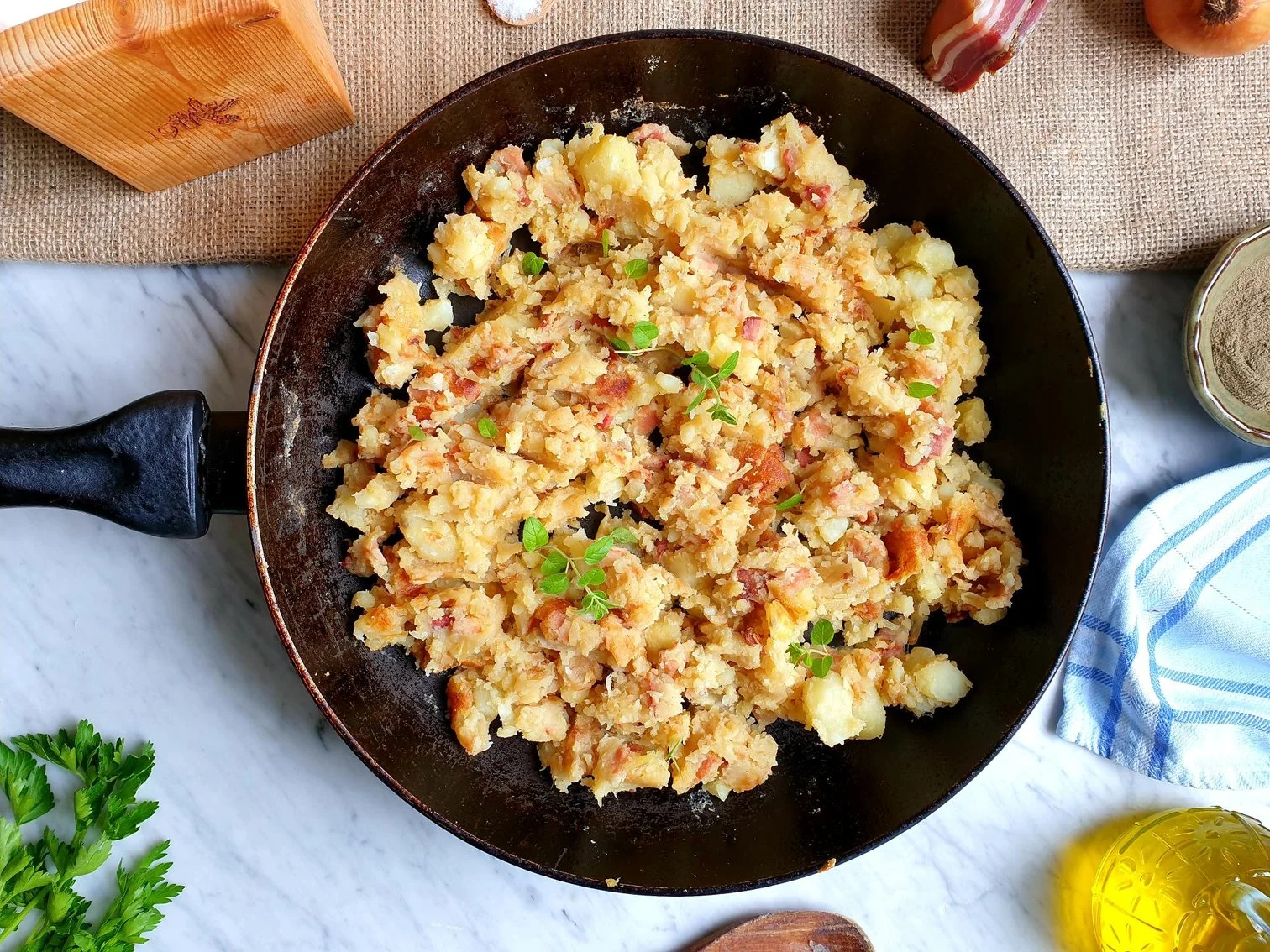Venetian style Rice and Peas Recipe (Risi e Bisi)
This springtime speciality dish Risi e Bisi, meaning rice and peas in Venetian dialect, originated in the north-eastern region of Veneto in Italy. It is a dish that has been long disputed in the culinary world whether it is a very ‘runny’ risotto or a very ‘thick’ soup, and hence whether you should eat it with the fork or with a spoonBeing a risotto or a soup, this dish is absolutely delicious, incredibly satisfying and deeply rooted in the history of the region. It has such a profound cultural significance to the point of being celebrated by the Venetian poet Domenico Varagnolo:
To bless the holy spring,
which makes a garden a paradise,
all I need is a soup bowl,
a soup bowl of our own risi e bisi...
There, in hundreds of tiny little globes,
I savour a tender green jewel of the earth
scattered in a white sea of tender smiles.
Risi e Bisi was one of the key dishes, among a menu of more sophisticated foods and fine wines, that used to be served at the Doge's banquet (Doge is the highest official of the republic of Venice for more than 1,000 years, from the 8th to the 18th century, and symbol of the sovereignty of the Venetian state) on April 25th to mark and celebrate Venice's patron Saint, St. Mark, the Evangelist, since he is the saint who evangelised the people of the Veneto.
This traditional dish served on a feast day also marked the period approaching Easter, the end of winter, and the arrival of Spring, which provided the very first peas in the new season, renowned for being small, sweet and tender.
This dish has been very popular and very much loved along the Slovenian coastline where it is known as Rizi e Bizi. This should come as no surprise since this area is bordering with Italy and was once dominated and ruled by the majestic La Serenissima (‘The most Serene Republic of Venice’) which left behind a significant “foodprint” in the region.
A pea and rice dish is a very family friendly meal and was cooked by my mother on a regular basis when the peas where in season and at their best. Shelling the peas was worth the effort since the final dish is divine in its simplicity and humbleness.
This recipe has remained one of the top favourites among family and friends. Try to make it and you will understand what the fuss is all about and why the Doge requested it every year at his palace...
This is not the dish I would normally cook in springtime as peas are a long way off in the UK where I currently live, but are widely available a bit later in the season. It is well worth waiting for them, and you will end up with unbeatable (late) summer or early autumn supper!
Recipe
Ingredients
Serves 4
1 kg fresh young peas in their pods, shelled (can use 400g of frozen petits pois)
1.2 litres good vegetable, chicken or beef stock
4 Tbsp olive oil
1 small onion (about 100g), peeled and finely chopped
50-100g pancetta (salt-cured pork belly) or ham, cubed
250g risotto rice like Vialone Nano, Arborio or Carnaroli
40-50g Parmiggiano Reggiano or Grana Padano cheese, freshly finely grated
small handful of fresh flat leaf parsley leaves (about 15g), finely chopped and some extra for garnish
a knob of butter, optional
sea salt
black pepper
Method
Before starting to make the risotto have your boiling hot stock ready to hand for later.
Pour the oil in a low-sided pan, add finely chopped onions and cubed pancetta.
Cook for a few minutes until the onions become soft and translucent and the pancetta begins to release its fat.
Add the peas and the chopped parsley, sauté for a few minutes, stirring constantly and making sure that the mixture does not start to stick to the bottom of the pan.
Season with black pepper and add roughly a glass of stock.
Cook the mixture over a fairly high heat so that the liquid evaporates quickly.
Add more stock and the rice. Cook, stirring constantly to prevent sticking to the pan, until the first amount of liquid is absorbed.
Start gradually adding ladles of hot stock, one at a time, allowing the liquid to be absorbed before adding more.
Cook on a medium heat, stirring almost constantly, until the rice is cooked and ready, and the mixture has a distinctly runny consistency.
Finish the dish with a typical Italian “mantecare phase” (when the rice is cooked, remove the saucepan from the heat, add a knob of butter (if using), and finely grated Parmiggiano Reggiano or Grana Padano cheese. Stir quite vigorously with a wooden spoon to obtain a creamy consistency).
Taste and adjust the seasoning with black pepper (if using) and the sea salt, but the latter might not be necessary since the stocks from the stores, generally speaking, pancetta and the cheese contain salt already.
Serve immediately while still hot and distinctly runny in consistency.
Ladle onto the plates and sprinkle with some roughly chopped fresh parsley to garnish (optional).
Just a thought
A variation of this recipe, which further refines the dish, involves the use of the empty pea pods which get washed, placed in pan with a plenty of cold water and boiled for roughly an hour.
Then they get drained in a colander and the inside of the shells get scraped with the spoon obtaining the green paste which is added to the onion, pancetta, pea and parsley mixture.
I have not been familiar with this process and made aware that this is only done if the peas are organically produced.
Apparently, all the pesticides residues concentrate on the inside of the pea shell and the farmers are very keen on the use of the chemicals as peas are particularly susceptible to pests.

